germ theory of disease
description: Prevailing theory about the cause of infectious diseases
87 results

The Great Escape: Health, Wealth, and the Origins of Inequality
by
Angus Deaton
Published 15 Mar 2013
Wages were high in Britain after its success in the Age of Empire, and those high wages, together with plentiful coal, provided incentives for inventors and manufacturers to come up with the inventions that powered the Industrial Revolution.10 The British Enlightenment, with its relentless search for self-improvement, provided fertile intellectual soil in which those inventions were more likely to come about.11 The cholera epidemics of the nineteenth century were an impetus for crucial discoveries about the germ theory of disease. And the well-funded medical research arising from the HIV/AIDS pandemic of today uncovered the virus and developed medicines that, while not curing the disease, greatly extend the lives of those who are infected. Yet there are also cases in which inspiration never came, in which needs and incentives failed to produce a magic solution, or even a mundane one.
…
In England of the eighteenth century, globalization brought new medicines and new treatments that saved many lives—but mostly the lives of those who could afford them. While the new methods eventually lowered death rates for everyone, it was the aristocracy whose life chances first pulled away from those of the common people. By the end of the nineteenth century, the development and acceptance of the germ theory of disease had set the stage for another explosion of progress as well as for the opening up of another great chasm—this time between the life chances of those who were born in rich countries and the chances of those who were not. I tell the story of the fight to save the lives of children in the world that was left behind.
…
I shall return to measures of happiness and life satisfaction in the next chapter, but my main purpose there is to look more widely at the wellbeing of the world today—at those who have made the Great Escape, and then some, as well as those who are still waiting. ONE The Wellbeing of the World THE GREATEST ESCAPE in human history is the escape from poverty and death. For thousands of years, those who were lucky enough to escape death in childhood faced years of grinding poverty. Building on the Enlightenment, the Industrial Revolution, and the germ theory of disease, living standards have increased by many times, life spans have more than doubled, and people live fuller and better lives than ever before. The process is still going on. My father lived twice as long as either of my grandfathers; his real income as a civil engineer was many times the income of his father, who was a coal miner; and my education and income as a professor greatly exceed his education and his income.
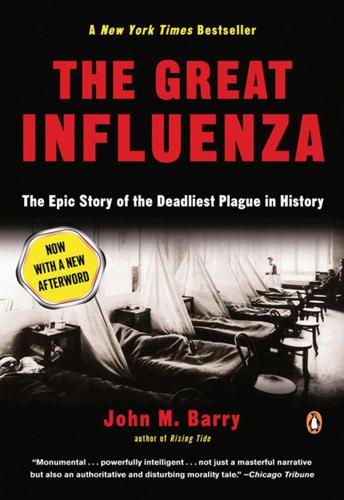
The Great Influenza: The Story of the Deadliest Pandemic in History
by
John M. Barry
Published 9 Feb 2004
“poisoning of half the population”: John Duffy, A History of Public Health in New York City 1866–1966 (1974), 113. the zymote theory: For more on zymotes see Phyllis Allen Richmond, “Some Variant Theories in Opposition to the Germ Theory of Disease,” Journal of the History of Medicine and Allied Sciences (1954), 295. laurel wreath “such are given to the brave”: Paul De Kruif, Microbe Hunters (1939), 130. “What was theory”: Charles Chapin, “The Present State of the Germ Theory of Disease,” Fists Fund Prize Essay (1885), unpaginated, Chapin papers, Rhode Island Historical Society. “powerless to create an epidemic”: Michael Osborne, “French Military Epidemiology and the Limits of the Laboratory: The Case of Louis-Felix-Achille Kelsch,” in Andrew Cunningham and Perry Williams, eds., The Laboratory Revolution in Medicine (1992), 203.
…
Military Surgeon 43 (Feb. 1919). Rice, G. “Christchurch in the 1918 Influenza Epidemic: A Preliminary Study.” New Zealand Journal of History 13 (1979): 109–37. Richmond, Phyllis Allen. “American Attitudes Toward the Germ Theory of Disease, 1860–1880.” Journal of the History of Medicine and Allied Sciences 9 (1954): 428–54. _____. “Some Variant Theories in Opposition to the Germ Theory of Disease.” Journal of the History of Medicine and Allied Sciences 9 (1954): 290–303. Rivers, Thomas. “The Biological and the Serological Reactions of Influenza Bacilli Producing Meningitis.” Journal of Experimental Medicine 34, no. 5 (Nov. 1, 1921): 477–94. _____.
…
Thomson, J. B. “The 1918 Influenza Epidemic in Nashville.” Journal of the Tennessee Medical Association 71, no. 4 (April 1978): 261–70. Tomes, Nancy. “American Attitudes Toward the Germ Theory of Disease: The Richmond Thesis Revisited.” Journal of the History of Medicine and Allied Sciences 52, no. 1 (Jan. 1997): 17–50. Tomes, Nancy, and Warner John Harley. “Introduction—Rethinking the Reception of the Germ Theory of Disease: Comparative Perspectives.” Journal of the History of Medicine and Allied Sciences 52, no. 1 (Jan. 1997): 7–16. Tomkins, S. M. “The Failure of Expertise: Public Health Policy in Britain During the 1918–19 Influenza Epidemic.”

The Rise and Fall of American Growth: The U.S. Standard of Living Since the Civil War (The Princeton Economic History of the Western World)
by
Robert J. Gordon
Published 12 Jan 2016
Louis Pasteur, Joseph Lister, and Robert Koch have been described as “the remarkable trio who transformed modern medicine.”89 Although individuals such as Pasteur and Koch often get credit for individual cures, progress was a team effort as scientists from the United States and several European countries replicated and improved on the early experiments. Though some doctors welcomed these new discoveries, others did not and were often hostile to the germ theory of disease. It was not unusual “for well-known physicians to get up and leave the hall when medical papers were being read which emphasized the germ theory of disease. They wanted to express their contemptuous scorn for such theories and refused to listen to them.”90 Because of warring factions and different philosophies of medical science, the history of medical schools in the nineteenth century is “a tale of schisms, conspiracies, and coups, often destroying the institutions in the process.”91 Part of the deep divisionresulted from widespread acceptance of homeopathy, not just skepticism about the germ theory.92 Other reasons for the hostility was a widespread suspicion of science, a refusal to believe that widespread epidemics could be caused by nearly invisible microorganisms, and the threat to physicians’ expertise in prescribing the palliative drugs available at the time.
…
Many sources of the higher standard of living are not included in GDP at all, starting with the enormous advance in the quality of housing represented by the replacement of outhouses by indoor plumbing and the replacement of wood fires and potbelly stoves by central heating. The invention of the antibiotic penicillin might save thousands of lives, each of great value, but the GDP statistics would record only the expenses of the labor and equipment used in its discovery and production. Other similar examples include Pasteur’s germ theory of disease and the attendant emphasis on soap and cleanliness, the development of urban sanitation infrastructure that made indoor plumbing possible, and the realization in the late nineteenth century that some food being sold was tainted, adulterated, or diluted. A final dimension of improvement is the indirect effect of increased life expectancy in providing leisure and locational choice after retirement from work.
…
Although this book is about the United States, many of the inventions were made by foreigners in their own lands or by foreigners who had recently transplanted to America. Among the many foreigners who deserve credit for key elements of the Great Inventions are transplanted Scotsman Alexander Graham Bell for the telephone, Frenchmen Louis Pasteur for the germ theory of disease and Louis Lumière for the motion picture, Englishmen Joseph Lister for antiseptic surgery and David Hughes for early wireless experiments, and Germans Karl Benz for the internal combustion engine and Heinrich Hertz for key inventions that made possible the 1896 wireless patents of the recent Italian immigrant Guglielmo Marconi.

Empire of the Scalpel: The History of Surgery
by
Ira Rutkow
Published 8 Mar 2022
“Practising on Principle: Joseph Lister and the Germ Theories of Disease.” In Medical Theory, Surgical Practice: Studies in the History of Surgery, edited by C. Lawrence, 153–215. London: Routledge, 1992. Nuland, S. B. Doctors: The Biography of Medicine, 343–385. New York: Alfred A. Knopf, 1988. Porter, J. R. “Louis Pasteur: Achievements and Disappointments.” Bacteriological Reviews 25 (1961): 389–403. Porter, R. The Greatest Benefit to Mankind: A Medical History of Humanity. New York: HarperCollins, 1997. Richmond, P. A. “American Attitudes toward the Germ Theory of Disease (1860–1880).” Journal of the History of Medicine 9 (1954): 428–454.
…
That these low forms of animal life may seriously affect the blood of the higher orders of animals, is clearly proved.3 Unfortunately, neither surgeon’s ideas garnered much attention. Few scalpel wielders were intellectually ready to accept the fact that germs existed, they were living creatures, and they could harm patients. Besides, even if surgeons believed in the germ theory of disease, how could they control the negative effects of bacteria? Unlike Pasteur, who boiled liquids to destroy microorganisms, surgeons would not find it possible to heat a surgical patient to such an extent. Hence, no attempts were made to test the germ theory of putrefaction as it related to surgery.
…
Confident of his results, Lister began to use a declarative and simple expression when discussing his research: “the element of incurability has been eliminated.”18 One might think that the news of Lister’s monumental breakthrough, first published in 1867, would have been received with great fanfare. However, much like the incredulity that followed the introduction of anesthesia twenty years earlier, the news of antisepsis was met with both indifference and opposition. Surgeons were baffled by the germ theory of disease, which was the foundation of Lister’s system. They could not or did not believe in the existence of microorganisms as another form of life. Even when the presence of bacteria was accepted, they were deemed harmless contaminants and never the source of infection. Denials aside, it must have been a discomfiting and humbling task for surgeons to come to terms with the distressing fact that, since time immemorial, they had been inadvertently harming and killing patients by allowing incisions to be infected with invisible living organisms while filling with “laudable” pus.
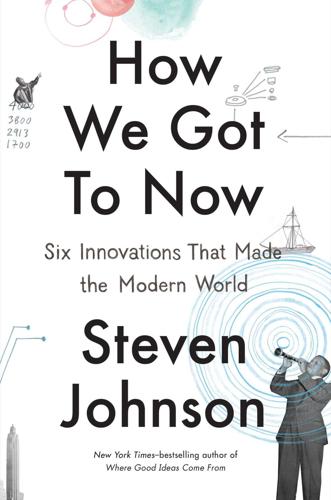
How We Got to Now: Six Innovations That Made the Modern World
by
Steven Johnson
Published 28 Sep 2014
Chicago’s experience was replicated around the world: sewers removed human waste from people’s basements and backyards, but more often than not they simply poured it into the drinking water supply, either directly, as in the case of Chicago, or indirectly during heavy rainstorms. Drawing plans for sewer lines and water pipes on the scale of the city itself would not be sufficient for the task of keeping the big city clean and healthy. We also needed to understand what was happening on the scale of microorganisms. We needed both a germ theory of disease—and a way to keep those germs from harming us. — WHEN YOU GO BACK to look at the initial reaction from the medical community to the germ theory, the response seems beyond comical; it simply doesn’t compute. It is a well-known story that the Hungarian physician Ignaz Semmelweis was roundly mocked and criticized by the medical establishment when he first proposed, in 1847, that doctors and surgeons wash their hands before attending to their patients.
…
But the evangelists for bathing were supported by the convergence of several important scientific and technological developments. Advances of public infrastructure meant that people were much more likely to have running water in their homes to fill their bathtubs; that the water was cleaner than it had been a few decades earlier; and, most important, that the germ theory of disease had gone from fringe idea to scientific consensus. This new paradigm had been achieved through two parallel investigations. First, there was the epidemiological detective work of John Snow in London, who first proved that cholera was caused by contaminated water and not miasmatic smells, by mapping the deaths of a Soho epidemic.
…
These new lenses enabled the microbiological work of scientists such as Robert Koch, one of the first scientists to identify the cholera bacterium. (After receiving the Nobel Prize for his work in 1905, Koch wrote to Carl Zeiss, “A large part of my success I owe to your excellent microscopes.”) With his great rival Louis Pasteur, Koch and his microscopes helped develop and evangelize the germ theory of disease. From a technological standpoint, the great nineteenth-century breakthrough in public health—the knowledge that invisible germs can kill—was a kind of team effort between maps and microscopes. Today, Koch is rightly celebrated for the numerous microorganisms that he identified through those Zeiss lenses.
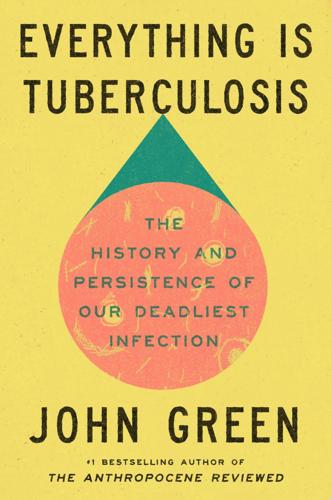
Everything Is Tuberculosis: The History and Persistence of Our Deadliest Infection
by
John Green
Published 18 Mar 2025
Other Greeks, including the physician Galen, believed the disease to be contagious. In ancient India, consumption was understood to be caused by excessive fatigue, anxiety, and hunger. In other communities, it was seen to be the result of a curse, or a poison, or demon possession. Some classical thinkers did even approach a germ theory of disease long before microscopy could confirm it. Around a thousand years ago, the Persian scholar and poet Ibn Sina wrote that tuberculosis and other illnesses were caused when the body was “contaminated by tainted foreign organisms that are not visible by naked eye.” Even seven hundred years after Ibn Sina first proposed that consumption might be caused by invisible organisms, there were no effective treatments.
…
Arthur Conan Doyle left his medical practice, packed a bag, and began his journey toward Berlin. Conan Doyle would go on to become not just one of the world’s most famous novelists, but also the man who helped burst the “deceptive bubble” of Koch’s cure. * * * — It’s worth trying to imagine how simultaneously thrilling and horrifying the germ theory of disease was when it first emerged. As Louis Pasteur put it, “If it is terrifying to think that life may be at the mercy of the multiplication of those infinitesimally small creatures, it is also consoling to hope that Science will not always remain powerless before such enemies.” Pasteur acknowledged the terror felt by many—it is truly the stuff of horror movies to learn that unseen organisms are squirming in and on you, replicating in their billions until they take over your body and sicken or kill you.
…
…How absurd that we who can kill the tiger should be defied by this venomous little atom.” * * * — I should acknowledge, I guess, that one reason I’m interested in TB is that I have obsessive-compulsive disorder, and my particular obsessive worries tend to circle around microbes and illness. Before the germ theory of disease, we did not know that around half the cells in my body do not, in fact, belong to my body—they are bacteria and other microscopic organisms colonizing me. And to one degree or another, these microorganisms can also control the body—shaping the body’s contours by making it gain or lose weight, sickening the body, killing the body.

Progress: Ten Reasons to Look Forward to the Future
by
Johan Norberg
Published 31 Aug 2016
The Chancellor of the Exchequer, Benjamin Disraeli, compared the Thames to the river running through hell in Greek mythology: ‘a Stygian pool, reeking with ineffable and intolerable horrors’.10 During the late nineteenth and early twentieth century, many cities built modern water and sewer systems and began systematic garbage collection. Rising wealth made such costly ventures possible. The major change, though, came with the effective filtering and chlorination of water supplies in the first half of the twentieth century, after the germ theory of disease had been accepted. Life expectancy increased more rapidly in the USA during this period than in any other period in American history, and the introduction of filters and chlorination shows that clean water played a decisive role. One study found that clean water was responsible for forty-three per cent of the total reduction in mortality, seventy-four per cent of the infant mortality reduction and sixty-two per cent of the child mortality reduction.11 This technological shift came late to low- and middle-income countries, but once begun, it happened faster than it once had in the wealthiest countries.
…
He had heard tales that dairymaids were protected after they had suffered from cowpox, and started to inoculate people with it to make them immune from smallpox. The Latin word for cow is vacca, and vaccinus means of or from a cow, so Jenner called his new procedure ‘vaccination’. He promoted it relentlessly and in 1800 vaccination had reached most European countries. The germ theory of disease was an enormous breakthrough that made more focused measures possible. It seemed impossible that microorganisms, things that were too small to see, could be a cause of disease and death. But natural experiments began to change the prevailing view. In the mid-nineteenth century, the Hungarian obstetrician Ignaz Semmelweis famously noticed a high incidence of puerperal fever among pregnant women who delivered with the help of physicians, whereas it was much lower among those helped by midwives.
…
This is the great health story of our time: low prices for a good life.25 It is a result of globalization, which makes it easier for countries to use the knowledge and technology that it took generations and vast sums of money to generate. It is difficult to develop cellular technology, the germ theory of disease or a vaccine against measles, but it is easy to use it once someone else has. The infrastructure that has been created for trade and communication also makes it easier to transmit ideas, science and technology across borders, in a virtuous cycle.26 Interestingly, even though there is a strong relationship between health and wealth, it is difficult to find a relationship between health and recent growth rates.
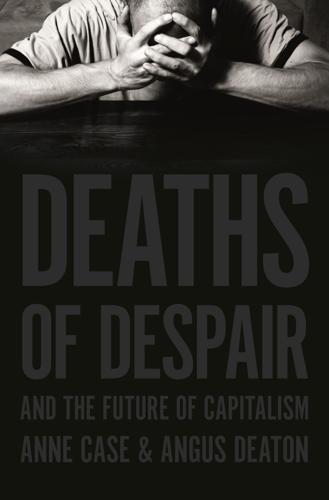
Deaths of Despair and the Future of Capitalism
by
Anne Case
and
Angus Deaton
Published 17 Mar 2020
It is not only unpleasant but extremely dangerous to drink out of a river that someone else, living upstream, is using as a toilet. It is expensive to supply safe water and good sanitation, and it took public health officials a long time to make these arrangements everywhere, even once the basic science—the germ theory of disease—was understood and accepted. The chance of dying increases with age, except at the very beginning of life. Life is most dangerous for babies and for the elderly. In rich countries, infancy is safe; only six out of one thousand American babies do not live to their first birthday, and other countries do even better.
…
One of the ways that education is protective against a preventable disease is when the way the disease works is understood but when that understanding is more accessible to those with more education. The demographers Samuel Preston and Michael Haines have shown that at the dawn of the twentieth century, before the germ theory of disease had been widely digested, “the children of physicians had mortality that was scarcely better than that for the average child, indicating fairly clearly that physicians had few weapons at their disposal to advance survival. By 1924, the mortality of physicians’ children was 35 percent below the national average.
…
See also rent-seeking Culyer, Anthony J., 284n45 Cunningham, Rebecca M., 273n6 Currie, Janet, 263 Cutler, David M., 263, 277n11 Damasio, Antonio R., 271n3 Danziger, Sheldon H., 280n5 Daoguang Emperor, 109 Davis, Karen, 282n14 death certificates, 3, 29, 101, 118, 119, 136, 269n19 Deaton, Angus, 271n5, 271n7, 272n12, 272n15, 273n26, 276n3, 277n16, 291n37 deductibles, 192, 204 De Loecker, Jan, 287n14, 287n18 Delta Airlines, 231 delusional parasitosis, 112 democracy, ix, 14, 241, 246, 262; white working-class and, 13 Democratic Party, x Democrats, 210 Denmark, 163 depression, 27, 37, 92, 95, 96, 98, 99, 212 Desmond, Matthew, 276n3 detox, 122 Devine, Tom, 111, 273n4, 276n42 diabetes, 43 Diamond, Peter, 289n4 disability, 27, 161; insurance, 81, 85, 92, 157, 162, 252, 279n19 discrimination, 5, 31, 62, 65, 166, 189; reverse, 6, 166, 190; women and, 160 dissatisfaction, 181 dividends, 52 divorce, 98, 149 Dobson, Frank, 199 Doctor, Jason, 263, 274n20 doctors, 26, 52, 72, 73, 75, 84, 116 186, 198, 204, 210, 249; germ theory of disease and, 56; opioids and, 10, 113, 114, 117–19, 121–26, 247, 259; rent-seeking and, 10, 11, 12, 193, 196–97, 200–202, 241–42, 256 Doonesbury (cartoon), 62, 63 Dorn, David, 238, 278n21, 285n9, 285n10, 285n15, 287n8, 288n33 Doty, Michelle M., 284n41, 284n43 Dow Jones Index, 240 Dreamland (Quinones), 146 drug dealers, 10, 66, 69, 109–11, 114, 115, 120, 121 Drug Enforcement Agency (DEA), 110, 120, 124–25 drug manufacturers, 10, 40, 85, 112, 120, 124, 126, 127, 192, 193, 201, 202, 242, 259 drug overdoses, 2, 37, 38, 65–66, 111, 137, 185; African Americans and, 119; alcoholism and, 246; bachelor’s degrees and, 114, 121; common features of, 97; mortality rates from, 40, 121; rapid increases in, 45; rise in, 118; suicides and, 246.

Human Frontiers: The Future of Big Ideas in an Age of Small Thinking
by
Michael Bhaskar
Published 2 Nov 2021
For the most part, we recognise big breakthrough ideas. They cause crises in normal science; they punctuate disciplinary equilibria; they are disruptive innovations, new genres of cultural production, moments of outstanding genius. Not only do they allow us to calculate volume; as we will see, they confirm the germ theory of disease, enable heavier-than-air flight and redefine the nature of music. They are landmarks of enquiry: Newton's Principia, Harvey's Motion, Lavoisier's Chemistry, Lyell's Geology, Smith's Wealth of Nations, Darwin's Origin of Species, Freud's Interpretation of Dreams. But they are also the businesses that altered history with a new practice: think of the scale of the Dutch and English East India Companies, industrial techniques in Arkwright's cotton mills or Wedgwood's potteries, major conglomerates like AEG, process and product innovators like Ford, new service models like McKinsey, the mathematical finance of a hedge fund like D.
…
It was only on the repeated orders of Napoleon III that Pasteur was provided with a serious, up-to-date laboratory. Moreover he became half paralysed after suffering a blood clot in the brain, impeding his own ability to directly conduct experiments. Since the dawn of humanity, sickness was both a fact of life and mystery. Pasteur changed that. The germ theory of disease, the technique of pasteurisation, an understanding of sepsis and clinical cleanliness, the technique of vaccination, applied to rabies and anthrax, the whole universe of microorganisms and their myriad interplays: it adds up to a legacy of breakthrough after breakthrough, formed in spartan conditions with rudimentary equipment as their progenitor shuffled back and forth between practical problems and high science.
…
We have more powerful understanding, tools and capabilities; yet, inevitably, more intractable problems to go with them. Success is a burden. Saturation at the Limit A group of thinkers called mysterians argue that there are hard limits to the brain and thus to our intelligence. Some questions are therefore permanently out of reach. Just as goldfish aren't equipped to understand the germ theory of disease, Maxwell's equations or the novels of James Joyce, perhaps we aren't equipped to solve ancient and apparently intractable philosophical conundrums like the mind/body problem or the fundamentals of the universe. After a point, we may neither be able to find new theories, nor even if we get close, really understand how they work.
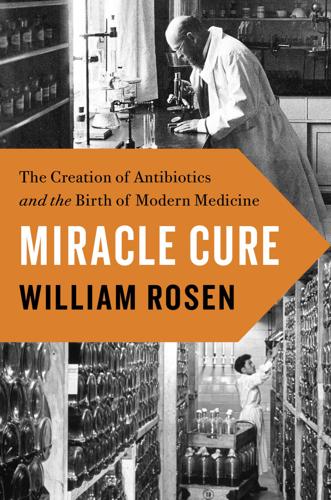
Miracle Cure
by
William Rosen
Published 14 Apr 2017
— The building on rue du Docteur Roux in Paris’s 15th arrondissement is constructed in the architectural style known as Henri IV: a steeply pitched blue slate roof with narrow dormers, walls of pale red brick with stone quoins, square pillars, and a white stone foundation. It was the original site, and is still a working part of one of the world’s preeminent research laboratories: the Institut Pasteur, whose eponymous founder opened its doors in 1888. As much as anyone on earth, he could—and did—claim the honor of discovering the germ theory of disease and founding the new science of microbiology. Louis Pasteur was born to a family of tanners working in the winemaking town of Arbois, surrounded by the sights and smells of two ancient crafts whose processes depended on the chemical interactions between microorganisms and macroorganisms—between microbes, plants, and animals.
…
Racemic acid, on the other hand, has the same formula—C4H6O6—but rotates light in both directions: It is, in formal terms, both dextrorotatory and levororotatory. This discovery was important enough on its own terms, as any high school chemistry student who has struggled with the concept of stereochemistry can testify. Rotating the lens of history on Pasteur reveals his only serious rival for the title of “Father of the Germ Theory of Disease” (also “Father of Microbiology”) was Robert Koch: his chiral double. Koch was born in 1843 in the town of Claustal in the Kingdom of Hanover, one of the principalities that preceded the creation of the modern German state. Like Pasteur, he was a beneficiary of an entire nation’s newfound enthusiasm for technical education, even more profound in the Germanophile world than in France.
…
In 1899, the Chinese minister to the Court of St. James’s, commanded by the emperor to produce biographies of the hundred greatest men in the world, announced that the three Englishmen to make the cut were William Shakespeare, William Harvey, and Lister himself. In retrospect, this seems modest enough. The germ theory of disease that had been developed and tested by Pasteur, Koch, and Lister himself produced an astonishing number of discoveries about the causes of disease; not merely anthrax, tuberculosis, and cholera—respectively the bacteria known as Bacillus anthracis, Mycobacterium tuberculosis, and Vibrio cholerae—but gonorrhea (Neisseria gonorrhoeae, discovered 1879), diphtheria (Corynebacterium diphtheriae, discovered 1883), bacterial pneumonia (Streptococcus pneumoniae, discovered 1886), gas gangrene (Clostridium perfringens, discovered 1892), bubonic plague (Yersinia pestis, discovered 1894), dysentery (Shigella dysenteriae, discovered 1898), syphilis (Treponema pallidum, discovered 1903), and whooping cough (Bordatella pertussis, discovered 1906).
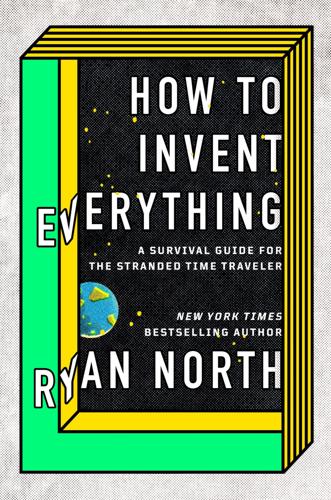
How to Invent Everything: A Survival Guide for the Stranded Time Traveler
by
Ryan North
Published 17 Sep 2018
After all . . . while you may be trapped in the past, that’s no excuse for not looking fabulous. 10.8.1: SOAP Things are beautiful if you love them. —You (also, Jean Anouilh) WHAT IT IS A substance that keeps you clean, in both the “get that dirt off you” sense and the “thanks to the germ theory of disease we know that even superficially clean skin can still carry harmful microbes so wash your dang hands with soap and water before you stick them in your mouth” sense BEFORE IT WAS INVENTED Washing, bathing, bacteria-avoidance, and general cleanliness were more difficult, because there was no substance that would lift up oils in water.
…
What follows is basic medical information that you can use in any time period on yourself or on your fellow humans. If you had other options we’d say, “Yes, absolutely go to a doctor rather than trusting what’s effectively a brief aside in a time-machine-repair manual with your entire health and wellness,” but you don’t, so you may want to study this next section carefully. THE GERM THEORY OF DISEASE Bad things happen when the inside of your body is colonized by invasive microorganisms, which is so disgusting medical professionals refer to it by the euphemism “infection.” Microorganisms can take several forms, but the ones you need to worry about are bacteria (tiny animals) and viruses (tiny pieces of parasitic DNA coated in proteins that hijack cells, reprogramming them to produce more viruses until they burst).* We call both bacteria and viruses “germs,” hence “germ theory.”
…
See also charcoal; coal for fires, 114n fossil, 121n fulcrums, 159n–60n, 160 full adder, 369–70, 370f fuzzy logic system, 305n galena, 279 Galileo Galilei, 44 gamma rays, 276 Gandhi, Indira, 157 Gandhi, Mahatma, 224 gasoline, 190n–91n gates (in computing), 363–67, 363f, 363t, 364f, 364t, 365f, 365t, 366t, 367f, 367n, 367t fluidic, 371–73, 371f, 372n gears, 260–61, 405 generators, 197–99 Gerdes, Johann, 244 germination, 143 germ theory of disease, 326–28 Gibbon, Edward, 263 Gide, André, 281 glass, 138n, 167–74, 172n glass-blowing, 173, 173n gliders, 298 glue, horse hooves for, 95 goats, 92–93 Goethe barometer, 213 gongs, 341n grains, 141–43 grapefruit, 55–56, 56n grapes, 68–69 gravitational constant, 401t Greenwich, England, 268 gudgeon, 283f guitar, 342 gut flora, 327 Hacket, John, 291n half adder, 369–70 hardwood, 118n harnesses, 127–29 harrow, 134 head yoke, 128, 130f health baselines, 330 heat stroke, 330, 330n heavier-than-air flight, 294 Heimlich maneuver, 334 helium, 293–94, 294n, 310 hemisphere, 271n hemp, 187 heroin, 69 hertz, 44 hides.
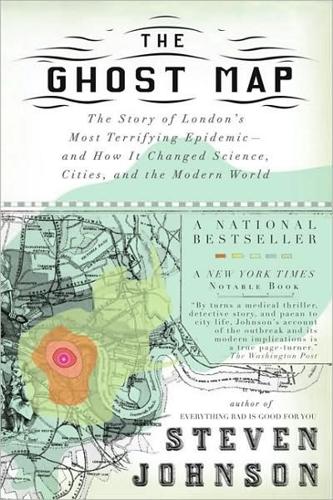
The Ghost Map: A Street, an Epidemic and the Hidden Power of Urban Networks.
by
Steven Johnson
Published 18 Oct 2006
Ironically, just a few days before Snow had unsuccessfully attempted to see any telltale signs of cholera in the water, an Italian scientist at the University of Florence had discovered a small, comma-shaped organism in the intestinal mucosa of a cholera victim. It was the first recorded sighting of Vibrio cholerae, and Filippo Pacini published a paper that year describing his findings, under the title “Microscopical Observations and Pathological Deductions on Cholera.” But it was the wrong time for such a discovery: the germ theory of disease had not yet entered mainstream scientific thought, and cholera itself was largely assumed by the miasmatists to be some kind of atmospheric pollution, not a living creature. Pacini’s paper was ignored, and V. cholerae retreated back into the invisible kingdom of microbes for another thirty years.
…
No greater service could be rendered to humanity than this; it has enabled us to meet and combat the disease, where alone it is to be vanquished, in its sources or channels of propagation.… Dr. Snow was a great public benefactor, and the benefits which he conferred must be fresh in the minds of all. Apparently Dr. Snow found a way out of that “gully-hole” after all. BY THE LAST DECADES OF THE NINETEENTH CENTURY, THE germ theory of disease was everywhere ascendant, and the miasmatists had been replaced by a new generation of microbe hunters charting the invisible realm of bacterial and viral life. Shortly after discovering the tuberculosis bacillus, the German scientist Robert Koch isolated Vibrio cholerae while working in Egypt in 1883.
…
B., 50, 61 Chloride of lime, 112–13 Chloroform, 66–67, 145 Snow and, 65 Cholera, 22, 32–35, 37–39, 52 Angola outbreak, 284n “blue stage,” 138 East End outbreak, 209 fear of, 86 modernization of infrastructure and, 214 recovery from, 111 remedies, 47–51 Snow and, 69–77, 98–100, 276n theories of spread, 68–74, 98, 122–23, 131–32, 146–48, 171 water as cure for, 45 See also Broad Street (Soho), cholera outbreak; Vibrio cholerae (cholera bacteria) Cholera, Chloroform, and the Science of Medicine, 259 Cholera in Berwick Street, The (Whitehead), 169–72 Cities, 84–85, 91–97, 231 benefits of, 237–39 crowded, and transmission of cholera, 41–42 in developing countries, 215–16 digital maps of, 220–22 and disease, 235 and environment, 238 flow of ideas, 225–26 infrastructure projects, 214 largest, 215–16 medieval system, 282–83n modern, 232–33, 281–82n nineteenth-century view, 88–91 post-9/11, 283n See also Towns City-planet, 232, 234–35 biological warfare and, 252 safety of, 254–55 threats to, 236, 239 City Press (London), 205 Civilization, 92 barbarism and, 14–15 and smell, 130 Clark, James, 66 Coevolutionary development, 246 Coffee, 104 Coffeehouses, 281n Colosseum (Rome), 5 Communications Internet, 218–19 and medicine, 45–47 in Victorian-era London, 82–83 Complex systems, waste recycling and, 6 Composting pits, 5 COMPSTAT system, 223–24 Confirmation bias, 186–87 Consciousness, human, 44 “Consilience of Inductions, The” (Whewell), 67 Consumers, in cities, 92 Contagion theory of cholera spread, 69–71 Cooper, Edmund, 191–93, 194 Coral reefs, 6–7 Corpses, in Victorian-era London, 13–16 Cost of cholera cures, 47–48 Cow-dung–fueled generators, 217 Craven, Earl of, 15–16 Craven’s Field, 16 Cross Street (Soho), cholera deaths, 139–41 CTX phage, 246 Cubbitt, Thomas, 120 Cummings, Alexander, 11–12 Daily News (London), 191 Death from cholera, 52 in cities, 84–85 Death and Life of the Great American City (Jacobs), 235 Decomposition, bacteria-driven, 7, 129–30 Dehydration, of cholera, 38–39, 246 Developing countries cholera outbreaks, 215 population control, 234 Dickens, Charles, 14–15, 127–28, 134 Bleak House, 13–14, 84–85, 88 and children, 84 Hard Times, 29 Little Dorrit, 29 Nicholas Nickleby, 17 Our Mutual Friend, 2 Diffusion of gases, law of, 145–46 Digital networks, 222 Disease, cities and, 235–36 Divine will, Whitehead and, 170 DNA-based weapons, 251 Doctor of Medicine, 59–60 Snow as, 61–62 Doctors, and treatment of cholera, 50–51 Doctors Without Borders, 284n Dog excrement, recycling of, 217–18 Dot mapping, 192–94 Drinking water contaminated, 40, 42, 43–44 safe, 217 Drug companies, price gouging by, 48 East End, London, cholera outbreak, 209 East London Water Company, 209–11 Ebola virus, 243 Ecosystems, waste recycling and, 6 Ehrlich, Paul, 234 Electricity, 214 Elevation, cholera deaths and, 101–2 Eley, Susannah, 30–31, 77, 81, 143, 186 Eley brothers, 28, 30–31, 81, 143 Eley Brothers factory, 28, 31, 81, 143, 153 Eliot, George, 167 Elizabeth I, Queen of England, 11 Enclosure movement, 94 Energy, cities and, 92–94 Engels, Friedrich, 13, 14–15, 127–28, 260 Environment changes in, and evolution of bacteria, 43–44 in cities, 221–25 organisms and, 40 Environmental health, cities and, 233, 238, 281–82n Epidemics, 227 and history, 32 maps of, 219 population density and, 243 Snow and, 147–48 Epidemiological Society, 193 Epidemiology, 97, 194, 218 Ethanol, 104 Ether, 63–65, 144–45 Eukaryotic cells, 36, 264n Evolution of disease organisms, 42–44 and sense of smell, 129–30 “Exciting” causes of disease, 132–33 Excrement eating, cholera bacterium and, 40–42 Experiments, Snow and, 65 Experimentum crucis, 75, 76–77, 102, 106–9, 143, 153 Board of Health and, 186–87 Farm animals, in Victorian-era London, 27–28 Farming, efficiency of, 92–93 Farming system, disruption of, 94 Farr, William, 69, 73, 79, 80, 100–102, 127–28, 136, 148, 168, 225 and East End cholera outbreak, 209–12 records of, 140, 141–42, 272n and waterborne theory, 211–12 Weekly Returns of Birth and Deaths, 100–101, 102, 106, 127, 132, 150, 153, 166, 177, 191 and “Great Stink,” 204 and waterborne theory, 204 Fear, urban life and, 84–87 Ferguson, Daniel, 64 Fermentation, 104 Fertilizer, human waste as, 115–16 Fleet River, 119 Folk remedies, 46, 49–50 Fossil fuels, limited supply, 237–39 French novels, of nineteenth century, 84 Frerichs, Ralph, 259 Freud, Sigmund, 134 Full House (Gould), 36 G (Mr., tailor), 29, 31, 32, 34–35 General Board of Health, 112–13, 118. See also Board of Health Generator, waste-fueled, 217 Genetic studies, application of, 249 Genetic tolerance for alcohol, 103–4 Genomic revolution, 249–50 GeoSentinel, 219 Germ theory of disease, 99, 211, 266n Ghost class, London, 2 Global challenges, 256 Global energy network, 93–94 Global Report on Human Settlements (UN), 232 Global warming, 237–39 Globe (London), and cholera outbreak, 160–61 Golden Square (Soho), 16, 25, 27, 159 cholera outbreak, 51, 53, 81, 83, 161–62 deaths, 57–58, 112 map, 141 Snow and, 75–77, 109 water, 30–31 See also Broad Street (Soho); Soho (London district) Google, 219–20 Gossip, and cholera outbreak, 83 Gould, John, 31 Gould, Stephen Jay, 36 Government and mapping technology, 222 and public health, 113, 120–21 and sanitation, 218 urban, and information, 224 Graham, Thomas, 145 Grand Junction Water Works, 142 Great Exhibition (1851), 12, 41–42, 267n Great Plague (1665), 15–16 “Great Stink” (Thames pollution), 205–6, 207 “Green” cities, 238 Green’s Court, 52, 81–82 Gunpowder, manufacture of, 9 Hall, Benjamin, 29, 112, 134, 145, 147, 163–66, 167, 168, 172, 179, 201 and miasma theory, 183–84, 186–87 and Snow, 204 and waterborne theory, 183 Hamburg, cholera outbreak, 215 Hard Times (Dickens), 29 Harington, John, 11 Harnold, John, 70–71 Harrison (Berwick Street surgeon), 53–54 Hassall, Arthur, 99 Health, cities and, 232 Hemenway, Toby, 233 H5N1 (avian flu virus), 243–48 Hippocrates, and cholera, 33 On Air, Water, and Places, 126–27 History epidemic disease and, 32 turning points, 162–63 London sewers as, 207 urbanization and, 232 Hogarth, William, 18 Homelessness, 3, 218 Hooke, Robert, 281n Horsleydown, cholera outbreak, 70–73 Hospitals, in urban centers, 232–33 Huggins, Edward and John, 142–43, 161 Human consciousness, 44 Human culture, and excrement eating, 40–42 Human excrement, collection of, 8–13 Human genetic change, 42 Human organization, patterns of, 93–94 Hunter-gatherer societies, 92, 103–4, 130 Hunterian School of Medicine (London), 60 Hydrogen sulfide, 129–30, 133 Hysteria, in Victorian era, 87 Iberall, Arthur, 93–94 Ideas cross-disciplinary flow of, in cities, 225–26 incorrect, 126 Immune system, 133 Index case (Broad Street), 177, 178–79, 199–200 India, cholera outbreaks, 215 Industrial Age, 18 and cholera, 33 See also Industrial Revolution Industrial Revolution, 92–93, 94–95, 271n Infant mortality rates, 232, 233 Infectious diseases, Web mapping of, 219 Influence of Snow’s map, 198–201 Information technology, 218–19, 224–25 Inner-city air, as disease source, 69–70, 74 Inner-city life, in Victorian era, 171 Insulin, 223 Intellectual progress, 135, 149 Internal-constitution theory of cholera spread, 132–33 Internet, 218–19, 236–37 John Snow sites, 259, 261 Istanbul, Sultaneyli village, 216 Jacobs, Jane, 18, 221–22 Death and Life of the Great American City, 235 James, John, 34 Jennings, George, 12 John Snow (pub), 228 Kamen, Dean, 217 Kay-Shuttleworth, James, 265n Kemp House, 227 Killingworth Colliery, 59 Knossos, composting pits, 5 Knowledge, Internet and, 218–19 Koch, Robert, 213 Koch, Tom, 196, 275n Lactose tolerance, 103–4 Lambeth water company, 105–8 Lancet, The, 46 and contagion theory, 69 editors of, 15, 168 obituary of Snow, 206 Snow and, 61, 64, 205, 213, 269n Largest cities, 215–16 Latta, Thomas, 45, 155 Lea River, 210–11 Leather-tanning process, 4, 263–64n Lewis, Sarah, 21–22, 178–79, 181, 187–88 Lewis, Thomas, 21, 31, 187 Lewis infant, 21–22, 35, 54, 178–79 Whitehead and, 199 Life expectancy, in cities, 84, 232–33, 236 Lion Brewery, 28–29, 31, 81, 142–43, 146, 153 Liszt, Franz, 18 Little Dorrit (Dickens), 29 Local knowledge, 147 Internet and, 218–19 in urban environments, 225 Locock, Dr.
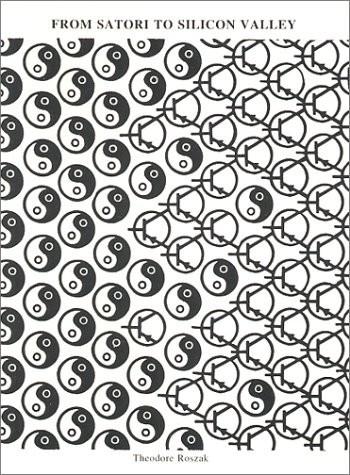
From Satori to Silicon Valley: San Francisco and the American Counterculture
by
Theodore Roszak
Published 31 Aug 1986
In the kitchens, pantries were filled with stale brown and active vermin; one might in the refrigerators, rice find several months' supply of spoiled groceries and well-sprouted soy cakes. In these quarters, one sensed that organic foods were a sort of talisman, sufficiently potent in their very presence to repeal the germ theory of disease. Also 4 there were the signs many animals once resident or still haunting the premises - unleashed, unhousebroken, very likely of unfed. In the Haight-Ashbury and the East Bay, there less there was a cult of the "organic dog" - the washed and tamed, the were neighborhoods better. in larger, the For a period, Berkeley and San Francisco that took on the look and the fragrance of barnyards or hunting camps.
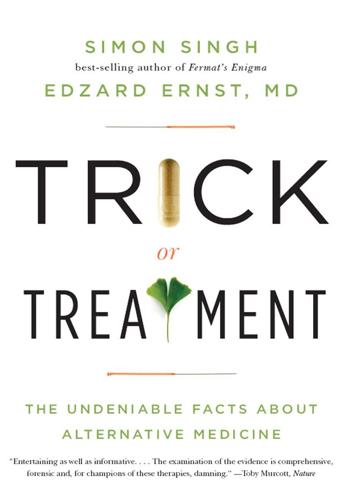
Trick or Treatment: The Undeniable Facts About Alternative Medicine
by
Edzard Ernst
and
Simon Singh
Published 17 Aug 2008
The idea that ‘like cures like’ and the belief that diseases were ‘derangements of the spirit-like power that animates the human body’ sounded similar to some elements of the still highly respected Greek philosophy of medicine, so homeopathy was greeted with enthusiasm. Moreover, Hahnemann’s ideas were emerging before scientists had firmly established the germ theory of disease or the atomic theory of matter, so the vital force and ultra-weak dilutions did not sound quite so strange as they do today. Signs of Hahnemann’s growing influence ranged from opening the world’s first homeopathic hospital in Leipzig in 1833 to the use of homeopathy to treat Napoleon’s pubic lice.
…
Other major scientific breakthroughs included vaccination, which had been growing in popularity since the start of the 1800s, and Joseph Lister’s pioneering use of antiseptics in 1865. Thereafter Louis Pasteur invented vaccines for rabies and anthrax, thus contributing to the development of the germ theory of disease. Even more importantly, Robert Koch and his pupils identified the bacteria responsible for cholera, tuberculosis, diphtheria, typhoid, pneumonia, gonorrhoea, leprosy, bubonic plague, tetanus and syphilis. Koch deservedly received the 1905 Nobel Prize for Medicine for these discoveries. Without any comparable achievements attributed to homeopathy, and without any rigorous evidence or scientific rationale to support it, the use of these ultra-dilute homeopathic remedies continued to decline into the twentieth century in both Europe and America.
…
Discuss the ways in which the symptoms of these remedies reflect their miasmatic nature.’ This question is a throwback to the Dark Ages of medicine, when it was believed that disease was caused by miasmas, which were poisonous vapours – this idea became obsolete in the late nineteenth century when scientists developed the more accurate and useful germ theory of disease. Professor David Colquhoun surveyed the state of play in Britain in 2007 and discovered that there are sixty-one degree courses in alternative medicine, of which forty-five are BSc degrees, spread across sixteen universities. Five of the BSc degrees specialize in homeopathy – this means that students spend three years studying a subject that we have demolished in this book in a single chapter.
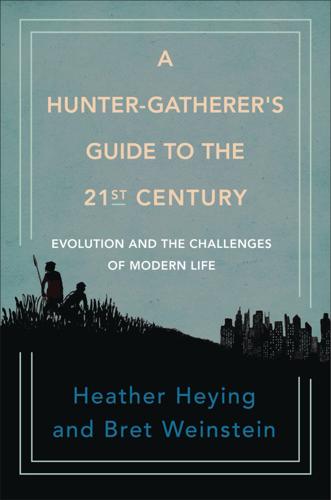
A Hunter-Gatherer's Guide to the 21st Century: Evolution and the Challenges of Modern Life
by
Heather Heying
and
Bret Weinstein
Published 14 Sep 2021
Until we know the answer to those last questions, the Precautionary principle suggests steering clear. Finally, it is worth noting that some of the major successes of Western medicine—surgery, antibiotics, and vaccines—are firmly rooted in a reductionist tradition and have saved millions of lives. The problem we are highlighting is the overapplication of a reductionist approach. The germ theory of disease—in its simplest formulation, the recognition that pathogens cause much disease—led to the discovery and formulation of antibiotics, a huge health boon for humanity. Then we overgeneralized, and imagined that all microbes are bad for us. We are now coming to realize that our microbiome has evolved with us and is necessary for a healthy gastrointestinal tract.
…
SARS-CoV-2 crossed oceans in hours, and it didn’t pioneer some ingenious new mode. Where once an epidemic might have been held back by barriers that limit human travel, humans now regularly transmit communicable diseases from their continents of origin to every corner of the globe. Much as people thought little about washing their hands prior to the germ theory of disease, we give no thought to the scale of misery caused by a given person transporting a new and nameless cold virus to some continent that was free of it the day before. “Novel Coronavirus” took advantage of that nonchalance before the pathogen even had a proper name. The COVID-19 pandemic is itself a symptom of another disease entirely.
…
See food dimensional lumber, and visual perception, 40–41, 228 diminishing returns, 207, 233–35, 234 dinosaurs, 25, 26, 29, disease risk, and birth month, 217 diurnal, 91–92 diverse views, experiences and places, exposure to, 195 division of labor, 113–16 in agriculturalist societies, 114 differences between sexes and, 114 gendered work, 114–15 in hunter-gatherer societies, 113–14 in modern society, 115–16 monogamy and, 131 Dobzhansky, Theodosius, 68 dogs, 140, 141–42 dolphins, 8, 34, 129–30, 147, 167, 212 dreams, 93, 94–96 drugs, and children, 158–60 duck-billed platypus, 27, 124 ducks, 129–30 echidnas, 27, 124 economic growth, 224 efficient frontier, 233 eggs, 107, 124, 130–131, 278 eggs (gametes), 108–111 elders, 136–39, 213 electric lights, 98–100 elephants, 8, 142, 147, 202 elephant seals, 127–28, 129–30 endotherms, 26, 28 energy/materials costs with variation, and test of adaptation, 45 entheogens, 96, 98, 220 Environments of Evolutionary Adaptedness (EEA), xv, 78 See also adaptive evolution epigenetic, 14–17 ergot fungi, 96 Estabrook, George, 195–96 eukaryotes, 20 eusociality, 131 exercise, 62–63 explosive gases, 55–56 extinction, 12, 29 fairness, and theory of mind, 200–203 fallacy of division, 105 fast food, 77 feasting, 86–88 financial collapse of 2008, 10 finite nature of resources, 233, 235–36 fire/campfire, 4, 6–9, 80–82, 99, 209–10 first principles, xiv fish, 21, 23, 49, 85 fitness, 11–12 flame wrasses, 109, 110 flavor, 77 fluoride, 64–65 food, 75–98 agriculture and, 83–85 cooking, purposes of, 52–53, 75, 80–82 corrective suggestions for, 88–90 domestication of, 82–83 evolutionary history of, 79–88 fast food versus real food, 77 feasting, purposes of, 86–88 fire and, 80–82 fishing and, 85 holistic approach to, benefits of, 77–78 individual variability in determining optimal diet, 76 misguided assumptions about, 76 paleo diet, 75–76 purpose of eating, expansion of, 76, 79 raw food diets, 75 reductionism and, 76–79 remapping of olfactory perception and, 53–55 sense of taste and flavor, evolutionary development of, 77 shelf life, effects of additives used to improve, 65 smell and, 51–55 tool use and, 79–80 traditional staples, 78–79 Foucault, Michel, 193 fourth frontier, 227–43 corrective suggestions for, 242 designing, 229 diminishing returns and, 233–35 evolutionary solution, need for, 240–43 finite nature of resources and, 233, 235–36 growth, obsession with, 224–27, 236–39 human software, understanding, 241, 243 Mayan durability as example for, 229–32 negative externalities and, 233, 235–36 obstacles to, 232–36 prototyping for, 229 regulation and, 239–40 senescence of civilization and need for, 227–29 shared fate, lost sense of, 228–29 steady state for humanity, engineering, 227 unintended consequences and, 233, 235 unregulated markets, effect of, 228 fragility, 152–55 freedom/justice trade-off, 232–33 Freud, Sigmund, 33 friendship, 131 fruit, 78, 82 Fukushima Daiichi nuclear disaster, 10 functional biology, 68 fur, 27 gasoline, 55–56 Gatto, John Taylor, 165 gay men, 136 generalists, 5–6, 7, 11, 49–50, 215 genes/genome, 14 culture as genome expression regulator, 14–17 epigenetic, 14–15 genital mutilation, 117 genocide, 13 geographic frontiers, 224–25, 226 germ theory of disease, 67 gestation, 27 gibbons, 32, 127, 129 glossary, 251–55 gluten sensitivity, 192 glycoalkaloids, 95 GMOs, 66 golden-collared manakins, 110 golden lion tamarins, 156 Goodall, Jane, 79 Good Samaritan story, 123 gorillas, 32 great bowerbirds, 110 grief, 141–42 group stability, 201 growth, 224–27, 236–39 Guatemalan farmers, 216 guinea yams, 78 Hachiko (Akita), 141–42 Hadza, 35, 80 Haidt, Jonathan, 184 hallucinations, 94–96 hallucinogens, 96, 220 hammerhead shark, asexuality in, 109 Hayek, Friedrich, 61 hearts, 28 heroin, 203–4 heterotrophs, 20–21 historical frontiers fourth frontier.
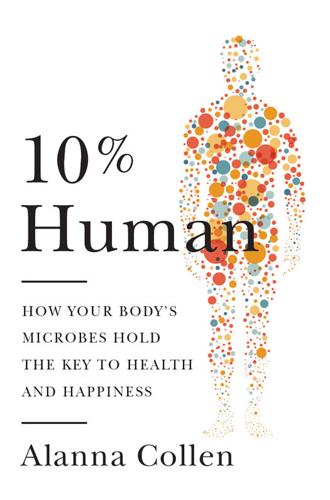
10% Human: How Your Body's Microbes Hold the Key to Health and Happiness
by
Alanna Collen
Published 4 May 2015
The mere notion that doctors could be responsible for bringing death, not life, to their patients caused huge offence, and Semmelweis was cast out of the establishment. Women continued to risk their lives giving birth for decades, as they paid the price of the doctors’ arrogance. Twenty years later, the great Frenchman Louis Pasteur developed the germ theory of disease, which attributed infection and illness to microbes, not miasma. In 1884, Pasteur’s theory was proved by the elegant experiments of the German Nobel prize-winning doctor Robert Koch. By this time, Semmelweis was long dead. He had become obsessed by childbed fever, and had gone mad with rage and desperation.
…
Page numbers in italic refer to the illustrations abscesses 37 Academic Medical Center, Amsterdam 255, 256–7 accidents, Toxoplasma infection and 97 acetate 107, 195, 217 acne 23, 129, 141, 142–4, 168 Actinobacteria 226, 230 adenoviruses 75, 76–7, 78 adipose cells see fat cells Adlerberth, Ingegerd 131 adrenalin 104–5 affluence, and twenty-first-century illnesses 46–8 Africa: asthma 50 births 214 diet and gut microbiota 184, 185, 262–3 Ebola epidemic 115 garden warblers 55 personal hygiene 176 age, and twenty-first-century illnesses 48–50 ageing 228, 231, 235, 268 agriculture: antibiotic use 147–8, 160–4, 165, 272 Neolithic Revolution 184–5, 201 Akkermansia 283–4 Akkermansia muciniphila 79–81, 193–4, 258 Alabama 46 alcohol hand-rubs 175 Alexander, Albert 37 Aliivibrio fischeri 12 Allen-Vercoe, Emma 109–10, 111, 112, 259–60, 261–2 allergies 24, 38–9, 43, 44, 48 affluence and 46–7 after Caesarean birth 212 antibacterial products and 171 antibiotics and 130, 166–7 antihistamines 39, 116, 269 bottle-feeding and 223 in developing countries 47 family size and 117, 118 gender differences 51, 52 hygiene hypothesis 117–19, 121, 130–2, 145 immune system and 44–5, 116–21, 130–1 increase in incidence 52, 116 and infections 116–19 microbes and 131–2 probiotics and 242 racial differences 50 Alm, Eric 253 Alps 115 alternative medicine 137–9 Alvarez, Walter 238 Amazon rainforest 262, 282 American Gut Project (AGP) 4–5, 281–2 Amerindians 262–3 amino acids 70, 71, 180, 271 ammonia 176–7 ammonia-oxidising bacteria (AOBs) 176–8 anaemia 221 anaerobic bacteria 95 anaphylactic attacks 38 androgens 143 Animalia 16, 17 animals: allergies to 119 antibiotics as growth promoters 147–8, 160–4, 272 coprophagy 245–8 Neolithic Revolution 184–5, 201 transmission of microbes 115 see also individual types of animal anthrax 115 antibacterial products 169–72, 175, 214–15 antibiotics 2, 147–68, 276–7, 281, 285 and acne 143 and allergies 130, 166–7 antibiotic resistance 152, 153, 154–5, 156 and autism 86, 90–2, 94–5, 106–7, 111, 165–6 and autoimmune diseases 167–8 benefits of 168 and birth 163, 215 broad-spectrum antibiotics 156, 270 and Clostridium difficile 157, 234, 250 development of 36–7 and diarrhoea 155, 157, 241–2 effects on microbiota 129, 157–8, 161 as growth promoters for animals 147–8, 160–4, 272 harmful side-effects 5–6, 155–6, 269 and immune system 129–30 and irritable bowel syndrome 64–5 lactobacilli and 206–7 and life expectancy 28 and obesity 147–9, 159–65 residues in vegetables 164–5 and stomach ulcers 74 and twenty-first-century illnesses 158–9 unnecessary prescriptions 152–3, 269–70 antibodies 30, 139, 231 antidepressants 269 antigens 132–3 antihistamines 39, 116, 269 ants 84 anxiety disorders 42, 51, 99, 175 AOBiome 176, 177–8 apes 16 apocrine glands 177 appendicitis 14, 15–16, 43, 223, 266 appendix 13–16, 21, 45, 203, 208, 266 appetite control 67–8, 72–3, 80, 196 arabinoxylan 194 Arabs 46 archaea 8 Argentina 210 arginine 271 arthritis 183, 196 asbestos 170 Asia 47, 214 Asperger syndrome 87 asthma 44, 49 antibiotics and 130, 166–7 bottle-feeding and 223 fibre and 199 immune system and 116, 196 incidence 38, 39, 47, 52 racial differences 50 wealth and 47 Atkinson, Richard 74–5, 77 attention deficit hyperactivity disorder (ADHD) 42, 98–9, 105, 108, 175 aureomycin 160 Australia: acne 142 birth 214–15 encephalitis lethargica 173 faecal transplants 250–1, 259 fruit and vegetable consumption 273 racial differences in diseases 50 sugar consumption 188, 189 twenty-first-century illnesses 46 autism 38, 43, 44, 49, 85–96 after Caesarean sections 212 antibiotics and 86, 90–2, 94–5, 106–7, 111, 165–6 autistic spectrum disorder (ASD) 87–8 behaviour problems 88, 108–9 and coprophagy 246 and ear infections 166 faecal transplants and 254–5 gastrointestinal symptoms 45, 85–7, 90 gender differences 51, 89 genetics and 89 immune system and 106, 108 incidence of 42, 46, 53, 88–9 lipopolysaccharide and 141 microbes and 90–2, 94–6, 109–12, 165–6 probiotics and 242 propionate and 107–9 racial differences 50–1 savants 87, 108 symptoms 87–8, 282 autoimmune diseases 24, 38, 39–41, 43 affluence and 47 and antibiotics 167–8 appendix and 16 and Caesarean sections 212 in childhood 49 in developing countries 47 faecal transplants and 254 gender differences 51, 52, 267 immune system and 44–5 incidence of 46 IPEX syndrome 133 probiotics and 242 racial differences 50 T helper cells and 119 see also individual diseases autointoxication 236–8 autopsies 33 babies 273–4 antibiotics 152–3, 158, 159–60, 161–2 bottle-feeding 220–6, 273–5 breast-feeding 216–20, 221, 222–6, 230–1, 274–5, 278, 285 Caesarean births 209–15, 220, 274, 278 caul births 214 colic 215–16 ear infections 151 gut microbiota 131, 217 immune system 208–9, 217, 227 infant mortality 222–3 probiotics and 242 transfer of microbes to 204–9, 212–14 vaginal delivery 209–12, 220, 274, 278 water birth 214 weaning 226 wet nursing 220–1 Bäckhed, Fredrik 66–7, 71, 147, 160 bacteria: alcohol hand-rubs 175 ammonia-oxidising bacteria 176–8 anaerobic bacteria 95 antibacterial products 169–72 antibiotic resistance 152, 153, 154–5, 156 collateral damage from antibiotics 155–6, 157 colony-forming units 244 DNA sequencing 17 lipopolysaccharide 140 and mitochondria 123, 123 prebiotics 258 probiotics 237–44 quorum sensing 136 and stomach ulcers 74 see also gut microbiota; microbes and individual types of bacteria bacteriocins 161, 206–7, 208 bacteriocytes 205 bacteriotherapy 245, 248 Bacteroides 23, 157, 194 Bacteroides fragilis 134–5 Bacteroides plebeius 192 Bacteroidetes 68–9, 70, 81, 185, 186, 187, 191, 226, 282 BALB mice 99 barley 139, 199 basal ganglia 174–5 bats 1–2, 100, 115, 124–5, 181, 182, 236 beans, fibre content 190, 191 Bedouin 201 Bedson, Henry 26 bees 124 behaviour: in autism 88, 108–9 changed by microbes 84–5, 96–7, 112–13 neurotransmitters 103, 104–5 propionate and 107–9 Bengmark, Stig 46 Bifidobacterium 193–4, 196–7, 217, 226, 239, 240, 258, 284 Bifidobacterium infantis 93 bile 145, 263 bioluminescence 12 bipolar disorder 105 birds 54–6, 205 birth 278 antibiotics in 163, 215 Caesarean section 209–15, 220, 274 caul births 214 childbed fever 32–3 home births 214 hormones 220 hygiene 214–15 transfer of microbes to babies 205–7, 212–13 vaginal deliveries 209–12, 220, 274, 278 water birth 214 bison 125–6 Blaser, Martin 162, 163, 182 blood 181 blood pressure 199, 231, 256 blood sugar levels 256 blood transfusions 249, 253, 254 bobcats 84, 97 Body Mass Index (BMI) 41, 69, 79, 161, 188, 193, 197 body odour 175–7 Bolte, Andrew 86–7, 88, 89–92, 94–6, 110, 111, 112, 165–6 Bolte, Ellen 86–7, 88, 89–92, 94–6, 106, 110–11, 112, 165–6 Bolte, Erin 86, 110, 111–12 Borody, Tom 250–2, 254–5, 259 bottle-feeding 220–6, 273–5 Boulpon, Burkina Faso 184, 185, 190 brain: connections to gut 92–3, 104–5, 106–7, 109–10 development of 93–4 encephalitis lethargica 173–4 immune system 103–4, 105 inflammation 108 memories 108–9 microbes and 98–9 neurotransmitters 103, 104–5 obsessive-compulsive disorder 172–3, 174 propionate and 107–9 strokes 50, 107, 183, 199, 256, 268 synapses 120 tetanus 91 Whipple’s disease 85 see also mental health conditions Brand-Miller, Jennie 215–16 Brazil 46, 47, 209, 212 bread 198, 199–200, 202 breast cancer 44, 145 breast-feeding 216–20, 221, 222–6, 230–1, 274–5, 278, 285 Britain: antibiotic use 130, 150–1 breast-feeding 225 Caesarean sections 210, 211–12 Clostridium difficile 156 consumption of fats and sugar 188 diabetes in children 40–1 fall in calorific intake 189 fruit and vegetable consumption 190–1, 273 gut microbes in babies 131 obesity 42, 58 broccoli 198 bronchitis 152 ‘Bubble Boy’ 126–8, 181 Burgess, James 253 Burkina Faso 184, 185, 190, 191, 263 Butler, Chris 153–4, 155 butyrate 107, 195, 196–7, 217, 257, 284 caecum 13, 21, 45, 128 Caesarean birth 209–15, 220, 274 caffeine 73, 74 cakes 198 California Institute of Technology 134 calories: calculating contents of foods 69–70 dieting 149, 186–7 differences in weight gain 77–8 fall in consumption of 189 microbes and extraction of 67, 70–2 and obesity 56–7, 61 Campylobacter jejuni 65 Canada 46, 47, 51, 62, 99, 106, 173, 259–60 cancer: ageing and 49 blood cancer 16 bottle-feeding and 223 breast cancer 44 as cause of death 268 cervical cancer 144 chemotherapy 270 colon cancer 23–4, 144, 145, 258 diet and 183 immune system and 120–1 infections and 144 liver cancer 144–5 lymphoma 127 metabolic syndrome and 256 microbes and 144–5 obesity and 42, 50, 145 prebiotics and 258 shingles and 271 stomach cancer 144 Cani, Patrice 78–9, 80–1, 193–4, 197 car accidents 97 carbohydrates: calorie content 69 dieting 185–8 digestion of 180 effects of 198 fibre 192 oligosaccharides 216–18 types of 197–8 carbolic acid 34, 36 Carmody, Rachel 179–80, 182, 198–9 carnivores 181–2, 192, 203, 263 casein 111, 200 cats 96 cattle 12–13, 181, 192, 201, 204, 272 caul births 214 cells, mitochondria 123, 123 cellulose 191, 192 centenarians 265 Centers for Disease Control (CDC) 88–9, 152, 212 Central America 100 Centre for Digestive Diseases, Sydney 250–2, 254 cervical cancer 144 Chain, Sir Ernst Boris 37 Charles University, Prague 97 cheese 159 cheetahs 124 chest infections 153 chickens: antibiotic treatment 147–8, 165 virus disease 57, 61, 74–5, 76–7, 78 Chida, Yoichi 93 childbed fever 32–3, 34 childbirth see birth children: allergies 38–9, 116–17 antibiotic use 151, 161–2, 165–6 autism 88–9, 165–6 brain development 93–4 death rates 28, 31 ear infections 86, 87, 90, 94, 151, 152, 153, 166, 222 fat intake 190 gut microbiota 226–7 hygiene 278–9 infectious diseases 31 obesity 58, 223–4 twenty-first-century illnesses 49 see also babies Children of the 90s project 130 chimpanzees 102, 245–7 China 47, 209, 249–50 chlorinated lime 33 chlorinated water 172 chlorine 35–6, 62 chloroform 172 cholera 15, 27, 30, 34–5, 45–6, 135–7, 139 Cholera Auto-Inducer 1 (CAI–1) 136 cholesterol 194, 229, 231, 256 Church, Andrew 173–4 ciprofloxacin 157–8 cleaning products 169–72, 175, 214–15 clindamycin 157 Clinton, Bill 10 Clostridium 96, 107, 145 Clostridium bolteae 106 Clostridium difficile 90, 271 antibiotics and 156–7, 234–5, 241, 250 in babies’ gut microbiota 213 bottle-feeding and 222 deaths from 156, 245 faecal transplants 249, 250, 251, 252–3, 259, 260 Lactobacillus and 206 symptoms 156 Clostridium tetani 90–2, 94, 95, 96, 110–11 clothing 176 cockroaches 204–5 coeliac disease 39, 41, 139–40, 183, 200, 202, 212 Cold Spring Harbor Laboratory, New York State 7, 24 colds 51, 129–30, 152, 167 colic, infantile 215–16 colitis, ulcerative 42, 49, 144 colon: autointoxication 236–8 colon cancer 23–4, 144, 145, 258 colonic irrigation 237 digestion 180–1 toxic megacolon 156, 245 see also gut microbiota; inflammatory bowel disease; intestines; irritable bowel syndrome colony-forming units (CFUs), bacteria 244 colostrum 217, 219, 220 constipation 62–3, 65, 238, 251, 254 contraceptives 102 cooking food 199 coprophagy 245–8 Cordyceps fungi 84 Cornell University 230 Corynebacterium 20, 21, 168–9, 177, 213 cough, sudden-onset 155 cowpox 27, 29 cows 12–13, 181, 192, 201, 204, 272 cow’s milk 216, 221 Crapsule 259 Crohn’s disease 42, 49, 52, 144 Cuba 210 Cyanobacteria 65 cytokines 48, 105, 106, 141 D-Day landings (1944) 37, 150, 158 dairy produce 200, 201 Dale, Russell 173–4 dander 119 Danish National Birth Cohort 161–2 Darwin, Charles 280 The Descent of Man 13, 14 The Expression of Emotions in Man and Animals 92 On the Origin of Species 124, 279 Dawkins, Richard, The Selfish Gene 125, 126 death 235–6 babies and children 28, 31, 222–3 causes of 268 Clostridium difficile 245 diarrhoea and 15 dementia 105 dendritic cells 219 Denmark 52, 161–2, 167–8 deodorants 175, 177, 178 deoxycholic acid (DCA) 145 depression 42, 45, 51, 65, 98, 103–4, 105, 141 dermatitis 23 developing countries: antibiotic use 153–4 twenty-first-century illnesses 53 Dhurandhar, Nikhil 56–7, 61, 74–5, 76–7, 82, 149 diabetes 38, 44, 139, 269 and antibiotics 167–8 bottle-feeding and 223, 224 breast-feeding and 231 and Caesarean sections 212 in childhood 4, 119 diet and 183 faecal transplants 255 gender differences 267 incidence of 39, 40–1, 47, 52, 158 leaky guts and 140 lipopolysaccharide and 141 metabolic syndrome 256–7 obesity and 42, 50, 256 probiotics and 242–3, 257–8 racial differences 50 symptoms 39–40 diarrhoea: antibiotics and 155, 157, 241–2 and autism 45, 85–7, 90 as cause of death 15, 27, 268 cholera 34–5, 135–7 Clostridium difficile 156, 222, 234–5, 241 and coprophagy 246 faecal transplants 250–1, 260 irritable bowel syndrome 62–5 probiotics and 241–2 diet see food dieting 59, 148–9, 184, 186–7, 197, 199 digestive system 180 see also colon; gut microbiota; intestines digoxin 271 diphtheria 27, 28 diseases: antibodies 30, 139, 231 diet and 183 epidemiology 35, 45–6 genes and 10, 43–4, 268 germ theory 34, 236 infectious diseases 27–9, 43, 115, 118, 153–4 obesity as infectious disease 75–7 pathogens 28–9 transmission of microbes 114–16 vaccinations 25, 26–7, 29–31, 35, 91, 118, 165 water-borne diseases 34–6 see also antibiotics and individual diseases DNA: and cancer 120–1, 144, 145 DNA sequencing 4, 9–11, 16–17, 65 human genome 279–80 doctors: antibiotic prescriptions 152–3, 277 hospital hygiene practices 31–4 Dodd, Diane 100–1 dogs 84, 85, 124 Dominguez-Bello, Maria Gloria 214, 278, 285 Dominican Republic 210 donors: faecal transplants 261, 262 sperm donors 260–1 dopamine 104–5 drugs: gut microbiota and 270–2 see also antibiotics dummies 151 dysbiosis 64–6 dysentery 15, 27 E. coli 62, 239, 254 ear infections 86, 87, 90, 94, 151, 152, 153, 166, 222 East Africa 176 Eastern Europe 47 Ebola 115 eccrine glands 177 ecological succession 208 eczema 38, 49 antibiotics and 130, 166–7 bottle-feeding and 223 incidence 39, 47, 52 prebiotics and 258 probiotics and 242 Eggerthella lenta 271 Egypt 201 Eiseman, Ben 251 elephants 245 Elizabeth II, Queen of England 265 emotions, and irritable bowel syndrome 92–3 encephalitis lethargica 173–4 energy: in food 69–72 mitochondria 123 storage in body 77–8 enterobacteria 131 Enterococcus 219 environment, and twenty-first-century illnesses 44 enzymes 12–13, 180, 182, 191, 192, 263 epidemiology 35, 45–6 epinephrine 104–5 Epstein-Barr virus 127 Eubacterium rectale 197 Eukarya 16 Europe: acne 142 antibiotic use 150, 163–4, 272 birth 214–15 breast-feeding 224 encephalitis lethargica 173 fat consumption 188 hygiene hypothesis 117 racial differences in diseases 50 see also individual countries evolution 11–12, 44, 84–5, 109, 124–6 fabrics, clothing 176 Faecalibacterium 284 Faecalibacterium prausnitzii 197 faeces: and birth 206, 207 coprophagy 245–7 DNA sequencing microbes in 23 faecal transplants 245, 248–57, 258–62 see also gut microbiota families, microbiotas 228 farming see agriculture Fasano, Alessio 136–7, 139–40, 200 fat cells: appetite control 72, 73 fibre and 196 lipopolysaccharide and 141 in obese people 78–9, 141 in pregnancy 230 storage of fat 72 FATLOSE (Faecal Administration To LOSE insulin resistance) 256–7 fats: calorie content 69, 77–8 consumption of 188, 189–90 dieting 186–8 digestion of 71, 180 high-fat diets 192–3, 194 fatty acids 180, 188 fibre: and Akkermansia 81, 193–4 and appendicitis 15 and butyrate 196–7 consumption of 190–1 in faeces 23 Five-a-Day campaign 273 and gut microbiota 191–9, 202–3, 204, 263, 276, 282–4 and obesity 192–5, 197 prebiotics 258 wheat and gluten intolerance 199–202 Finegold, Sydney 95–6, 106–7, 109 Firmicutes 68–9, 70, 81, 161, 185, 186, 187, 191, 226, 282 First World War 28, 36 fish, gut microbiota 205 Five-a-Day campaign 273 Fleming, Sir Alexander 36, 37, 154, 156 flies, fruit 100–1 Florence 184, 190, 191 Florey, Ethel 37 Florey, Howard 36–7 flour, fibre content 198 flu 27, 28, 48, 50, 129, 152, 167 folic acid 227–8 food 179–203, 272–3 and ageing 231 allergies and intolerances 38, 47, 49, 199–202 antibiotic residues in 164–5 calorie content 69–72 consumption of fats 188 cooking 199 digestion of 23 fibre content 190–9, 202–3, 273, 276, 282–4 and gut microbiota 184–8 healthy diet 183–4 Neolithic Revolution 184–5 packaged foods 182–3, 202 preservatives 202 sugar consumption 188–9 weaning babies 226 Food and Drug Administration (FDA) 172, 252, 272 food poisoning 15, 63–4, 65, 258 food supplements, prebiotics 258 formula milk 220–6 France 115, 160–1, 211 free-from foods 200 free will 112 Freud, Sigmund 98, 238 frogs 83–4, 124 fructo-oligosaccharides (FOS) 193–4, 258 fructose 180, 188 fruit 198, 273, 276 fruit flies 100–1 fungi 8, 84 galacto-oligosaccharides 258 galactose 207, 216 gangrene 34 garden warblers 54–6, 57, 73, 77, 78 gastric bypasses 81–2 gastritis 74 gastroenteritis 15, 16, 62, 63–4, 65, 167, 172, 222 Gattaca (film) 280 Ge Hong, Handbook of Emergency Medicine 249–50 gender differences: autism 51, 89 Toxoplasma infection 96–7 twenty-first-century illnesses 51–2, 267 Generation X 224 genes: appetite control 67–8 and autism 89 cholera bacteria 136–7 coeliac disease 139–40 faecal transplants 261 and gut microbiota 227 human genome 3–4, 7–10, 43–4, 279–80 in human microbiome 8, 11, 279 and lactose intolerance 201 and leaky gut 196–7 mutations 44 natural selection 125, 126 and obesity 60 and pheromones 102 and predisposition to disease 10, 43–4, 268 sperm donors 260–1 and vitamins 228 and weight control 71–2 genome-wide association studies (GWAS) 268 gentamycin 161 George V, King of England 265 germ-free mice 17–18, 66–9, 128, 134, 230 germ theory of disease 34, 236 Germany 46–7 giardiasis 15, 27 glucose 39–40, 180, 207, 216, 229, 256, 257 gluten 42, 111, 139–40, 142, 199–202 glycerols 180 gnotobiotic mice 17 goats 115, 201 Gombe Stream National Park, Tanzania 246 gonorrhoea 215 Goodall, Jane 246 Gordon, Jeffrey 18, 24, 67, 247, 262 GPR43 (G-Protein-coupled Receptor 43) 195–6, 195 grains 190, 191, 194, 197, 198 Gram-negative bacteria 140 Gram-positive bacteria 140 Gray, George 61 Group B strep 215 gut see colon; intestines ‘gut feelings’ 104 gut microbiota 2–4, 18, 21–4 and ageing 231, 235 American Gut Project 281–2 antibiotics and 157–8, 161 in appendix 14–16, 266 and autism 106, 165–6 bottle-feeding and 221–2 as cause of ill-health 236–7 in children 226–7 diet and 184–8 and digoxin 271 and drug outcomes 270–2 faecal transplants 245, 248–57, 258–62 and fibre 191–9, 202–3, 204, 263, 276, 282–4 and gastric bypasses 81–2 genes and 227 and infantile colic 216 and irritable bowel syndrome 63–6 and leaky gut 194–7 meat-eaters 191–2 and mental health conditions 99–100 and nutrition 180–2 and obesity 23–4, 66–72, 76 prebiotics 258 in pregnancy 229, 230 probiotics 237–44 raw-food diet 198–9 role in digestion 12–13, 70–1 transfer from mothers to babies 204–9, 213, 217 tribal societies 262–3, 282 Hai, Peggy Kan 233–5, 241, 245, 250, 251, 252 hairworms 84, 85 hand-washing 172–3, 175 happiness 103–5 Harvard University 179, 182, 198 Hawaii 233–5 Hawaiian bobtail squid 11 hay fever 38, 39, 46, 116, 117, 130, 166–7, 171, 242 healthy diet 183–4 heart disease: appendix and 16 as cause of death 268 diet and 183 digoxin 271 fibre and 199 heart attacks 50, 231 heart valve disease 161 lipopolysaccharide and 141 metabolic syndrome and 256, 257 obesity and 42, 47 statins 269 Helicobacter pylori 21, 74, 144 hepatitis A 119 herbivores 181, 192, 204, 263 herd immunity 30 herons 83 hibernation 61 high blood pressure 50, 231, 256 Hippocrates 61–2, 235 HIV 254 Hoffman, Dustin 87 holobiont 126 hologenome selection 126 home births 214 Hominidae 16 Homo sapiens 16 hookworms 118 hormones: acne 143 appetite control 67–8, 72–3, 80 contraceptives 102 in farming 272 and immune system 267 insulin 167, 256 in labour 220 leptin 67–8, 72–3, 78, 80, 196 menstrual cycle 229 sex hormones 51, 52 stress hormones 93 thyroid hormones 171 horses, rolling in dirt 176 hospitals, hygiene 31–4 houses, microbes in 228–9 Human Genome Project (HGP) 3–4, 7–10, 43–4, 279–80 Human Microbiome Project (HMP) 11, 18, 19–20, 22–3, 162 human papillomavirus (HPV) 144 Humphrys, John, The Great Food Gamble 272 Hungary 33 Huntington’s disease 44 hydrogen, in babies’ breath 216 hydrogen sulphide 248 hygiene 31–4, 168–72, 175–8, 214–15, 278–9 hygiene hypothesis, allergies 117–19, 121, 130–2, 145, 266 hyperphagia 55 idiopathic thrombocytopenia purpura 254 immune system 3, 114–46 and acne 144 and ageing 231 and allergies 39, 44–5, 116–21, 130–1 antibiotics and 37, 129–30 antibodies 30, 139, 231 antigens 132–3 appendix and 14–15, 16 and autism 106, 108 in babies 208–9, 217, 227 and the brain 103–4, 105 cell types 132–3 coeliac disease 139–40 evolution 126 and fat cells 78 fibre and 195–6 flu pandemic 48 germ-free mice 128 and gluten intolerance 202 and the gut 45 hygiene hypothesis 117–19, 121, 130–2, 145 inflammatory bowel diseases 144 IPEX syndrome 133 and leaky gut 137–42, 194–7 living without a microbiota 126–8 microbes and 121, 133–5 pheromones and 101, 102 probiotics and 242–3 targets 119–21 and twenty-first-century illnesses 51–2 vaccinations and 30 see also autoimmune diseases Imperial College, London 147 India 56–7, 173, 260 Indonesia 142 Industrial Revolution 221 infant mortality 222–3 infections, and allergies 116–19 infectious diseases 27–9, 43, 115, 118, 153–4 inflammation 145–6 and acne 144 and ageing 231 fibre and 196 leaky gut syndrome 142 and mental health conditions 105, 108 in obesity 79 in pregnancy 229 and twenty-first-century illnesses 243, 268 inflammatory bowel disease (IBD) 45, 63, 66 faecal transplants 251 gender differences 51 and gut microbiota 23–4, 144 incidence of 41, 42, 47, 49 influenza 27, 28, 48, 50, 129, 152, 167 insulin 38, 139, 269 faecal transplants and 256 insulin resistance 229, 256–7 lipopolysaccharide and 141 probiotics and 257–8 type 1 diabetes 39–40, 167 intestines 18–19, 22 appendix 13–16, 21, 203, 208, 266 caecum 13, 21, 45, 128 cholera 15, 27, 30, 34–5, 45–6, 135–7, 139 coeliac disease 41, 139–40 colorectal cancers 23–4, 144, 145, 258 connections to brain 92–3, 104–5, 106–7, 109–10 dysbiosis 64–6 germ-free mice 128 immune system and 45 leaky gut 137–42, 194–7, 200 mucus lining 79–80, 80, 129, 193, 283–4 necrotising enterocolitis 222 see also colon; diarrhoea; gut microbiota; inflammatory bowel disease; irritable bowel syndrome inulin 258 IPEX syndrome 133, 135 Iran 210 irritable bowel syndrome (IBS) 43, 45, 183 antibiotics and 64–5 emotions and 92–3 faecal transplants 251 gender differences 51 gluten-free diets 201 incidence of 42, 63 and mental health conditions 44 microbes and 63–6 post-infectious irritable bowel syndrome 62, 63 probiotics and 242 Italy 131, 150, 184, 185, 190, 191 Japan 142, 192, 247, 271 Jenner, Edward 25, 29 juices 198 Jumpertz, Reiner 70 Kanner, Leo 88, 89, 108–9 Kasthala, Gita 175–6 Khoruts, Alexander 248, 249, 259, 261–2 kidney cancer 145 kissing 102 kitchens, cleaning 169 Klebsiella 23 Knight, Rob 4, 213–14, 281–2 koalas 204, 217–18 Koch, Robert 34 Kolletschka, Jakob 33 Krau Wildlife Reserve, Malaysia 1–2 Kudzu bugs 205 labour see birth lactase 215–16 lactase persistence 201 lactate 217 lactic acid 217 lactic acid bacteria 206–8, 218–19, 222, 227, 229, 237 Lactobacillus 206–7, 213, 217, 219, 229, 239–40, 244, 257–9 Lactobacillus acidophilus 237 Lactobacillus bulgaricus 237 Lactobacillus johnsonii 208 Lactobacillus paracasei 239 Lactobacillus plantarum 101 Lactobacillus reuteri 161 Lactobacillus rhamnosus 239, 242 lactose 142, 200, 201–2, 207, 215–16, 218, 237 leaky gut walls 137–42, 194–7, 200 learning 108 leeches 181, 182 legumes, fibre content 276 Lemos de Goés, Adelir Carmen 209 lentils 198 leopards 115 leptin 67–8, 72–3, 78, 80, 196 leukaemia 223 Ley, Ruth 67–8, 186, 187, 230 life expectancy 28, 49, 237, 265–6, 268 light, bioluminescence 12 lime, chlorinated 33 lions 124 lipopolysaccharide (LPS) 79–80, 140–2, 187–8, 193, 194–5, 197, 284 Lister, Joseph 34, 36 lithium 98 liver cancer 144–5 lizards 245 London: cholera epidemic 34–5, 45–6, 135 Toxoplasma 96 Louisiana 46 low-carb diets 186, 187–8 low-fat diets 186 lungs 19 lupus 39, 41, 49, 50, 168 Lyman, Flo and Kay 108 lymph glands 45, 219 lymphoma 127 lysozyme 36 MacFabe, Derrick 106–7, 108, 109, 111, 112 McMaster University, Ontario 99 macrophages 132 Malawi 262–3, 282 Malaysia 1–2, 208 mammals 16, 122, 123–4, 204 manure, antibiotic contamination 164–5, 272 marmosets 77 Marseille 160–1 Marshall, Barry 74 marsupials 217–18 Massachusetts General Hospital for Children, Boston 40, 136–7, 200 mastoiditis 151, 153 Mazmanian, Sarkis 134 measles 27, 28, 31, 38, 119, 165, 266 meat 70–1, 181, 191–2 Medical Hypotheses 110 memory 108–9 memory B cells 132 meningitis 153 menstrual cycle 229 mental health conditions 42–3, 44 drug treatment 269 encephalitis lethargica 173–4 epidemiology 46 gastrointestinal symptoms 85–7, 106 gender differences 51 immune system and 105 lipopolysaccharide and 141 microbes and 24, 93–4, 97–9 probiotics and 238, 242 Streptococcus and 174–5 see also individual conditions mercury 263 metabolic syndrome 255–7, 258 metabolism 60, 229–30 metabolites 110, 111 Metchnikoff, Elie 180, 244 The Prolongation of Life 235–6, 237, 238 methicillin 154 metronidazole 129 Mexico 210 miasma theory 31–2, 34, 35 mice: antibiotics and 162–3 characteristic behaviours 99–100 diabetes in 267 faecal transplants 257 fibre in diet 193–4 genetically obese mice 67–9, 72–3 germ-free mice 17–18, 66–9, 128, 134, 230 microbial transplants 247 number of genes 7 ob/ob mice 67–9, 72–3, 194 probiotics and 242–4 microbes: and ageing 228, 231 and allergies 131–2 antibiotics and 129 antigens 132–3 and autism 90–2, 94–6, 106, 109–12 behaviour changes in host 84–5, 96–7, 112–13 in breast-milk 218–20, 222 and cancer 144–5 culturing 9 diversity 134, 282 DNA sequencing 4–5, 11 dysbiosis 64–6 evolution 11–12, 125–6 genes 279 in genetically obese mice 67–9 germ-free mice 17–18, 66–9, 128 germ theory of disease 34, 236 habitats in human body 18–23 in the home 228–9 hospital hygiene practices 31–4 immune system and 121, 133–5 kissing and 102 living without 126–8 and memory formation 109 and menstrual cycle 229 and mental health conditions 93–4, 97–9 in mouth 20–1 and neurotransmitters 104 in nostrils 21 Old Friends hypothesis 132, 145, 266 pheromones 100–2 Robogut 110, 111 on skin 19–20, 168–9 in stomach 21 and sweat 177 transfer from mothers to babies 122, 204–9, 212–14 transmission of 114–16 tree of life 16–17 in vagina 205–9, 212–14, 229 and vitamins 228 see also bacteria; gut microbiota; viruses Microbial Ecosystem Therapeutics 260 microbiome 8, 11, 227–9, 279, 280 Middle East 58 midwives 32–3 migraine 238 migrants, and twenty-first-century illnesses 50–1 migration, garden warblers 54–6 milk: antibiotics in 164 bottle-feeding 220–6, 273–5 breast-milk 216–20, 221, 222–6, 230–1, 274–5, 278, 285 cow’s milk 216, 221 lactobacilli and 207 lactose intolerance 200, 201 marsupials 218 milk banks 218–19 milk proteins 111 wet nursing 220–1 yogurt 206, 237 Millennials 224 Miller, Anne 149–50, 158 minerals 221, 227 Minnesota 170, 172 minocycline 168 Mississippi 46 mitochondria 123, 123 MMR vaccine 165 monkeys 16, 77 moorhens 124 Moraxella 21 mouth, microbes in 20–1 MRSA (methicillin-resistant Staphylococcus aureus) 154, 171, 172, 175, 212 mucus lining, intestines 79–80, 80, 129, 193, 283–4 multiple sclerosis (MS) 38, 39, 49 antibiotics and 168 and bottle-feeding 223 in children 119 faecal transplants and 254 incidence of 41, 52, 158 probiotics and 242 racial differences 50 Mumbai 56, 61 mumps 165 Munich University’s Children’s Hospital 46 muscles, tetanus 91 mutations, genes 44 Mycobacterium 27 myositis 39 National Food Survey (UK) 188, 189 National Health Service (NHS) 138, 210, 211–12 National Institute of Health, Phoenix, Arizona 70 National Institutes for Health (US) 18 natural killer cells 219 natural selection 124–6, 206 Nature 179 Nauru 58 necrotising enterocolitis 222 necrotising fasciitis 20 Neolithic Revolution 184–5, 187, 200, 201 nerves 104–5 nervous system, multiple sclerosis 41 Netherlands 52, 255, 256–7 neuropsychiatric disorders see mental health conditions neurotransmitters 103, 104–5 New York City 96 New York University 162, 214 New Zealand 46 Nicholson, Jeremy 147, 148, 160, 161 Nieuwdorp, Max 255, 256–7 nitric oxide 177 nitrite 177 Nitrosomonas eutropha 178 Nobel Prizes 37, 74, 180, 235 nori 192 North America 50, 117, 214–15, 224–6 Northern Ireland 47 nostrils, microbes in 21 nut allergies 38, 39 nutrition see food ob/ob mice 67–9, 72–3, 194 obesity 38, 43, 44, 54–61 Akkermansia and 79–81 antibiotics and 147–9, 159–65 appetite control 67–8, 72–3, 80, 196 breast-feeding and 223–4 and Caesarean sections 212 and cancer 145 in childhood 49 in developing countries 47 and diabetes 256 diet and 183 difficulty in losing weight 59–60 faecal transplants and 255–7 and fall in calorific intake 189 fat cells 78–9 garden warblers 54–6 gastric bypasses 81–2 gender differences 51 and genetics 60 gut microbiota and 23–4, 66–72, 76 incidence of 41–2, 46, 52–3 as infectious disease 75–7 and leaky gut syndrome 140–1 and liver cancer 145 and low fibre intake 197 metabolic syndrome 255–7 racial differences 50 surgery for 61, 66 viruses and 57, 61, 74–8 Obesity Society 82 obsessive-compulsive disorder (OCD) 42, 44, 51, 98–9, 105, 172–3, 174, 212, 246 oestrogen 171 Old Friends hypothesis 132, 145, 266 oligofructose 193–4 oligosaccharides 216–18, 220, 221, 222, 226 omnivores 276 OpenBiome 253–4, 261–2 oranges 198 overweight 41–2, 58 Oxford University 36, 37 oxygen 9 oxytocin 104–5 Pacific islands 58 Pakistan 26, 131 palaeo-diet 263 pancreas 39, 40, 180, 242–3 panda, giant 181–2 Papua New Guinea 84, 142 parasites 27, 83–4, 96–7, 98, 118 Paris 96 Parker, Janet 25, 26 Parkinson’s disease 105, 173, 174, 175, 254 passwords, beneficial microbes 134–5 Pasteur, Louis 34, 236 pathogens 28–9 peanut allergy 39 pectin 192 penicillin 36–7, 150, 154, 158, 162–3, 182 penicillinase 154 Penicillium 36 Peptostreptococcaceae 222 pesticides 272 Petrof, Elaine 259–60 Peyer’s patches 128 phagocytes 120, 141 pharyngitis 152 pheromones 100–2, 177 Phipps, James 29 pigs 148 pinworms 118 plague 30 plant foods see fruit; vegetables plants, ecological succession 208 pneumonia 27, 153, 268 polio 27–8, 29, 31, 38, 266 Pollan, Michael 202 pollen 119 polysaccharides 181 polysaccharide A (PSA) 134–5 Porpyhra 192 potatoes 191 poverty 48 Prague 97 prebiotics 258 pregnancy 205 antibiotics in 163 gut microbiota 229–31 metabolic changes 229–30 probiotics in 239 toxoplasmosis 96 vaginal bacteria 207–8 preservatives, food 202 Prevotella 185, 191, 192, 194, 206, 213, 263 primates 16, 102 probiotics 237–44, 257–9 propionate 107–9, 195, 217 Propionibacterium 20, 21, 168–9, 213, 239 Propionibacterium acnes 143–4 proteins 7, 9, 180, 196–7 Proteobacteria 65, 226, 230 Pseudomonas 206, 213 psoriasis 23, 49 psychoanalysis 238 Puerto Rico 214 pulses, fibre content 276 Pyrenees 115 Queen’s University, Kingston, Ontario 259 quorum sensing 136 rabbits 245 rabies 29–30, 84, 85 racial differences, twenty-first-century illnesses 50–1 Rain Man (film) 87 ram’s horn snails 83 rashes 155 rats 18, 84, 85, 96, 107–8, 185–6, 245 raw-food diet 198–9 RePOOPulate 260 reptiles, gut microbiota 205 respiratory tract infections 152, 153, 222 rheumatoid arthritis 39, 41, 223, 254 rice 198 rickets 221 Riley, Lee 165 Rio de Janeiro 209 Robogut 110, 111, 259 rodents 245 Roseburia intestinalis 197 Rosenberg, Eugene and Ilana 126 Rowen, Lee 7–8, 24 rubella 31, 165 Rush Children’s Hospital, Chicago 92 Russia 173 Rwanda 201 rye 139, 194, 199 sac-winged bats 100, 101 Salmonella 271 Sandler, Richard 92, 94, 95 sanitation 15, 35–6 Sardinia 52 savants, autistic 87, 108 Scandinavia 188 scarlet fever 27 scent see smells scent glands 177 schizophrenia 97–8, 105, 106, 108, 141, 246 Science 179 Scientific American magazine 97 scleroderma 50 scurvy 221 seaweed 192, 247 Second World War 37, 150, 158, 189 Semmelweis, Ignaz 32–3, 34, 215 sepsis 36 septicaemia 34 serotonin 103, 104–5 Severe Combined Immunodeficiency (SCID) 127 sewage systems 15 sex, pheromones 100–2, 177 sex hormones 51, 52 sexually-transmitted diseases 28 Sharon, Gil 101 sheep 201, 204 Shigella 128 shingles 271 short-chain fatty acids (SCFAs) 107–9, 195–6, 195, 197, 198, 217, 257 sinusitis 152, 157 skin 18, 23, 45 acne 23, 129, 141, 142–4, 168 hygiene 168–9 microbiota 19–20, 168–9, 213 pheromones 101–2 psoriasis 23, 49 rashes 155 sweat 177 washing 175, 177–8 see also eczema smallpox 25–7, 29, 30–1, 38, 266 smells: faeces 248 pheromones 100–2 Smith, Mark 252–3, 259, 261–2 smoking 145 snail, ram’s horn 83 Snow, John 35, 45–6 soaps 168–71, 172, 175, 177–8 social behaviour, autism 88 Soho, London 34–5, 45–6, 135 soil: ammonia-oxidising bacteria 176 antibiotic contamination 164–5 Somalia 25, 50–1 sore throats 152, 153, 173–4 South Africa 153–4 South America 47, 173, 214 South Pacific islands 58 Spain 151 sperm donors 260–1 spores, Clostridium difficile 234 squid, Hawaiian bobtail 11 Staphylococcus 20, 21, 36, 131, 172, 177, 213, 219 Staphylococcus aureus 154, 171, 172, 271 statins 269 steroids 116 stinkbugs 205 stomach 13 cancer 144 digestion 180 gastric bypasses 61, 66, 81–2 microbes in 21 ulcers 73–4, 144 stools see faeces Strachan, David 116–17, 118–19, 121, 131 Streptococcus 20, 150, 160, 172, 173–5, 206, 213, 215, 219, 229 Streptococcus pneumoniae 217 stress: irritable bowel syndrome 63, 92–3 leaky gut syndrome and 141 and stomach ulcers 73–4 stress hormones 93 strokes 50, 107, 183, 199, 256, 268 Stuebe, Alison 225 Stunkard, Dr Albert 59 Sudden Infant Death syndrome 222–3 Sudo, Nobuyuki 93 sugars 198 digestion 70, 180 falling consumption of 188–9 high-sugar diets 185–6, 192–3 and obesity 189–90 oligosaccharides 216 Sulawesi 142 superfoods 114 supermarkets 75, 159, 169, 182–3 surgery: antibiotic use 37 Caesarean sections 209–15, 220, 274 gastric bypasses 61, 66, 81–2 hygiene 34 Sutterella 282 sweat 101–2, 176–7 Sweden 51, 66–7, 131, 150, 157 Swiss mice 99 Switzerland 52 syphilis 27, 28, 158 T helper cells 118–19, 132 T regulatory cells (Tregs) 133–4, 144, 243 Tanzania 246 tapeworms 118 Tel Aviv University 101, 126 termites 181 testosterone 171, 267 tetanus 90–1 tetracycline antibiotics 168 throats, sore 152, 153, 173–4 thyroid hormones 171 ticks 1–2 tics, physical 282 toads 83–4 tonsillitis 223 Toronto 51 Tourette’s syndrome 42, 98–9, 175, 246 toxic megacolon 156, 245 Toxoplasma 84, 85, 96–7, 98–9, 112, 261 transplants, faecal 245, 248–57, 258–62 Transpoosion 245, 248 traveller’s diarrhoea 63–4 tree of life 16–17, 123–4 trematode worms 83–4 tribal societies: gut microbiota 262–3, 282 personal hygiene 175–6 triclosan 170–2 tryptophan 103, 105 tuberculosis 27, 29, 268 Turkey 97 Turnbaugh, Peter 68–70, 160, 182 Tutsi 201 twenty-first-century illnesses 37–43, 46–53, 266–9 antibiotics and 158–9 and Caesarean sections 212 diet and 183 dysbiosis 64–5 faecal transplants and 254 gender differences 267 inflammation 243, 268 see also allergies; autoimmune diseases; mental health conditions; obesity typhoid 27, 30 ulcerative colitis 42, 49, 144 ulcers, stomach 73–4, 144 United States of America: affluence and disease 47 antibacterial products 172 antibiotic use in livestock 147–8, 164, 165, 272 antibiotics 37, 150, 151, 152, 163, 215 breast-feeding 225–6 Caesarean sections 209–10 diabetes 52, 167 encephalitis lethargica 173 faecal transplants 252–4 fall in calorific intake 189 fibre consumption 197 gut microbiota 262–3 infant mortality 222–3 infectious diseases 27 irritable bowel syndrome 63 obesity 41–2, 46, 49, 58, 75, 81 supermarkets 183 vaccination schemes 31 University of Bern 101 University of Birmingham 25–6 University of Bristol 130 University of Colorado, Boulder 4, 213, 281–2 University of Gothenburg 66, 131 University of Guelph, Ontario 109, 111, 259 University of North Carolina School of Medicine 225 University of Western Ontario 106 University of Wisconsin 74–5 unsaturated fatty acids 188 upper respiratory tract infections (URI) 152, 153, 222 urinary tract 19 urinary tract infections 155, 157 urine, triclosan in 171 US Department of Agriculture (USDA) 189 US Navy 160 uterine cancer 145 vaccinations 25, 26–7, 29–31, 35, 91, 118, 165 vagina: microbes 19, 205–9, 212–14, 229 probiotic inserts 239 vaginal birth 209–12, 220, 274, 278 vagus nerve 91, 104–5 vampire bats 124–5, 181 vancomycin 91, 161 vegans 164 vegetables: antibiotic contamination 164–5, 272 digestion 70 fibre content 190–1, 276 Five-a-Day campaign 273 prebiotics 258 vegetarian diet 71, 192 Venezuela 262–3 Vetter, David 126–8, 181 Vibrio cholerae 135–7 Vienna General Hospital 32–3 viruses 8 antibiotics and 152 and autoimmune diseases 167 chicken disease 57, 61, 74–5, 76–7, 78 flu pandemic 48 menstrual cycle 229 and obesity 57, 61, 74–8 polio 27–8, 29, 31, 38, 266 rabies 29–30, 84, 85 smallpox 25–7, 29, 30–1, 38, 266 vitamins 16, 227–8 colon and 180–1 deficiencies 221 enzymes and 263 synthesis by bacteria 23 vitamin B12 23, 228 Vrieze, Anne 255, 256–7 VSL#3 242–4 Walkerton, Canada 62 wallabies 181 warblers, garden 54–6, 57, 73, 77, 78 Warren, Robin 74 washing 172–3, 175, 177–8 Washington University, St Louis 67, 247, 262 water birth 214 water supply: antibacterial products in 171, 172 cholera epidemic 34–5, 45–6, 135 chlorination 172 and irritable bowel syndrome 62 water-borne diseases 34–6 wealth, and twenty-first-century illnesses 46–8 weaning 226 weight gain: calories and 77–8 in pregnancy 230 see also obesity weight loss: dieting 59, 148–9, 184, 186–7, 197, 199 faecal transplants and 257 garden warblers 55–6 raw-food diet 199 Wellcome Collection, London 279 West Papua 176 Western diet 185–6 wet nursing 220–1 wheat 7, 111, 139, 194 wheat intolerance 38, 199–202 Whipple’s disease 85, 106, 107 white blood cells 45 Whitlock, David 176, 177–8 whooping cough 27 Whorwell, Peter 62–3, 252 Wold, Agnes 131–2, 134 women: acne 142–3 antibiotic use 150 breast-feeding 216–20, 221, 222–6, 230–1, 274–5, 278, 285 Caesarean births 209–15, 220, 274 consumption of fats 188 death in childbirth 32–3 lupus 168 menstrual cycle 229 obesity and cancer 145 pregnancy 229–30 Toxoplasma infection 96–7 transfer of microbes to babies 204–9, 212–14 and twenty-first-century illnesses 51–2, 267 vaginal births 209–12, 220, 274, 278 World Health Organisation (WHO) 25–6, 31, 211, 225, 239, 278, 285 The Worm, number of genes 7, 8 worms 83–4, 118 wounds 34, 36 Wrangham, Richard 198–9 xylan 191 Xylanibacter 185, 191 yeasts 8 yogurt 206, 237, 239–40, 244 Zobellia galactanivorans 192 zonula occludens toxin (Zot) 136–7, 139 zonulin 137, 139–40, 200 ABOUT THE AUTHOR ALANNA COLLEN is a science writer with a master’s degree in biology from Imperial College London and a PhD in evolutionary biology from University College London and the Zoological Society of London.
…
Page numbers in italic refer to the illustrations abscesses 37 Academic Medical Center, Amsterdam 255, 256–7 accidents, Toxoplasma infection and 97 acetate 107, 195, 217 acne 23, 129, 141, 142–4, 168 Actinobacteria 226, 230 adenoviruses 75, 76–7, 78 adipose cells see fat cells Adlerberth, Ingegerd 131 adrenalin 104–5 affluence, and twenty-first-century illnesses 46–8 Africa: asthma 50 births 214 diet and gut microbiota 184, 185, 262–3 Ebola epidemic 115 garden warblers 55 personal hygiene 176 age, and twenty-first-century illnesses 48–50 ageing 228, 231, 235, 268 agriculture: antibiotic use 147–8, 160–4, 165, 272 Neolithic Revolution 184–5, 201 Akkermansia 283–4 Akkermansia muciniphila 79–81, 193–4, 258 Alabama 46 alcohol hand-rubs 175 Alexander, Albert 37 Aliivibrio fischeri 12 Allen-Vercoe, Emma 109–10, 111, 112, 259–60, 261–2 allergies 24, 38–9, 43, 44, 48 affluence and 46–7 after Caesarean birth 212 antibacterial products and 171 antibiotics and 130, 166–7 antihistamines 39, 116, 269 bottle-feeding and 223 in developing countries 47 family size and 117, 118 gender differences 51, 52 hygiene hypothesis 117–19, 121, 130–2, 145 immune system and 44–5, 116–21, 130–1 increase in incidence 52, 116 and infections 116–19 microbes and 131–2 probiotics and 242 racial differences 50 Alm, Eric 253 Alps 115 alternative medicine 137–9 Alvarez, Walter 238 Amazon rainforest 262, 282 American Gut Project (AGP) 4–5, 281–2 Amerindians 262–3 amino acids 70, 71, 180, 271 ammonia 176–7 ammonia-oxidising bacteria (AOBs) 176–8 anaemia 221 anaerobic bacteria 95 anaphylactic attacks 38 androgens 143 Animalia 16, 17 animals: allergies to 119 antibiotics as growth promoters 147–8, 160–4, 272 coprophagy 245–8 Neolithic Revolution 184–5, 201 transmission of microbes 115 see also individual types of animal anthrax 115 antibacterial products 169–72, 175, 214–15 antibiotics 2, 147–68, 276–7, 281, 285 and acne 143 and allergies 130, 166–7 antibiotic resistance 152, 153, 154–5, 156 and autism 86, 90–2, 94–5, 106–7, 111, 165–6 and autoimmune diseases 167–8 benefits of 168 and birth 163, 215 broad-spectrum antibiotics 156, 270 and Clostridium difficile 157, 234, 250 development of 36–7 and diarrhoea 155, 157, 241–2 effects on microbiota 129, 157–8, 161 as growth promoters for animals 147–8, 160–4, 272 harmful side-effects 5–6, 155–6, 269 and immune system 129–30 and irritable bowel syndrome 64–5 lactobacilli and 206–7 and life expectancy 28 and obesity 147–9, 159–65 residues in vegetables 164–5 and stomach ulcers 74 and twenty-first-century illnesses 158–9 unnecessary prescriptions 152–3, 269–70 antibodies 30, 139, 231 antidepressants 269 antigens 132–3 antihistamines 39, 116, 269 ants 84 anxiety disorders 42, 51, 99, 175 AOBiome 176, 177–8 apes 16 apocrine glands 177 appendicitis 14, 15–16, 43, 223, 266 appendix 13–16, 21, 45, 203, 208, 266 appetite control 67–8, 72–3, 80, 196 arabinoxylan 194 Arabs 46 archaea 8 Argentina 210 arginine 271 arthritis 183, 196 asbestos 170 Asia 47, 214 Asperger syndrome 87 asthma 44, 49 antibiotics and 130, 166–7 bottle-feeding and 223 fibre and 199 immune system and 116, 196 incidence 38, 39, 47, 52 racial differences 50 wealth and 47 Atkinson, Richard 74–5, 77 attention deficit hyperactivity disorder (ADHD) 42, 98–9, 105, 108, 175 aureomycin 160 Australia: acne 142 birth 214–15 encephalitis lethargica 173 faecal transplants 250–1, 259 fruit and vegetable consumption 273 racial differences in diseases 50 sugar consumption 188, 189 twenty-first-century illnesses 46 autism 38, 43, 44, 49, 85–96 after Caesarean sections 212 antibiotics and 86, 90–2, 94–5, 106–7, 111, 165–6 autistic spectrum disorder (ASD) 87–8 behaviour problems 88, 108–9 and coprophagy 246 and ear infections 166 faecal transplants and 254–5 gastrointestinal symptoms 45, 85–7, 90 gender differences 51, 89 genetics and 89 immune system and 106, 108 incidence of 42, 46, 53, 88–9 lipopolysaccharide and 141 microbes and 90–2, 94–6, 109–12, 165–6 probiotics and 242 propionate and 107–9 racial differences 50–1 savants 87, 108 symptoms 87–8, 282 autoimmune diseases 24, 38, 39–41, 43 affluence and 47 and antibiotics 167–8 appendix and 16 and Caesarean sections 212 in childhood 49 in developing countries 47 faecal transplants and 254 gender differences 51, 52, 267 immune system and 44–5 incidence of 46 IPEX syndrome 133 probiotics and 242 racial differences 50 T helper cells and 119 see also individual diseases autointoxication 236–8 autopsies 33 babies 273–4 antibiotics 152–3, 158, 159–60, 161–2 bottle-feeding 220–6, 273–5 breast-feeding 216–20, 221, 222–6, 230–1, 274–5, 278, 285 Caesarean births 209–15, 220, 274, 278 caul births 214 colic 215–16 ear infections 151 gut microbiota 131, 217 immune system 208–9, 217, 227 infant mortality 222–3 probiotics and 242 transfer of microbes to 204–9, 212–14 vaginal delivery 209–12, 220, 274, 278 water birth 214 weaning 226 wet nursing 220–1 Bäckhed, Fredrik 66–7, 71, 147, 160 bacteria: alcohol hand-rubs 175 ammonia-oxidising bacteria 176–8 anaerobic bacteria 95 antibacterial products 169–72 antibiotic resistance 152, 153, 154–5, 156 collateral damage from antibiotics 155–6, 157 colony-forming units 244 DNA sequencing 17 lipopolysaccharide 140 and mitochondria 123, 123 prebiotics 258 probiotics 237–44 quorum sensing 136 and stomach ulcers 74 see also gut microbiota; microbes and individual types of bacteria bacteriocins 161, 206–7, 208 bacteriocytes 205 bacteriotherapy 245, 248 Bacteroides 23, 157, 194 Bacteroides fragilis 134–5 Bacteroides plebeius 192 Bacteroidetes 68–9, 70, 81, 185, 186, 187, 191, 226, 282 BALB mice 99 barley 139, 199 basal ganglia 174–5 bats 1–2, 100, 115, 124–5, 181, 182, 236 beans, fibre content 190, 191 Bedouin 201 Bedson, Henry 26 bees 124 behaviour: in autism 88, 108–9 changed by microbes 84–5, 96–7, 112–13 neurotransmitters 103, 104–5 propionate and 107–9 Bengmark, Stig 46 Bifidobacterium 193–4, 196–7, 217, 226, 239, 240, 258, 284 Bifidobacterium infantis 93 bile 145, 263 bioluminescence 12 bipolar disorder 105 birds 54–6, 205 birth 278 antibiotics in 163, 215 Caesarean section 209–15, 220, 274 caul births 214 childbed fever 32–3 home births 214 hormones 220 hygiene 214–15 transfer of microbes to babies 205–7, 212–13 vaginal deliveries 209–12, 220, 274, 278 water birth 214 bison 125–6 Blaser, Martin 162, 163, 182 blood 181 blood pressure 199, 231, 256 blood sugar levels 256 blood transfusions 249, 253, 254 bobcats 84, 97 Body Mass Index (BMI) 41, 69, 79, 161, 188, 193, 197 body odour 175–7 Bolte, Andrew 86–7, 88, 89–92, 94–6, 110, 111, 112, 165–6 Bolte, Ellen 86–7, 88, 89–92, 94–6, 106, 110–11, 112, 165–6 Bolte, Erin 86, 110, 111–12 Borody, Tom 250–2, 254–5, 259 bottle-feeding 220–6, 273–5 Boulpon, Burkina Faso 184, 185, 190 brain: connections to gut 92–3, 104–5, 106–7, 109–10 development of 93–4 encephalitis lethargica 173–4 immune system 103–4, 105 inflammation 108 memories 108–9 microbes and 98–9 neurotransmitters 103, 104–5 obsessive-compulsive disorder 172–3, 174 propionate and 107–9 strokes 50, 107, 183, 199, 256, 268 synapses 120 tetanus 91 Whipple’s disease 85 see also mental health conditions Brand-Miller, Jennie 215–16 Brazil 46, 47, 209, 212 bread 198, 199–200, 202 breast cancer 44, 145 breast-feeding 216–20, 221, 222–6, 230–1, 274–5, 278, 285 Britain: antibiotic use 130, 150–1 breast-feeding 225 Caesarean sections 210, 211–12 Clostridium difficile 156 consumption of fats and sugar 188 diabetes in children 40–1 fall in calorific intake 189 fruit and vegetable consumption 190–1, 273 gut microbes in babies 131 obesity 42, 58 broccoli 198 bronchitis 152 ‘Bubble Boy’ 126–8, 181 Burgess, James 253 Burkina Faso 184, 185, 190, 191, 263 Butler, Chris 153–4, 155 butyrate 107, 195, 196–7, 217, 257, 284 caecum 13, 21, 45, 128 Caesarean birth 209–15, 220, 274 caffeine 73, 74 cakes 198 California Institute of Technology 134 calories: calculating contents of foods 69–70 dieting 149, 186–7 differences in weight gain 77–8 fall in consumption of 189 microbes and extraction of 67, 70–2 and obesity 56–7, 61 Campylobacter jejuni 65 Canada 46, 47, 51, 62, 99, 106, 173, 259–60 cancer: ageing and 49 blood cancer 16 bottle-feeding and 223 breast cancer 44 as cause of death 268 cervical cancer 144 chemotherapy 270 colon cancer 23–4, 144, 145, 258 diet and 183 immune system and 120–1 infections and 144 liver cancer 144–5 lymphoma 127 metabolic syndrome and 256 microbes and 144–5 obesity and 42, 50, 145 prebiotics and 258 shingles and 271 stomach cancer 144 Cani, Patrice 78–9, 80–1, 193–4, 197 car accidents 97 carbohydrates: calorie content 69 dieting 185–8 digestion of 180 effects of 198 fibre 192 oligosaccharides 216–18 types of 197–8 carbolic acid 34, 36 Carmody, Rachel 179–80, 182, 198–9 carnivores 181–2, 192, 203, 263 casein 111, 200 cats 96 cattle 12–13, 181, 192, 201, 204, 272 caul births 214 cells, mitochondria 123, 123 cellulose 191, 192 centenarians 265 Centers for Disease Control (CDC) 88–9, 152, 212 Central America 100 Centre for Digestive Diseases, Sydney 250–2, 254 cervical cancer 144 Chain, Sir Ernst Boris 37 Charles University, Prague 97 cheese 159 cheetahs 124 chest infections 153 chickens: antibiotic treatment 147–8, 165 virus disease 57, 61, 74–5, 76–7, 78 Chida, Yoichi 93 childbed fever 32–3, 34 childbirth see birth children: allergies 38–9, 116–17 antibiotic use 151, 161–2, 165–6 autism 88–9, 165–6 brain development 93–4 death rates 28, 31 ear infections 86, 87, 90, 94, 151, 152, 153, 166, 222 fat intake 190 gut microbiota 226–7 hygiene 278–9 infectious diseases 31 obesity 58, 223–4 twenty-first-century illnesses 49 see also babies Children of the 90s project 130 chimpanzees 102, 245–7 China 47, 209, 249–50 chlorinated lime 33 chlorinated water 172 chlorine 35–6, 62 chloroform 172 cholera 15, 27, 30, 34–5, 45–6, 135–7, 139 Cholera Auto-Inducer 1 (CAI–1) 136 cholesterol 194, 229, 231, 256 Church, Andrew 173–4 ciprofloxacin 157–8 cleaning products 169–72, 175, 214–15 clindamycin 157 Clinton, Bill 10 Clostridium 96, 107, 145 Clostridium bolteae 106 Clostridium difficile 90, 271 antibiotics and 156–7, 234–5, 241, 250 in babies’ gut microbiota 213 bottle-feeding and 222 deaths from 156, 245 faecal transplants 249, 250, 251, 252–3, 259, 260 Lactobacillus and 206 symptoms 156 Clostridium tetani 90–2, 94, 95, 96, 110–11 clothing 176 cockroaches 204–5 coeliac disease 39, 41, 139–40, 183, 200, 202, 212 Cold Spring Harbor Laboratory, New York State 7, 24 colds 51, 129–30, 152, 167 colic, infantile 215–16 colitis, ulcerative 42, 49, 144 colon: autointoxication 236–8 colon cancer 23–4, 144, 145, 258 colonic irrigation 237 digestion 180–1 toxic megacolon 156, 245 see also gut microbiota; inflammatory bowel disease; intestines; irritable bowel syndrome colony-forming units (CFUs), bacteria 244 colostrum 217, 219, 220 constipation 62–3, 65, 238, 251, 254 contraceptives 102 cooking food 199 coprophagy 245–8 Cordyceps fungi 84 Cornell University 230 Corynebacterium 20, 21, 168–9, 177, 213 cough, sudden-onset 155 cowpox 27, 29 cows 12–13, 181, 192, 201, 204, 272 cow’s milk 216, 221 Crapsule 259 Crohn’s disease 42, 49, 52, 144 Cuba 210 Cyanobacteria 65 cytokines 48, 105, 106, 141 D-Day landings (1944) 37, 150, 158 dairy produce 200, 201 Dale, Russell 173–4 dander 119 Danish National Birth Cohort 161–2 Darwin, Charles 280 The Descent of Man 13, 14 The Expression of Emotions in Man and Animals 92 On the Origin of Species 124, 279 Dawkins, Richard, The Selfish Gene 125, 126 death 235–6 babies and children 28, 31, 222–3 causes of 268 Clostridium difficile 245 diarrhoea and 15 dementia 105 dendritic cells 219 Denmark 52, 161–2, 167–8 deodorants 175, 177, 178 deoxycholic acid (DCA) 145 depression 42, 45, 51, 65, 98, 103–4, 105, 141 dermatitis 23 developing countries: antibiotic use 153–4 twenty-first-century illnesses 53 Dhurandhar, Nikhil 56–7, 61, 74–5, 76–7, 82, 149 diabetes 38, 44, 139, 269 and antibiotics 167–8 bottle-feeding and 223, 224 breast-feeding and 231 and Caesarean sections 212 in childhood 4, 119 diet and 183 faecal transplants 255 gender differences 267 incidence of 39, 40–1, 47, 52, 158 leaky guts and 140 lipopolysaccharide and 141 metabolic syndrome 256–7 obesity and 42, 50, 256 probiotics and 242–3, 257–8 racial differences 50 symptoms 39–40 diarrhoea: antibiotics and 155, 157, 241–2 and autism 45, 85–7, 90 as cause of death 15, 27, 268 cholera 34–5, 135–7 Clostridium difficile 156, 222, 234–5, 241 and coprophagy 246 faecal transplants 250–1, 260 irritable bowel syndrome 62–5 probiotics and 241–2 diet see food dieting 59, 148–9, 184, 186–7, 197, 199 digestive system 180 see also colon; gut microbiota; intestines digoxin 271 diphtheria 27, 28 diseases: antibodies 30, 139, 231 diet and 183 epidemiology 35, 45–6 genes and 10, 43–4, 268 germ theory 34, 236 infectious diseases 27–9, 43, 115, 118, 153–4 obesity as infectious disease 75–7 pathogens 28–9 transmission of microbes 114–16 vaccinations 25, 26–7, 29–31, 35, 91, 118, 165 water-borne diseases 34–6 see also antibiotics and individual diseases DNA: and cancer 120–1, 144, 145 DNA sequencing 4, 9–11, 16–17, 65 human genome 279–80 doctors: antibiotic prescriptions 152–3, 277 hospital hygiene practices 31–4 Dodd, Diane 100–1 dogs 84, 85, 124 Dominguez-Bello, Maria Gloria 214, 278, 285 Dominican Republic 210 donors: faecal transplants 261, 262 sperm donors 260–1 dopamine 104–5 drugs: gut microbiota and 270–2 see also antibiotics dummies 151 dysbiosis 64–6 dysentery 15, 27 E. coli 62, 239, 254 ear infections 86, 87, 90, 94, 151, 152, 153, 166, 222 East Africa 176 Eastern Europe 47 Ebola 115 eccrine glands 177 ecological succession 208 eczema 38, 49 antibiotics and 130, 166–7 bottle-feeding and 223 incidence 39, 47, 52 prebiotics and 258 probiotics and 242 Eggerthella lenta 271 Egypt 201 Eiseman, Ben 251 elephants 245 Elizabeth II, Queen of England 265 emotions, and irritable bowel syndrome 92–3 encephalitis lethargica 173–4 energy: in food 69–72 mitochondria 123 storage in body 77–8 enterobacteria 131 Enterococcus 219 environment, and twenty-first-century illnesses 44 enzymes 12–13, 180, 182, 191, 192, 263 epidemiology 35, 45–6 epinephrine 104–5 Epstein-Barr virus 127 Eubacterium rectale 197 Eukarya 16 Europe: acne 142 antibiotic use 150, 163–4, 272 birth 214–15 breast-feeding 224 encephalitis lethargica 173 fat consumption 188 hygiene hypothesis 117 racial differences in diseases 50 see also individual countries evolution 11–12, 44, 84–5, 109, 124–6 fabrics, clothing 176 Faecalibacterium 284 Faecalibacterium prausnitzii 197 faeces: and birth 206, 207 coprophagy 245–7 DNA sequencing microbes in 23 faecal transplants 245, 248–57, 258–62 see also gut microbiota families, microbiotas 228 farming see agriculture Fasano, Alessio 136–7, 139–40, 200 fat cells: appetite control 72, 73 fibre and 196 lipopolysaccharide and 141 in obese people 78–9, 141 in pregnancy 230 storage of fat 72 FATLOSE (Faecal Administration To LOSE insulin resistance) 256–7 fats: calorie content 69, 77–8 consumption of 188, 189–90 dieting 186–8 digestion of 71, 180 high-fat diets 192–3, 194 fatty acids 180, 188 fibre: and Akkermansia 81, 193–4 and appendicitis 15 and butyrate 196–7 consumption of 190–1 in faeces 23 Five-a-Day campaign 273 and gut microbiota 191–9, 202–3, 204, 263, 276, 282–4 and obesity 192–5, 197 prebiotics 258 wheat and gluten intolerance 199–202 Finegold, Sydney 95–6, 106–7, 109 Firmicutes 68–9, 70, 81, 161, 185, 186, 187, 191, 226, 282 First World War 28, 36 fish, gut microbiota 205 Five-a-Day campaign 273 Fleming, Sir Alexander 36, 37, 154, 156 flies, fruit 100–1 Florence 184, 190, 191 Florey, Ethel 37 Florey, Howard 36–7 flour, fibre content 198 flu 27, 28, 48, 50, 129, 152, 167 folic acid 227–8 food 179–203, 272–3 and ageing 231 allergies and intolerances 38, 47, 49, 199–202 antibiotic residues in 164–5 calorie content 69–72 consumption of fats 188 cooking 199 digestion of 23 fibre content 190–9, 202–3, 273, 276, 282–4 and gut microbiota 184–8 healthy diet 183–4 Neolithic Revolution 184–5 packaged foods 182–3, 202 preservatives 202 sugar consumption 188–9 weaning babies 226 Food and Drug Administration (FDA) 172, 252, 272 food poisoning 15, 63–4, 65, 258 food supplements, prebiotics 258 formula milk 220–6 France 115, 160–1, 211 free-from foods 200 free will 112 Freud, Sigmund 98, 238 frogs 83–4, 124 fructo-oligosaccharides (FOS) 193–4, 258 fructose 180, 188 fruit 198, 273, 276 fruit flies 100–1 fungi 8, 84 galacto-oligosaccharides 258 galactose 207, 216 gangrene 34 garden warblers 54–6, 57, 73, 77, 78 gastric bypasses 81–2 gastritis 74 gastroenteritis 15, 16, 62, 63–4, 65, 167, 172, 222 Gattaca (film) 280 Ge Hong, Handbook of Emergency Medicine 249–50 gender differences: autism 51, 89 Toxoplasma infection 96–7 twenty-first-century illnesses 51–2, 267 Generation X 224 genes: appetite control 67–8 and autism 89 cholera bacteria 136–7 coeliac disease 139–40 faecal transplants 261 and gut microbiota 227 human genome 3–4, 7–10, 43–4, 279–80 in human microbiome 8, 11, 279 and lactose intolerance 201 and leaky gut 196–7 mutations 44 natural selection 125, 126 and obesity 60 and pheromones 102 and predisposition to disease 10, 43–4, 268 sperm donors 260–1 and vitamins 228 and weight control 71–2 genome-wide association studies (GWAS) 268 gentamycin 161 George V, King of England 265 germ-free mice 17–18, 66–9, 128, 134, 230 germ theory of disease 34, 236 Germany 46–7 giardiasis 15, 27 glucose 39–40, 180, 207, 216, 229, 256, 257 gluten 42, 111, 139–40, 142, 199–202 glycerols 180 gnotobiotic mice 17 goats 115, 201 Gombe Stream National Park, Tanzania 246 gonorrhoea 215 Goodall, Jane 246 Gordon, Jeffrey 18, 24, 67, 247, 262 GPR43 (G-Protein-coupled Receptor 43) 195–6, 195 grains 190, 191, 194, 197, 198 Gram-negative bacteria 140 Gram-positive bacteria 140 Gray, George 61 Group B strep 215 gut see colon; intestines ‘gut feelings’ 104 gut microbiota 2–4, 18, 21–4 and ageing 231, 235 American Gut Project 281–2 antibiotics and 157–8, 161 in appendix 14–16, 266 and autism 106, 165–6 bottle-feeding and 221–2 as cause of ill-health 236–7 in children 226–7 diet and 184–8 and digoxin 271 and drug outcomes 270–2 faecal transplants 245, 248–57, 258–62 and fibre 191–9, 202–3, 204, 263, 276, 282–4 and gastric bypasses 81–2 genes and 227 and infantile colic 216 and irritable bowel syndrome 63–6 and leaky gut 194–7 meat-eaters 191–2 and mental health conditions 99–100 and nutrition 180–2 and obesity 23–4, 66–72, 76 prebiotics 258 in pregnancy 229, 230 probiotics 237–44 raw-food diet 198–9 role in digestion 12–13, 70–1 transfer from mothers to babies 204–9, 213, 217 tribal societies 262–3, 282 Hai, Peggy Kan 233–5, 241, 245, 250, 251, 252 hairworms 84, 85 hand-washing 172–3, 175 happiness 103–5 Harvard University 179, 182, 198 Hawaii 233–5 Hawaiian bobtail squid 11 hay fever 38, 39, 46, 116, 117, 130, 166–7, 171, 242 healthy diet 183–4 heart disease: appendix and 16 as cause of death 268 diet and 183 digoxin 271 fibre and 199 heart attacks 50, 231 heart valve disease 161 lipopolysaccharide and 141 metabolic syndrome and 256, 257 obesity and 42, 47 statins 269 Helicobacter pylori 21, 74, 144 hepatitis A 119 herbivores 181, 192, 204, 263 herd immunity 30 herons 83 hibernation 61 high blood pressure 50, 231, 256 Hippocrates 61–2, 235 HIV 254 Hoffman, Dustin 87 holobiont 126 hologenome selection 126 home births 214 Hominidae 16 Homo sapiens 16 hookworms 118 hormones: acne 143 appetite control 67–8, 72–3, 80 contraceptives 102 in farming 272 and immune system 267 insulin 167, 256 in labour 220 leptin 67–8, 72–3, 78, 80, 196 menstrual cycle 229 sex hormones 51, 52 stress hormones 93 thyroid hormones 171 horses, rolling in dirt 176 hospitals, hygiene 31–4 houses, microbes in 228–9 Human Genome Project (HGP) 3–4, 7–10, 43–4, 279–80 Human Microbiome Project (HMP) 11, 18, 19–20, 22–3, 162 human papillomavirus (HPV) 144 Humphrys, John, The Great Food Gamble 272 Hungary 33 Huntington’s disease 44 hydrogen, in babies’ breath 216 hydrogen sulphide 248 hygiene 31–4, 168–72, 175–8, 214–15, 278–9 hygiene hypothesis, allergies 117–19, 121, 130–2, 145, 266 hyperphagia 55 idiopathic thrombocytopenia purpura 254 immune system 3, 114–46 and acne 144 and ageing 231 and allergies 39, 44–5, 116–21, 130–1 antibiotics and 37, 129–30 antibodies 30, 139, 231 antigens 132–3 appendix and 14–15, 16 and autism 106, 108 in babies 208–9, 217, 227 and the brain 103–4, 105 cell types 132–3 coeliac disease 139–40 evolution 126 and fat cells 78 fibre and 195–6 flu pandemic 48 germ-free mice 128 and gluten intolerance 202 and the gut 45 hygiene hypothesis 117–19, 121, 130–2, 145 inflammatory bowel diseases 144 IPEX syndrome 133 and leaky gut 137–42, 194–7 living without a microbiota 126–8 microbes and 121, 133–5 pheromones and 101, 102 probiotics and 242–3 targets 119–21 and twenty-first-century illnesses 51–2 vaccinations and 30 see also autoimmune diseases Imperial College, London 147 India 56–7, 173, 260 Indonesia 142 Industrial Revolution 221 infant mortality 222–3 infections, and allergies 116–19 infectious diseases 27–9, 43, 115, 118, 153–4 inflammation 145–6 and acne 144 and ageing 231 fibre and 196 leaky gut syndrome 142 and mental health conditions 105, 108 in obesity 79 in pregnancy 229 and twenty-first-century illnesses 243, 268 inflammatory bowel disease (IBD) 45, 63, 66 faecal transplants 251 gender differences 51 and gut microbiota 23–4, 144 incidence of 41, 42, 47, 49 influenza 27, 28, 48, 50, 129, 152, 167 insulin 38, 139, 269 faecal transplants and 256 insulin resistance 229, 256–7 lipopolysaccharide and 141 probiotics and 257–8 type 1 diabetes 39–40, 167 intestines 18–19, 22 appendix 13–16, 21, 203, 208, 266 caecum 13, 21, 45, 128 cholera 15, 27, 30, 34–5, 45–6, 135–7, 139 coeliac disease 41, 139–40 colorectal cancers 23–4, 144, 145, 258 connections to brain 92–3, 104–5, 106–7, 109–10 dysbiosis 64–6 germ-free mice 128 immune system and 45 leaky gut 137–42, 194–7, 200 mucus lining 79–80, 80, 129, 193, 283–4 necrotising enterocolitis 222 see also colon; diarrhoea; gut microbiota; inflammatory bowel disease; irritable bowel syndrome inulin 258 IPEX syndrome 133, 135 Iran 210 irritable bowel syndrome (IBS) 43, 45, 183 antibiotics and 64–5 emotions and 92–3 faecal transplants 251 gender differences 51 gluten-free diets 201 incidence of 42, 63 and mental health conditions 44 microbes and 63–6 post-infectious irritable bowel syndrome 62, 63 probiotics and 242 Italy 131, 150, 184, 185, 190, 191 Japan 142, 192, 247, 271 Jenner, Edward 25, 29 juices 198 Jumpertz, Reiner 70 Kanner, Leo 88, 89, 108–9 Kasthala, Gita 175–6 Khoruts, Alexander 248, 249, 259, 261–2 kidney cancer 145 kissing 102 kitchens, cleaning 169 Klebsiella 23 Knight, Rob 4, 213–14, 281–2 koalas 204, 217–18 Koch, Robert 34 Kolletschka, Jakob 33 Krau Wildlife Reserve, Malaysia 1–2 Kudzu bugs 205 labour see birth lactase 215–16 lactase persistence 201 lactate 217 lactic acid 217 lactic acid bacteria 206–8, 218–19, 222, 227, 229, 237 Lactobacillus 206–7, 213, 217, 219, 229, 239–40, 244, 257–9 Lactobacillus acidophilus 237 Lactobacillus bulgaricus 237 Lactobacillus johnsonii 208 Lactobacillus paracasei 239 Lactobacillus plantarum 101 Lactobacillus reuteri 161 Lactobacillus rhamnosus 239, 242 lactose 142, 200, 201–2, 207, 215–16, 218, 237 leaky gut walls 137–42, 194–7, 200 learning 108 leeches 181, 182 legumes, fibre content 276 Lemos de Goés, Adelir Carmen 209 lentils 198 leopards 115 leptin 67–8, 72–3, 78, 80, 196 leukaemia 223 Ley, Ruth 67–8, 186, 187, 230 life expectancy 28, 49, 237, 265–6, 268 light, bioluminescence 12 lime, chlorinated 33 lions 124 lipopolysaccharide (LPS) 79–80, 140–2, 187–8, 193, 194–5, 197, 284 Lister, Joseph 34, 36 lithium 98 liver cancer 144–5 lizards 245 London: cholera epidemic 34–5, 45–6, 135 Toxoplasma 96 Louisiana 46 low-carb diets 186, 187–8 low-fat diets 186 lungs 19 lupus 39, 41, 49, 50, 168 Lyman, Flo and Kay 108 lymph glands 45, 219 lymphoma 127 lysozyme 36 MacFabe, Derrick 106–7, 108, 109, 111, 112 McMaster University, Ontario 99 macrophages 132 Malawi 262–3, 282 Malaysia 1–2, 208 mammals 16, 122, 123–4, 204 manure, antibiotic contamination 164–5, 272 marmosets 77 Marseille 160–1 Marshall, Barry 74 marsupials 217–18 Massachusetts General Hospital for Children, Boston 40, 136–7, 200 mastoiditis 151, 153 Mazmanian, Sarkis 134 measles 27, 28, 31, 38, 119, 165, 266 meat 70–1, 181, 191–2 Medical Hypotheses 110 memory 108–9 memory B cells 132 meningitis 153 menstrual cycle 229 mental health conditions 42–3, 44 drug treatment 269 encephalitis lethargica 173–4 epidemiology 46 gastrointestinal symptoms 85–7, 106 gender differences 51 immune system and 105 lipopolysaccharide and 141 microbes and 24, 93–4, 97–9 probiotics and 238, 242 Streptococcus and 174–5 see also individual conditions mercury 263 metabolic syndrome 255–7, 258 metabolism 60, 229–30 metabolites 110, 111 Metchnikoff, Elie 180, 244 The Prolongation of Life 235–6, 237, 238 methicillin 154 metronidazole 129 Mexico 210 miasma theory 31–2, 34, 35 mice: antibiotics and 162–3 characteristic behaviours 99–100 diabetes in 267 faecal transplants 257 fibre in diet 193–4 genetically obese mice 67–9, 72–3 germ-free mice 17–18, 66–9, 128, 134, 230 microbial transplants 247 number of genes 7 ob/ob mice 67–9, 72–3, 194 probiotics and 242–4 microbes: and ageing 228, 231 and allergies 131–2 antibiotics and 129 antigens 132–3 and autism 90–2, 94–6, 106, 109–12 behaviour changes in host 84–5, 96–7, 112–13 in breast-milk 218–20, 222 and cancer 144–5 culturing 9 diversity 134, 282 DNA sequencing 4–5, 11 dysbiosis 64–6 evolution 11–12, 125–6 genes 279 in genetically obese mice 67–9 germ-free mice 17–18, 66–9, 128 germ theory of disease 34, 236 habitats in human body 18–23 in the home 228–9 hospital hygiene practices 31–4 immune system and 121, 133–5 kissing and 102 living without 126–8 and memory formation 109 and menstrual cycle 229 and mental health conditions 93–4, 97–9 in mouth 20–1 and neurotransmitters 104 in nostrils 21 Old Friends hypothesis 132, 145, 266 pheromones 100–2 Robogut 110, 111 on skin 19–20, 168–9 in stomach 21 and sweat 177 transfer from mothers to babies 122, 204–9, 212–14 transmission of 114–16 tree of life 16–17 in vagina 205–9, 212–14, 229 and vitamins 228 see also bacteria; gut microbiota; viruses Microbial Ecosystem Therapeutics 260 microbiome 8, 11, 227–9, 279, 280 Middle East 58 midwives 32–3 migraine 238 migrants, and twenty-first-century illnesses 50–1 migration, garden warblers 54–6 milk: antibiotics in 164 bottle-feeding 220–6, 273–5 breast-milk 216–20, 221, 222–6, 230–1, 274–5, 278, 285 cow’s milk 216, 221 lactobacilli and 207 lactose intolerance 200, 201 marsupials 218 milk banks 218–19 milk proteins 111 wet nursing 220–1 yogurt 206, 237 Millennials 224 Miller, Anne 149–50, 158 minerals 221, 227 Minnesota 170, 172 minocycline 168 Mississippi 46 mitochondria 123, 123 MMR vaccine 165 monkeys 16, 77 moorhens 124 Moraxella 21 mouth, microbes in 20–1 MRSA (methicillin-resistant Staphylococcus aureus) 154, 171, 172, 175, 212 mucus lining, intestines 79–80, 80, 129, 193, 283–4 multiple sclerosis (MS) 38, 39, 49 antibiotics and 168 and bottle-feeding 223 in children 119 faecal transplants and 254 incidence of 41, 52, 158 probiotics and 242 racial differences 50 Mumbai 56, 61 mumps 165 Munich University’s Children’s Hospital 46 muscles, tetanus 91 mutations, genes 44 Mycobacterium 27 myositis 39 National Food Survey (UK) 188, 189 National Health Service (NHS) 138, 210, 211–12 National Institute of Health, Phoenix, Arizona 70 National Institutes for Health (US) 18 natural killer cells 219 natural selection 124–6, 206 Nature 179 Nauru 58 necrotising enterocolitis 222 necrotising fasciitis 20 Neolithic Revolution 184–5, 187, 200, 201 nerves 104–5 nervous system, multiple sclerosis 41 Netherlands 52, 255, 256–7 neuropsychiatric disorders see mental health conditions neurotransmitters 103, 104–5 New York City 96 New York University 162, 214 New Zealand 46 Nicholson, Jeremy 147, 148, 160, 161 Nieuwdorp, Max 255, 256–7 nitric oxide 177 nitrite 177 Nitrosomonas eutropha 178 Nobel Prizes 37, 74, 180, 235 nori 192 North America 50, 117, 214–15, 224–6 Northern Ireland 47 nostrils, microbes in 21 nut allergies 38, 39 nutrition see food ob/ob mice 67–9, 72–3, 194 obesity 38, 43, 44, 54–61 Akkermansia and 79–81 antibiotics and 147–9, 159–65 appetite control 67–8, 72–3, 80, 196 breast-feeding and 223–4 and Caesarean sections 212 and cancer 145 in childhood 49 in developing countries 47 and diabetes 256 diet and 183 difficulty in losing weight 59–60 faecal transplants and 255–7 and fall in calorific intake 189 fat cells 78–9 garden warblers 54–6 gastric bypasses 81–2 gender differences 51 and genetics 60 gut microbiota and 23–4, 66–72, 76 incidence of 41–2, 46, 52–3 as infectious disease 75–7 and leaky gut syndrome 140–1 and liver cancer 145 and low fibre intake 197 metabolic syndrome 255–7 racial differences 50 surgery for 61, 66 viruses and 57, 61, 74–8 Obesity Society 82 obsessive-compulsive disorder (OCD) 42, 44, 51, 98–9, 105, 172–3, 174, 212, 246 oestrogen 171 Old Friends hypothesis 132, 145, 266 oligofructose 193–4 oligosaccharides 216–18, 220, 221, 222, 226 omnivores 276 OpenBiome 253–4, 261–2 oranges 198 overweight 41–2, 58 Oxford University 36, 37 oxygen 9 oxytocin 104–5 Pacific islands 58 Pakistan 26, 131 palaeo-diet 263 pancreas 39, 40, 180, 242–3 panda, giant 181–2 Papua New Guinea 84, 142 parasites 27, 83–4, 96–7, 98, 118 Paris 96 Parker, Janet 25, 26 Parkinson’s disease 105, 173, 174, 175, 254 passwords, beneficial microbes 134–5 Pasteur, Louis 34, 236 pathogens 28–9 peanut allergy 39 pectin 192 penicillin 36–7, 150, 154, 158, 162–3, 182 penicillinase 154 Penicillium 36 Peptostreptococcaceae 222 pesticides 272 Petrof, Elaine 259–60 Peyer’s patches 128 phagocytes 120, 141 pharyngitis 152 pheromones 100–2, 177 Phipps, James 29 pigs 148 pinworms 118 plague 30 plant foods see fruit; vegetables plants, ecological succession 208 pneumonia 27, 153, 268 polio 27–8, 29, 31, 38, 266 Pollan, Michael 202 pollen 119 polysaccharides 181 polysaccharide A (PSA) 134–5 Porpyhra 192 potatoes 191 poverty 48 Prague 97 prebiotics 258 pregnancy 205 antibiotics in 163 gut microbiota 229–31 metabolic changes 229–30 probiotics in 239 toxoplasmosis 96 vaginal bacteria 207–8 preservatives, food 202 Prevotella 185, 191, 192, 194, 206, 213, 263 primates 16, 102 probiotics 237–44, 257–9 propionate 107–9, 195, 217 Propionibacterium 20, 21, 168–9, 213, 239 Propionibacterium acnes 143–4 proteins 7, 9, 180, 196–7 Proteobacteria 65, 226, 230 Pseudomonas 206, 213 psoriasis 23, 49 psychoanalysis 238 Puerto Rico 214 pulses, fibre content 276 Pyrenees 115 Queen’s University, Kingston, Ontario 259 quorum sensing 136 rabbits 245 rabies 29–30, 84, 85 racial differences, twenty-first-century illnesses 50–1 Rain Man (film) 87 ram’s horn snails 83 rashes 155 rats 18, 84, 85, 96, 107–8, 185–6, 245 raw-food diet 198–9 RePOOPulate 260 reptiles, gut microbiota 205 respiratory tract infections 152, 153, 222 rheumatoid arthritis 39, 41, 223, 254 rice 198 rickets 221 Riley, Lee 165 Rio de Janeiro 209 Robogut 110, 111, 259 rodents 245 Roseburia intestinalis 197 Rosenberg, Eugene and Ilana 126 Rowen, Lee 7–8, 24 rubella 31, 165 Rush Children’s Hospital, Chicago 92 Russia 173 Rwanda 201 rye 139, 194, 199 sac-winged bats 100, 101 Salmonella 271 Sandler, Richard 92, 94, 95 sanitation 15, 35–6 Sardinia 52 savants, autistic 87, 108 Scandinavia 188 scarlet fever 27 scent see smells scent glands 177 schizophrenia 97–8, 105, 106, 108, 141, 246 Science 179 Scientific American magazine 97 scleroderma 50 scurvy 221 seaweed 192, 247 Second World War 37, 150, 158, 189 Semmelweis, Ignaz 32–3, 34, 215 sepsis 36 septicaemia 34 serotonin 103, 104–5 Severe Combined Immunodeficiency (SCID) 127 sewage systems 15 sex, pheromones 100–2, 177 sex hormones 51, 52 sexually-transmitted diseases 28 Sharon, Gil 101 sheep 201, 204 Shigella 128 shingles 271 short-chain fatty acids (SCFAs) 107–9, 195–6, 195, 197, 198, 217, 257 sinusitis 152, 157 skin 18, 23, 45 acne 23, 129, 141, 142–4, 168 hygiene 168–9 microbiota 19–20, 168–9, 213 pheromones 101–2 psoriasis 23, 49 rashes 155 sweat 177 washing 175, 177–8 see also eczema smallpox 25–7, 29, 30–1, 38, 266 smells: faeces 248 pheromones 100–2 Smith, Mark 252–3, 259, 261–2 smoking 145 snail, ram’s horn 83 Snow, John 35, 45–6 soaps 168–71, 172, 175, 177–8 social behaviour, autism 88 Soho, London 34–5, 45–6, 135 soil: ammonia-oxidising bacteria 176 antibiotic contamination 164–5 Somalia 25, 50–1 sore throats 152, 153, 173–4 South Africa 153–4 South America 47, 173, 214 South Pacific islands 58 Spain 151 sperm donors 260–1 spores, Clostridium difficile 234 squid, Hawaiian bobtail 11 Staphylococcus 20, 21, 36, 131, 172, 177, 213, 219 Staphylococcus aureus 154, 171, 172, 271 statins 269 steroids 116 stinkbugs 205 stomach 13 cancer 144 digestion 180 gastric bypasses 61, 66, 81–2 microbes in 21 ulcers 73–4, 144 stools see faeces Strachan, David 116–17, 118–19, 121, 131 Streptococcus 20, 150, 160, 172, 173–5, 206, 213, 215, 219, 229 Streptococcus pneumoniae 217 stress: irritable bowel syndrome 63, 92–3 leaky gut syndrome and 141 and stomach ulcers 73–4 stress hormones 93 strokes 50, 107, 183, 199, 256, 268 Stuebe, Alison 225 Stunkard, Dr Albert 59 Sudden Infant Death syndrome 222–3 Sudo, Nobuyuki 93 sugars 198 digestion 70, 180 falling consumption of 188–9 high-sugar diets 185–6, 192–3 and obesity 189–90 oligosaccharides 216 Sulawesi 142 superfoods 114 supermarkets 75, 159, 169, 182–3 surgery: antibiotic use 37 Caesarean sections 209–15, 220, 274 gastric bypasses 61, 66, 81–2 hygiene 34 Sutterella 282 sweat 101–2, 176–7 Sweden 51, 66–7, 131, 150, 157 Swiss mice 99 Switzerland 52 syphilis 27, 28, 158 T helper cells 118–19, 132 T regulatory cells (Tregs) 133–4, 144, 243 Tanzania 246 tapeworms 118 Tel Aviv University 101, 126 termites 181 testosterone 171, 267 tetanus 90–1 tetracycline antibiotics 168 throats, sore 152, 153, 173–4 thyroid hormones 171 ticks 1–2 tics, physical 282 toads 83–4 tonsillitis 223 Toronto 51 Tourette’s syndrome 42, 98–9, 175, 246 toxic megacolon 156, 245 Toxoplasma 84, 85, 96–7, 98–9, 112, 261 transplants, faecal 245, 248–57, 258–62 Transpoosion 245, 248 traveller’s diarrhoea 63–4 tree of life 16–17, 123–4 trematode worms 83–4 tribal societies: gut microbiota 262–3, 282 personal hygiene 175–6 triclosan 170–2 tryptophan 103, 105 tuberculosis 27, 29, 268 Turkey 97 Turnbaugh, Peter 68–70, 160, 182 Tutsi 201 twenty-first-century illnesses 37–43, 46–53, 266–9 antibiotics and 158–9 and Caesarean sections 212 diet and 183 dysbiosis 64–5 faecal transplants and 254 gender differences 267 inflammation 243, 268 see also allergies; autoimmune diseases; mental health conditions; obesity typhoid 27, 30 ulcerative colitis 42, 49, 144 ulcers, stomach 73–4, 144 United States of America: affluence and disease 47 antibacterial products 172 antibiotic use in livestock 147–8, 164, 165, 272 antibiotics 37, 150, 151, 152, 163, 215 breast-feeding 225–6 Caesarean sections 209–10 diabetes 52, 167 encephalitis lethargica 173 faecal transplants 252–4 fall in calorific intake 189 fibre consumption 197 gut microbiota 262–3 infant mortality 222–3 infectious diseases 27 irritable bowel syndrome 63 obesity 41–2, 46, 49, 58, 75, 81 supermarkets 183 vaccination schemes 31 University of Bern 101 University of Birmingham 25–6 University of Bristol 130 University of Colorado, Boulder 4, 213, 281–2 University of Gothenburg 66, 131 University of Guelph, Ontario 109, 111, 259 University of North Carolina School of Medicine 225 University of Western Ontario 106 University of Wisconsin 74–5 unsaturated fatty acids 188 upper respiratory tract infections (URI) 152, 153, 222 urinary tract 19 urinary tract infections 155, 157 urine, triclosan in 171 US Department of Agriculture (USDA) 189 US Navy 160 uterine cancer 145 vaccinations 25, 26–7, 29–31, 35, 91, 118, 165 vagina: microbes 19, 205–9, 212–14, 229 probiotic inserts 239 vaginal birth 209–12, 220, 274, 278 vagus nerve 91, 104–5 vampire bats 124–5, 181 vancomycin 91, 161 vegans 164 vegetables: antibiotic contamination 164–5, 272 digestion 70 fibre content 190–1, 276 Five-a-Day campaign 273 prebiotics 258 vegetarian diet 71, 192 Venezuela 262–3 Vetter, David 126–8, 181 Vibrio cholerae 135–7 Vienna General Hospital 32–3 viruses 8 antibiotics and 152 and autoimmune diseases 167 chicken disease 57, 61, 74–5, 76–7, 78 flu pandemic 48 menstrual cycle 229 and obesity 57, 61, 74–8 polio 27–8, 29, 31, 38, 266 rabies 29–30, 84, 85 smallpox 25–7, 29, 30–1, 38, 266 vitamins 16, 227–8 colon and 180–1 deficiencies 221 enzymes and 263 synthesis by bacteria 23 vitamin B12 23, 228 Vrieze, Anne 255, 256–7 VSL#3 242–4 Walkerton, Canada 62 wallabies 181 warblers, garden 54–6, 57, 73, 77, 78 Warren, Robin 74 washing 172–3, 175, 177–8 Washington University, St Louis 67, 247, 262 water birth 214 water supply: antibacterial products in 171, 172 cholera epidemic 34–5, 45–6, 135 chlorination 172 and irritable bowel syndrome 62 water-borne diseases 34–6 wealth, and twenty-first-century illnesses 46–8 weaning 226 weight gain: calories and 77–8 in pregnancy 230 see also obesity weight loss: dieting 59, 148–9, 184, 186–7, 197, 199 faecal transplants and 257 garden warblers 55–6 raw-food diet 199 Wellcome Collection, London 279 West Papua 176 Western diet 185–6 wet nursing 220–1 wheat 7, 111, 139, 194 wheat intolerance 38, 199–202 Whipple’s disease 85, 106, 107 white blood cells 45 Whitlock, David 176, 177–8 whooping cough 27 Whorwell, Peter 62–3, 252 Wold, Agnes 131–2, 134 women: acne 142–3 antibiotic use 150 breast-feeding 216–20, 221, 222–6, 230–1, 274–5, 278, 285 Caesarean births 209–15, 220, 274 consumption of fats 188 death in childbirth 32–3 lupus 168 menstrual cycle 229 obesity and cancer 145 pregnancy 229–30 Toxoplasma infection 96–7 transfer of microbes to babies 204–9, 212–14 and twenty-first-century illnesses 51–2, 267 vaginal births 209–12, 220, 274, 278 World Health Organisation (WHO) 25–6, 31, 211, 225, 239, 278, 285 The Worm, number of genes 7, 8 worms 83–4, 118 wounds 34, 36 Wrangham, Richard 198–9 xylan 191 Xylanibacter 185, 191 yeasts 8 yogurt 206, 237, 239–40, 244 Zobellia galactanivorans 192 zonula occludens toxin (Zot) 136–7, 139 zonulin 137, 139–40, 200 ABOUT THE AUTHOR ALANNA COLLEN is a science writer with a master’s degree in biology from Imperial College London and a PhD in evolutionary biology from University College London and the Zoological Society of London.
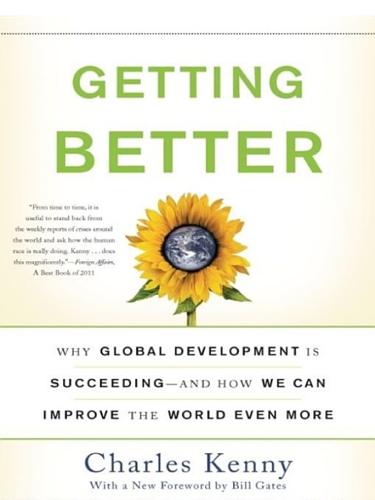
Getting Better: Why Global Development Is Succeeding--And How We Can Improve the World Even More
by
Charles Kenny
Published 31 Jan 2011
So long as the smell was limited to the river, so the thinking went, no harm was done. John Snow’s analysis of London’s cholera outbreaks in the 1850s formed the scientific basis for overturning miasma theories and connecting the disease with infected water. A further spur to sewage reform was Pasteur’s early work confirming the germ theory of disease. And with the 1865 completion of Joseph Bazalgette’s five new sewer lines that transported waste to the east out of the city, the capital freed itself from major cholera outbreaks—if at considerable expense.12 The germ theory took some time to gain acceptance worldwide. Indeed, we’ll see that many in the developing world are not aware of the theory to this day.
…
In India, the percentage of parents who think the correct treatment for a child with diarrhea is to reduce the amount they are given to drink (absolutely the wrong thing to do) varies considerably from state to state. Fewer than 5 percent give this wrong answer in states like Kerala, where we have seen that health outcomes are very strong. Above 50 percent suggest this response in West Bengal—where child mortality in the 1990s was about three times as high as in Kerala.24 Again, we have seen that the germ theory of disease has been central to the development and spread of numerous health-saving interventions as powerful yet mundane as hand washing. But only one-third of respondents in a Ghanaian survey understood that ill health related to sanitation was the result of germs rather than heat, smell, or dirt, for example.

Age of the City: Why Our Future Will Be Won or Lost Together
by
Ian Goldin
and
Tom Lee-Devlin
Published 21 Jun 2023
A major programme of upgrading London’s sewerage system was initiated, with waste being pumped downriver of the city’s water intake and flushed out to sea, freeing the city from its periodic cholera outbreaks.29 It would ultimately take the diligent scientific efforts of Louis Pasteur and Robert Koch for the germ theory of disease to finally supplant the miasma theory. Their discoveries led not only to efforts by cities around the world to clean up their water supplies, but also to the adoption of basic hygiene practices we now take for granted – like washing hands or cleaning medical implements after use – that play a crucial role in preventing disease transmission. We also owe the wide range of vaccines we now have available to the pioneering thinkers behind the germ theory of disease. Vaccines have a long history. Inoculation against smallpox became commonplace in Europe early in the nineteenth century after an English country doctor named Edward Jenner discovered that infecting a patient with the far less dangerous cowpox conferred immunity against smallpox.
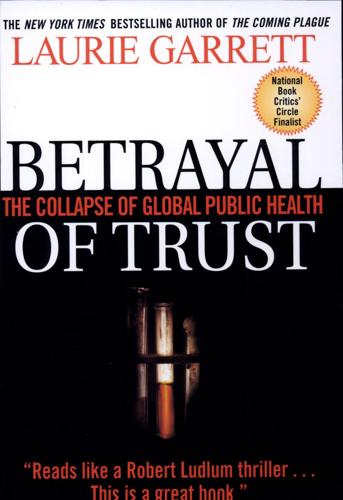
Betrayal of Trust: The Collapse of Global Public Health
by
Laurie Garrett
Published 15 Feb 2000
Public health is not an ideology, religion, or political perspective—indeed, history demonstrates that whenever such forces interfere with or influence public health activities a general worsening of the populace’s well-being usually followed. As envisioned by its American pioneers public health was a practical system, or infrastructure, rooted in two fundamental scientific tenets: the germ theory of disease and the understanding that preventing disease in the weakest elements of society ensured protection for the strongest (and richest) in the larger community. As infectious diseases became less of a concern in the wealthy world, in the mid-twentieth century public health leaders struggled to apply those basic tenets, and the infrastructure upon which they were based, to nonmicrobial collective health issues, such as cancer and heart disease.
…
Joseph Lister, who found that by pouring carbolic acid on a wound or a suture site, infection would never take hold there. Beginning in 1876 Drs. Robert Koch in Berlin and Louis Pasteur in Paris were racing to identify the individual germs that caused disease.50 In 1880 Pasteur published his landmark Germ Theory of Disease, in which he argued that all contagious diseases were caused by microscopic organisms that damaged the human victim at the cellular level—as Rudolf Virchow had argued—and spread from person to person. In Berlin, Paul Erlich went a step further, discovering that animals that survived an infection had substances in their blood that could successfully fight off the disease in other affected animals.
…
Similarly, New York City’s health leaders realized that the age of laboratory-informed decision making had arrived and constructed the nation’s first public health laboratory. To really grasp the revolution then under way, however, men like Hewitt and his New York counterparts sailed off to Europe to sit at the feet of the great Koch and Pasteur. All over America there were individuals inside local health departments who wholeheartedly embraced Pasteur’s germ theory of disease, reveled in the newfound possibilities of their laboratories, and, practically overnight, changed the methods, strategies, and tactics of government public health. Past measures of disease prevention and epidemic control may have been effective—at least in some cases—but they lacked scientific explanation.
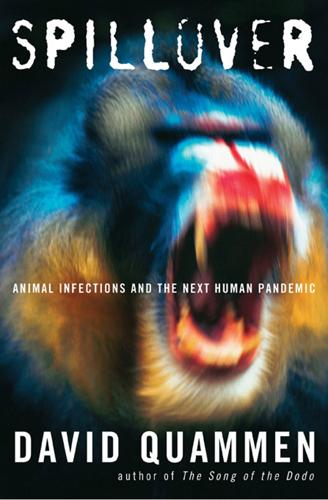
Spillover: Animal Infections and the Next Human Pandemic
by
David Quammen
Published 30 Sep 2012
For whooping cough, the CCS seems to be more like two hundred thousand people. Such considerations have become grist for a lot of fancy ecological mathematics. Daniel Bernoulli, a Dutch-born mathematician from a family of mathematicians, was arguably the first person to apply mathematical analysis to disease dynamics, long before the germ theories of disease (there was a gaggle, not just one) became widely accepted. In 1760, while holding a professorship at the University of Basel in Switzerland, Bernoulli produced a paper on smallpox, exploring the costs versus the benefits of universal immunization against that disease. His career was long and eclectic, encompassing mathematical work on a wide range of topics in physics, astronomy, and political economy, from the movement of fluids and the oscillation of strings to the measurement of risk and ideas about insurance.
…
Robert Koch, who had been a student of Jakob Henle’s at Göttingen, advanced beyond observation and supposition with his experimental work of the 1870s and 1880s, identifying the microbial causes of anthrax, tuberculosis, and cholera. Koch’s discoveries, along with those of Pasteur and Joseph Lister and William Roberts and John Burdon Sanderson and others, provided the empirical bases for a swirl of late-nineteenth-century ideas that commonly get lumped as “the germ theory” of disease, which marked a movement away from older notions of malign vapors, transmissible poisons, imbalanced humors, contagious putrefaction, and magic. But the germs with which Koch, Pasteur, and Lister mainly concerned themselves (apart from Pasteur’s brilliant guesswork on rabies) were bacteria.
…
Everything I’ve just mentioned is encompassed within this rubric: the ecology and evolutionary biology of zoonotic diseases. Ecological circumstance provides opportunity for spillover. Evolution seizes opportunity, explores possibilities, and helps convert spillovers to pandemics. It’s a neat but sterile historical coincidence that the germ theories of disease came to scientific prominence at about the same time, in the late nineteenth century, as the Darwinian theory of evolution—neat because these were two great bodies of insight with much to offer each other, and sterile because their synergy was long delayed, as germ theories remained for another sixty years largely uninformed by evolutionary thinking.
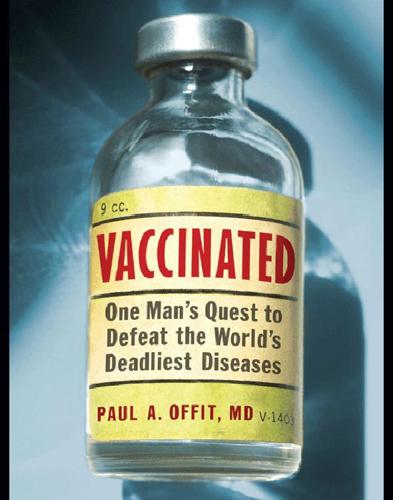
Vaccinated: One Man's Quest to Defeat the World's Deadliest Diseases
by
Paul A. Offit
Published 1 Jan 2007
He then injected his culture of anthrax bacteria into mice and found that again they all got sick; their lungs were loaded with anthrax bacteria. Koch had made an important observation. Until that time, scientists had believed that only bacteria taken from someone who was sick could make you sick. Koch proved that bacteria grown in his laboratory could also cause disease. Robert Koch was a father of the germ theory of disease. During the next ten years Koch found that he could grow bacteria on nutrient media made from potatoes and gelatin. He placed his media in special flat glass dishes invented by a young researcher working in his laboratory, Julius Petri. Later, Koch discovered the bacteria that cause tuberculosis and cholera.
…
See influenza Flutie, Doug formaldehyde, in vaccine development, fowlpox Fox Chase Cancer Center Francis, Thomas Franklin, Benjamin Gallo, Robert gamma globulin, with measles vaccine Gard, Sven Gates, Bill and Melinda Gelmo, Paul Genentech genetic engineering genetics, and disease Gerberding, Julie germ theory of disease German measles. See rubella GlaxoSmithKline Global Alliance for Vaccines and Immunizations gold miners, pneumonia in Goodpasture, Ernest Great Ormond Street Hospital green onions Green, Ernest Gregg, Norman McAlister Gross, Ludwik Haemophilus influenzae type b Hahn, Beatrice Hamilton-Ayers, Michele Hammond, Jack Harding, Warren Harrison, George Harvard Medical School Hayflick limit Hayflick, Leonard hemagglutinin hemoglobin S hepatitis B hepatitis vaccine for Hepatitis B: The Hunt for a Killer Virus herpesvirus Hilleman, Anna Hilleman, Edith Hilleman, Elsie Hilleman, Gustave Hilleman, Harold Hilleman, Howard Hilleman, Jeryl Lynn Hilleman, Kirsten Hilleman, Lorraine Hilleman, Maureen Hilleman, Maurice and autism controversy awards and honors and cancer vaccine and chickenpox vaccine and common cold research early life and education family life farming experience and Haemophilus influenzae type b vaccine and hepatitis vaccine and influenza vaccine and interferon research and Japanese encephalitis virus vaccine management style of and measles vaccine and mumps vaccine and MMR vaccine obscurity of old age and death and pneumococcal vaccine and polio vaccine research predecessors and rubella vaccine Hilleman, Norman Hilleman, Richard Hilleman, Robert Hilleman, Thelma Hilleman, Victor Hilleman, Walter Hippocrates Hippocratic Oath Hiroshima Hirst, George Hong Kong, bird flu in Hooper, Edward Hoover, Herbert Horstmann, Dorothy Horton, Richard House Committee on Government Reform Hubbard Farms Hughes, Walte human immunodeficiency virus (HIV) human papillomavirus (HPV) Hunter, John hydrocephalus Iditarod dogsled race immune response Imus, Don Infectious Diseases Society of America influenza Asian bird vaccine for in wars Influenza Commission Ingalls, Theodore Institute of Medicine insulin interferon Isaacs, Alick Japanese encephalitis virus Jenner, Edward John Howland Award Johns Hopkins Hospital Johns Hopkins School of Public Health Kaposi’s sarcoma Karolinska Institute Katz, Sam Kennedy, John F.

Galileo's Daughter: A Historical Memoir of Science, Faith and Love
by
Dava Sobel
Published 25 May 2009
By the early seventeenth century, Europeans had gained enough experience with the pestilence to recognize the accumulation of dead rats in streets and houses as the harbinger of disease. The causal connection, however, remained elusive. People continued to blame the plague on miasmas of swampy air, the full Moon, conjunctions of the planets, famine, fate, beggars, prostitutes, or Jews. Two hundred years before the germ theory of disease, no one realized that the plague was caused by microbes living in and on the ubiquitous black rats.* When a sick rat died, its hungry fleas jumped the few inches to another animal, or to a nearby human. Having ingested infected blood, the fleas delivered the disease by inoculation with their next bite.
…
Isaac Newton is born in England, December 25. 1643 Galileo’s student Evangelista Torricelli (1608-47) invents mercury barometer. 1644 Pope Urban VIII dies. 1648 Thirty Years’ War ends. 1649 Vincenzio Galilei (son) dies in Florence, May 15. 1654 Grand Duke Ferdinando II improves on Galileo’s thermometer by closing the glass tube to keep air out. 1655-56 Christiaan Huygens (1629-95) improves telescope, discovers largest of Saturn’s moons, sees Saturn’s “companions” as a ring, patents pendulum clock. 1659 Suor Arcangela dies at San Matteo, June 14. 1665 Jean-Dominique Cassini (1625-1712) discovers and times the rotation of Jupiter and Mars. 1669 Sestilia Bocchineri Galilei dies. 1670 Grand Duke Ferdinando II dies, succeeded by his only surviving son, Cosimo III. 1676 Ole Roemer (1644-1710) uses eclipses of Jupiter’s moons to determine the speed of light; Cassini discovers gap in Saturn’s rings. 1687 Newton’s laws of motion and universal gravitation are published in his Principia. 1705 Edmond Halley (1656-1742) studies comets, realizes they orbit the Sun, predicts return of a comet later named in his honor. 1714 Daniel Fahrenheit (1686-1736) develops mercury thermometer with accurate scale for scientific purposes. 1718 Halley observes that even the fixed stars move with almost imperceptible “proper motion” over long periods of time. 1728 English astronomer James Bradley (1693-1762) provides first evidence for the Earth’s motion through space based on the aberration of starlight. 1755 Immanuel Kant (1724-1804) discerns the true shape of the Milky Way, identifies the Andromeda nebula as a separate galaxy. 1758 “Halley’s comet” returns. 1761 Mikhail Vasilyevich Lomonosov (1711-65) realizes Venus has an atmosphere. 1771 Comet hunter Charles Messier (1730-1817) identifies a list of noncometary objects, many of which later prove to be distant galaxies. 1781 William Herschel (1738-1822) discovers the planet Uranus. 1810 Napoleon Bonaparte, having conquered the Papal States, transfers the Roman archives, including those of the Holy Office with all records of Galileo’s trial, to Paris. 1822 Holy Office permits publication of books that teach Earth’s motion. 1835 Galileo’s Dialogue is dropped from Index of Prohibited Books. 1838 Stellar parallax, and with it the distance to the stars, is detected independently by astronomers working in South Africa, Russia, and Germany; Friedrich Wilhelm Bessel (1784-1846) publishes the first account of this phenomenon, for the star 61 Cygni. 1843 Galileo’s trial documents are returned to Italy. 1846 Neptune and its largest moon are discovered by predictions and observations of astronomers working in several countries. 1851 Jean-Bernard-Leon Foucault (1819-68) in Paris demonstrates the rotation of the Earth by means of a two-hundred-foot pendulum. 1861 Kingdom of Italy proclaimed, uniting most states and duchies. 1862 French chemist Louis Pasteur (1822-95) publishes germ theory of disease. 1877 Asaph Hall (1829-1907) discovers the moons of Mars. 1890-1910 Complete works, Le Opere di Galileo Galilei, are edited and published in Florence by Antonio Favaro. 1892 University of Pisa awards Galileo an honorary degree—250 years after his death. 1893 Providentissimus Deus of Pope Leo XIII cites Saint Augustine, taking the same position Galileo did in his Letter to Grand Duchess Cristina, to show that the Bible did not aim to teach science. 1894 Pasteur’s student Alexandre Yersin (1863-1943) discovers bubonic plague bacillus and prepares serum to combat it. 1905 Albert Einstein (1879-1955) publishes his special theory of relativity, establishing the speed of light as an absolute limit. 1908 George Ellery Hale (1868-1938) discerns the magnetic nature of sunspots. 1917 Willem de Sitter (1872-1934) intuits the expansion of the universe from Einstein’s equations. 1929 American astronomer Edwin Hubble (1889-1953) finds evidence for expanding universe. 1930 Roberto Cardinal Bellarmino is canonized as Saint Robert Bellarmine by Pope Pius XI. 1935 Pope Pius XI inaugurates Vatican Observatory and Astrophysical Laboratory at Castel Gandolfo. 1950 Humani generis of Pope Pius XII discusses the treatment of unproven scientific theories that may relate to Scripture; reaches same conclusion as Galileo’s Letter to Grand Duchess Cristina. 1959 Unmanned Russian Luna 3 spacecraft radios first views of the Moon’s far side from lunar orbit. 1966 Index of Prohibited Books is abolished following the Second Vatican Council. 1969 American astronauts Neil Armstrong and Buzz Aldrin walk on the Moon. 1971 Apollo 15 commander David R.

The End of Illness
by
David B. Agus
Published 15 Oct 2012
I knew I had to provide some explanation to justify my statements and offer at least some hope for the future. I then shared how we had grown accustomed to a certain mode of thinking in the sciences that owes its origins to discoveries made a long time ago. We’ve had a hard time moving past the germ theory of disease, which dominated, and in many ways defined, medicine in the twentieth century. According to this theory, if you can figure out what species of germ you are infected with, then your problem is solved because that tells you how you should treat the disease. This became the general paradigm of medicine.
…
Like Eastern philosophies, the idea was to try to restore the order of the various forces that were controlling the body. But this approach to medicine and honoring the body as a whole was all but abandoned in the early twentieth century, especially in the West, where we became distracted by our triumph over infectious agents. It’s all the more interesting to note that, at the time that the germ theory of disease was really exploding and antibiotics were being discovered, renowned geneticist J. B. S. Haldane articulated the following at Cambridge on February 4, 1923: The recent history of medicine is as follows. Until about 1870 medicine was largely founded on physiology, or, as the Scotch called it “Institutes of Medicine.”
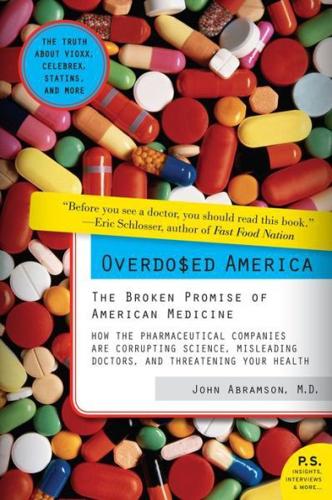
Overdosed America: The Broken Promise of American Medicine
by
John Abramson
Published 20 Sep 2004
(Tragically, in 1940, 55 years after receiving his lifesaving treatment, Joseph Meister took his own life rather than accede to an order issued by invading German soldiers to open Pasteur’s burial crypt.) While Pasteur was making so much progress in France, Robert Koch, a German physician, was putting the finishing touches on the germ theory of disease. In 1882, he reported that the cause of tuberculosis, the tubercle bacillus, could be identified by looking at infected tissue under the microscope. And further, he found that the organisms that cause tuberculosis could be grown in culture, produce disease when injected into laboratory animals, be extracted from these infected animals, and be grown again in culture.
…
See exercise Flexner Report, 196–97 Fludara, 89 folk medicine, biomedicine as, 201–4 Food and Drug Administration (FDA) antidepressants approval, 115–17, 243 Celebrex review, 23–24, 30, 32–33 Claritin review, 152–53 declining oversight by, 157–58, 161 DTC advertising approval, 150–52 financial ties of, with drug companies, xxii, 85–87, 89–90, 125, 249–50 hormone replacement therapy approval, 59 medical journals and, 37–38 Warning Letters (see Warning Letters, FDA) web site and data, 28, 37 Forteo, 217 Fosamax, 213–15, 218, 246 4S study, 142, 143 Framingham Heart Study, 63, 130–35, 141 free drug samples, 124–26 funding. See also conflicts of interest FDA drug reviews, 85–90, 249 medical research, 94–95, 196–97, 252–53 universal health insurance, xxii, 253–54 gastroesophageal reflux disease (GERD), 101–2 gastrointestinal complications, 24–25, 28–36, 43 gemfibrozil, 133 Genentech, 226–27 germ theory of disease, 195 ghostwriters, 106–7 Gleevac, 43–44 goals, commercial vs. health, 21–22, 50–51 government, U.S. health care quality and, 257–59 Medicaid, 20, 75, 162 Medicare prescription drug bill and purchasing power of, 245 (see also Medicare) regulatory role of, xxii, 157–58, 161, 249–53 (see also Food and Drug Administration; National Institutes of Health) Republican Party and medical industry, 90–91, 247 research funding by, 94–95 universal health insurance, xvii, xxii, 20, 46, 253–54 (see also health insurance) Guidant, 99, 243–44 guidelines.
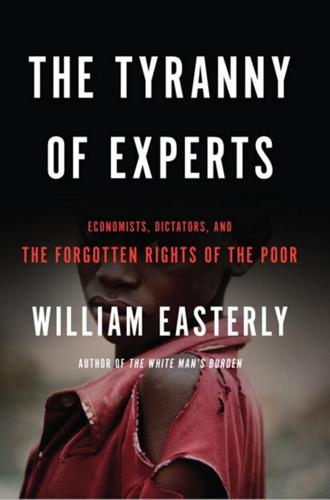
The Tyranny of Experts: Economists, Dictators, and the Forgotten Rights of the Poor
by
William Easterly
Published 4 Mar 2014
Princeton Professor Angus Deaton shows in his 2013 book, The Great Escape, that understanding (which led to correcting) this problem had the largest single effect on child mortality in rich countries over this period. We will see in a future chapter how free societies are the best option for scientific discoveries and technological breakthroughs. Here we just note in passing that the germ theory of disease needed to arrive in New York. It did so later in the nineteenth century, mainly through research from England. The physician John Snow’s famous identification of a particular water pump in London as the source of the contaminated water that spread cholera in 1854 London was a key turning point.27 Virtually all the scientific discoveries that also enable progress today on child mortality in poor countries were made in free societies.
…
Correcting this would require a multipronged attack of government and private actions that lasted for decades. The third problem was getting the population itself to embrace more sanitary habits. Washing one’s hands after going to the bathroom is something we do without thinking today, but it took a lot of effort to get to that point. The population as well as the experts had to embrace the germ theory of disease. The fourth problem was simply that New York and the United States were still poor by today’s standards. Per capita income in the United States in 1850 was one-seventeenth of that today—about the same as Ghana today. Even a rich person like Benjamin Seixas in 1850 would be poor in many dimensions by today’s standards.
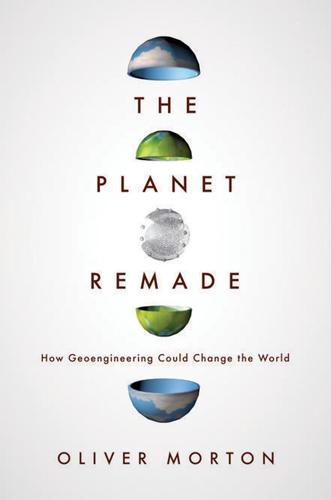
The Planet Remade: How Geoengineering Could Change the World
by
Oliver Morton
Published 26 Sep 2015
Buckminster, 76 Gagarin, Yuri, 57 Gaia hypothesis, 75, 290–1 Gardiner, Stephen, 161 gas, see natural gas Gates, Bill, 28, 102, 155, 156–7, 353 Gates, Melinda, 353 Gaud, William, 192 GCMs, 314, 317 Gellner, Ernest, 211 General Electric research laboratory, 268–70 genetic modification, 289–90 ‘geoclique’, 157–8, 163, 286 geoengineering, climate see climate geoengineering geology, 40, 321–2 GeoMIP, 113–20, 122, 158 George, Russ, 254–5, 256 George C. Marshall Institute, 154 germ theory of disease, 129 Germany: explosives industry, 190; geoengineering research, 159; nuclear industry, 17, 358; renewable energy (Energiewende), 19, 20, 106, 159; scientific research, 182 Gernsback, Hugo, 243 glaciers and ice: Arctic melting, 313, 362; and cloud brightening, 294–5, 336; and nuclear fallout, 44; protecting, 344–5, 371–2, 374; as record of earlier climates, 222–3, 227, 321, 344; and tracking climate change, 222–7; and volcanic eruptions, 86, 88 global cooling, 275–9 global warming: and counter-geoengineering, 341–2; ‘pause’ in, 3, 70, 108, 280; sulphur’s masking effect, 279–80; see also climate change Goddard Institute for Space Studies, 276 Goldsmith, Oliver, 83 Goodell, Jeff, 157 Gore, Al, 349 GPS, 118–19 Gran, Haaken Hasberg, 252 green movement: and carbon dioxide emissions, 141, 143; and CCS, 247; future scenarios, 351; and geoengineering, 28, 159, 261–2; influence on environmental policies, 19–20, 141; moderate green views on climate change, 135; and nuclear power, 16–17 ‘Greenfinger’ scenario, 352–4 greenhouse gases: and climate change, 65–71, 72–3; and farming, 224–5, 227; harm caused by those other than carbon dioxide, 146; historical atmospheric levels, 222–8; and ice ages, 231; see also carbon dioxide; methane; nitrous oxide; water vapour Greenland, 222, 342, 362, 371, 374 Grübler, Arnulf, 11 guano, 180 Haber, Fritz, 182, 190, 193, 202 Hadley Centre, 273 hail, 271 Hamblin, Jacob Darwin, 136, 309 Hamilton, Clive, 157, 248 Hampson, John, 278 Hansen, James, 90–2, 140, 276 Hardin, Garrett, 77–8 Harvard Forest, 97–8 Harvard University, 28 Havel, Václav, 351 Haywood, Jim, 293 HCFCs, 72, 146 health: effect of European ‘discovery’ of Americas on Native Americans, 227; and fossil fuels, 12, 16; germ theory of disease, 129; nitrogen pollution of water, 195–9; and nuclear power, 15–16, 45; and ozone layer, 49–50; vaccination programmes, 353; and veilmaking, 112, 281; see also air pollution Heard, Gerald, 41, 342 Hebrew University of Jerusalem, 296 Helin, Glo, 328 helium, 178 Hiroshima, 148, 190 holism, 77 Holmes, Arthur, 216 Holocene, 222–4, 226, 231, 236, 241 Hoskins, Brian, 69 House, Jo, 261 Hoyle, Fred, 278 human empire, 24–5, 125, 177–78, 209–10, 372 human prehistory, 229–31, 241–2 Hungary, 314 hurricanes, 284, 294–5, 295–6, 353 Huxley, Aldous, 41 Huxley, Julian, 313–14 Hyde, Roderick, 149, 151 hydrological cycle: future scenarios, 242, 362; and veilmaking, 114–18; workings of, 64, 67 hydropower, 3, 182 hydrosphere, 40 ice see glaciers and ice ice ages: 1960s and 1970s fear of human-generated, 275–8; artificially starting, 342–3; averting, 149, 278; and carbon dioxide in the oceans, 252–3, 254; and climate change, 231; as climate change phenomenon, 130; and greenhouse gases, 222–4; and human development, 230–1; next, 266–7, 277–8; enduring question of origins, 87–8, 98; and plant growth, 233–4; Younger Dryas, 226–7 ice–albedo feedback, 223, 276, 278, 342–3 IG Farben, 190 IMO see International Maritime Organization India: agriculture, 192; air pollution, 365; future scenarios, 364–6, 367–8; monsoons, 86, 364–6; population issues, 187; rainmaking schemes, 271; and veilmaking models, 121 Indonesia, 86–7 industrialization, 128, 177, 225–6, 228–9 infrared radiation, 65–6 Ingold, Tim, 57 interglacials, 222–4 Intergovernmental Panel on Climate Change (IPCC), 7, 140 internal combustion engine, 212 international agreements see air pollution: agreements; climate negotiations and agreements; nuclear weapons: treaties and test bans; UNFCCC International Energy Agency, 3 International Institute for Applied Systems Analysis, 246 International Maritime Organization (IMO), 282–3, 297–8 interstellar travel, 139, 150 Intertropical Convergence Zone, 293 IPCC see Intergovernmental Panel on Climate Change Ireland, 127 iron fertilization, 252–9, 265 Israel, 16 James, William, 132 Jameson, Fredric, 310 JASON group, 136, 321 Jeanne-Claude, 344 Jefferson, Thomas, 127 Jesus Christ, 125 jet streams, 46–7 Jevons, Stanley, 180–1 Johnson, Lyndon B., 137, 139 Johnston, Harold, 51, 201 Jupiter, 37, 333 Kaempffert, Waldemar, 49, 314 Kármán, Theodore von, 136 Keeling, David, 75–6, 96, 98, 239–40 Keith, David: background, 150; death threats, 104; funds source, 28, 102, 156–7; and geoengineering, 101–2, 107, 149–50, 156–7, 160, 169, 286, 342, 358 Kennedy, John F., 59, 340 Kilimanjaro, Mount, 344–5 Kingsland, Sharon, 79 Kintisch, Eli, 157 Klein, Naomi, 225 Koch, Robert, 129 Krakatau, 86–7, 108 Kravitz, Ben, 113, 116–17 Kruger, Tim, 163 Kyoto conference (1997), 3 Kyoto protocol (2005), 140–1, 144, 145 Lackner, Klaus, 27–8 Langmuir, Irving, 269–70, 272, 295 Latham, John: career, 272–3, 283; cloud work, 268, 272–4, 283–4, 285–8, 294–5, 298–301, 323; home, 298 Latham, Mike, 268, 300 Latour, Bruno, 171, 271 Lawrence Livermore National Laboratory, 148–51, 317, 319, 334, 339 Le Châtelier, Henri Louis, 182 Leith, Chuck, 317 Lenton, Tim, 290 Lesseps, Ferdinand de, 128 Levenson, Tom, 324 LeVier, Tony, 57 Levitt, Stephen, 154–5 Lewis, Simon, 227 Libby, Willard, 45–6 Liebig, Justus von, 178–9, 237, 251–2 lightning, 272, 299–301 lightning conductors, 112, 127 lime and liming, 250–1, 363, 371 lithosphere, 40 Livermore see Lawrence Livermore National Laboratory Lobell, David, 236, 237, 238, 240 Locher, Fabien, 129 Long, Jane, 20 Lotka, Alfred, 75, 78–9, 175, 217–19 Lovell, Jim, 60 Lovelock, James, 75, 275, 278, 282, 287, 290 Lowell, Percival, 131, 132, 133, 139 McCarthy, Cormac, 309 MacCracken, Mike, 319, 327 MacCready, Paul, 299–300 MacDonald, Gordon, 136–7 McKibben, Bill, 125 Maddox, John, 204 Malthus, Thomas, 180, 185–6, 203 Manhattan Project, 42, 148, 312, 321 Marchetti, Cesare, 137, 246, 259 Mariner 9, 89 Mars: canals, 131–3; colonizing, 139, 140; craters, 322; expensive village on, 374; stratosphere, 37, 89 Martin, John, 252–4 Marx, Karl, 179–80, 205 Maryland, University of, 225 Masco, Joe, 310 Maslin, Mark, 227 Mauritius, 127 Mead, Margaret, 327 measles, 227 Mediterranean region, 116, 198, 230, 241, 375 Medwin, Thomas, 332 mending; 359, 372 mesosphere, 41 Meteorological Office, 293, 294 methane: and climate change, 65, 72; and farming, 224–5; historical atmospheric levels, 223; human responsibility for emissions, 72, 146; positive feedback due to, 241; see also natural gas Mexico, 90–1, 189, 190–1, 192 Mexico, Gulf of, 186, 195–6 Middle East, 284–5 the military, and asteroid impact work, 334–5, 339–41; and cabin ecology, 75; and geoengineering, 315; and climate modification. 158, 270; and cloud seeding. 270, 272; and geophysical warfare, 135–7; and nuclear energy, 16; and nuclear weapons, 42, 306, 308–9 mirrors, space-based, 149, 150–1 Mitchell, Edgar, 77 mitigation see adaptation and mitigation monsoons: future scenarios, 364–6, 367–8, 371; and geoengineering, 292; prehistoric, 241; and volcanic eruptions, 86, 115 Montreal protocol (1987), 53, 110, 143–4 moon: Clementine mission to, 334; craters, 322; Earth seen from, 60, 63, 65; planned human moonbases, 75; planned nuclear explosion on, 338, 339; appearance changed by volcanic eruptions on Earth, 86 Mooney, Pat, 23 More, Sir Thomas, 124, 127 Morrison, David, 328, 330–1 Mossop, S.
…
Marshall Institute, 154 germ theory of disease, 129 Germany: explosives industry, 190; geoengineering research, 159; nuclear industry, 17, 358; renewable energy (Energiewende), 19, 20, 106, 159; scientific research, 182 Gernsback, Hugo, 243 glaciers and ice: Arctic melting, 313, 362; and cloud brightening, 294–5, 336; and nuclear fallout, 44; protecting, 344–5, 371–2, 374; as record of earlier climates, 222–3, 227, 321, 344; and tracking climate change, 222–7; and volcanic eruptions, 86, 88 global cooling, 275–9 global warming: and counter-geoengineering, 341–2; ‘pause’ in, 3, 70, 108, 280; sulphur’s masking effect, 279–80; see also climate change Goddard Institute for Space Studies, 276 Goldsmith, Oliver, 83 Goodell, Jeff, 157 Gore, Al, 349 GPS, 118–19 Gran, Haaken Hasberg, 252 green movement: and carbon dioxide emissions, 141, 143; and CCS, 247; future scenarios, 351; and geoengineering, 28, 159, 261–2; influence on environmental policies, 19–20, 141; moderate green views on climate change, 135; and nuclear power, 16–17 ‘Greenfinger’ scenario, 352–4 greenhouse gases: and climate change, 65–71, 72–3; and farming, 224–5, 227; harm caused by those other than carbon dioxide, 146; historical atmospheric levels, 222–8; and ice ages, 231; see also carbon dioxide; methane; nitrous oxide; water vapour Greenland, 222, 342, 362, 371, 374 Grübler, Arnulf, 11 guano, 180 Haber, Fritz, 182, 190, 193, 202 Hadley Centre, 273 hail, 271 Hamblin, Jacob Darwin, 136, 309 Hamilton, Clive, 157, 248 Hampson, John, 278 Hansen, James, 90–2, 140, 276 Hardin, Garrett, 77–8 Harvard Forest, 97–8 Harvard University, 28 Havel, Václav, 351 Haywood, Jim, 293 HCFCs, 72, 146 health: effect of European ‘discovery’ of Americas on Native Americans, 227; and fossil fuels, 12, 16; germ theory of disease, 129; nitrogen pollution of water, 195–9; and nuclear power, 15–16, 45; and ozone layer, 49–50; vaccination programmes, 353; and veilmaking, 112, 281; see also air pollution Heard, Gerald, 41, 342 Hebrew University of Jerusalem, 296 Helin, Glo, 328 helium, 178 Hiroshima, 148, 190 holism, 77 Holmes, Arthur, 216 Holocene, 222–4, 226, 231, 236, 241 Hoskins, Brian, 69 House, Jo, 261 Hoyle, Fred, 278 human empire, 24–5, 125, 177–78, 209–10, 372 human prehistory, 229–31, 241–2 Hungary, 314 hurricanes, 284, 294–5, 295–6, 353 Huxley, Aldous, 41 Huxley, Julian, 313–14 Hyde, Roderick, 149, 151 hydrological cycle: future scenarios, 242, 362; and veilmaking, 114–18; workings of, 64, 67 hydropower, 3, 182 hydrosphere, 40 ice see glaciers and ice ice ages: 1960s and 1970s fear of human-generated, 275–8; artificially starting, 342–3; averting, 149, 278; and carbon dioxide in the oceans, 252–3, 254; and climate change, 231; as climate change phenomenon, 130; and greenhouse gases, 222–4; and human development, 230–1; next, 266–7, 277–8; enduring question of origins, 87–8, 98; and plant growth, 233–4; Younger Dryas, 226–7 ice–albedo feedback, 223, 276, 278, 342–3 IG Farben, 190 IMO see International Maritime Organization India: agriculture, 192; air pollution, 365; future scenarios, 364–6, 367–8; monsoons, 86, 364–6; population issues, 187; rainmaking schemes, 271; and veilmaking models, 121 Indonesia, 86–7 industrialization, 128, 177, 225–6, 228–9 infrared radiation, 65–6 Ingold, Tim, 57 interglacials, 222–4 Intergovernmental Panel on Climate Change (IPCC), 7, 140 internal combustion engine, 212 international agreements see air pollution: agreements; climate negotiations and agreements; nuclear weapons: treaties and test bans; UNFCCC International Energy Agency, 3 International Institute for Applied Systems Analysis, 246 International Maritime Organization (IMO), 282–3, 297–8 interstellar travel, 139, 150 Intertropical Convergence Zone, 293 IPCC see Intergovernmental Panel on Climate Change Ireland, 127 iron fertilization, 252–9, 265 Israel, 16 James, William, 132 Jameson, Fredric, 310 JASON group, 136, 321 Jeanne-Claude, 344 Jefferson, Thomas, 127 Jesus Christ, 125 jet streams, 46–7 Jevons, Stanley, 180–1 Johnson, Lyndon B., 137, 139 Johnston, Harold, 51, 201 Jupiter, 37, 333 Kaempffert, Waldemar, 49, 314 Kármán, Theodore von, 136 Keeling, David, 75–6, 96, 98, 239–40 Keith, David: background, 150; death threats, 104; funds source, 28, 102, 156–7; and geoengineering, 101–2, 107, 149–50, 156–7, 160, 169, 286, 342, 358 Kennedy, John F., 59, 340 Kilimanjaro, Mount, 344–5 Kingsland, Sharon, 79 Kintisch, Eli, 157 Klein, Naomi, 225 Koch, Robert, 129 Krakatau, 86–7, 108 Kravitz, Ben, 113, 116–17 Kruger, Tim, 163 Kyoto conference (1997), 3 Kyoto protocol (2005), 140–1, 144, 145 Lackner, Klaus, 27–8 Langmuir, Irving, 269–70, 272, 295 Latham, John: career, 272–3, 283; cloud work, 268, 272–4, 283–4, 285–8, 294–5, 298–301, 323; home, 298 Latham, Mike, 268, 300 Latour, Bruno, 171, 271 Lawrence Livermore National Laboratory, 148–51, 317, 319, 334, 339 Le Châtelier, Henri Louis, 182 Leith, Chuck, 317 Lenton, Tim, 290 Lesseps, Ferdinand de, 128 Levenson, Tom, 324 LeVier, Tony, 57 Levitt, Stephen, 154–5 Lewis, Simon, 227 Libby, Willard, 45–6 Liebig, Justus von, 178–9, 237, 251–2 lightning, 272, 299–301 lightning conductors, 112, 127 lime and liming, 250–1, 363, 371 lithosphere, 40 Livermore see Lawrence Livermore National Laboratory Lobell, David, 236, 237, 238, 240 Locher, Fabien, 129 Long, Jane, 20 Lotka, Alfred, 75, 78–9, 175, 217–19 Lovell, Jim, 60 Lovelock, James, 75, 275, 278, 282, 287, 290 Lowell, Percival, 131, 132, 133, 139 McCarthy, Cormac, 309 MacCracken, Mike, 319, 327 MacCready, Paul, 299–300 MacDonald, Gordon, 136–7 McKibben, Bill, 125 Maddox, John, 204 Malthus, Thomas, 180, 185–6, 203 Manhattan Project, 42, 148, 312, 321 Marchetti, Cesare, 137, 246, 259 Mariner 9, 89 Mars: canals, 131–3; colonizing, 139, 140; craters, 322; expensive village on, 374; stratosphere, 37, 89 Martin, John, 252–4 Marx, Karl, 179–80, 205 Maryland, University of, 225 Masco, Joe, 310 Maslin, Mark, 227 Mauritius, 127 Mead, Margaret, 327 measles, 227 Mediterranean region, 116, 198, 230, 241, 375 Medwin, Thomas, 332 mending; 359, 372 mesosphere, 41 Meteorological Office, 293, 294 methane: and climate change, 65, 72; and farming, 224–5; historical atmospheric levels, 223; human responsibility for emissions, 72, 146; positive feedback due to, 241; see also natural gas Mexico, 90–1, 189, 190–1, 192 Mexico, Gulf of, 186, 195–6 Middle East, 284–5 the military, and asteroid impact work, 334–5, 339–41; and cabin ecology, 75; and geoengineering, 315; and climate modification. 158, 270; and cloud seeding. 270, 272; and geophysical warfare, 135–7; and nuclear energy, 16; and nuclear weapons, 42, 306, 308–9 mirrors, space-based, 149, 150–1 Mitchell, Edgar, 77 mitigation see adaptation and mitigation monsoons: future scenarios, 364–6, 367–8, 371; and geoengineering, 292; prehistoric, 241; and volcanic eruptions, 86, 115 Montreal protocol (1987), 53, 110, 143–4 moon: Clementine mission to, 334; craters, 322; Earth seen from, 60, 63, 65; planned human moonbases, 75; planned nuclear explosion on, 338, 339; appearance changed by volcanic eruptions on Earth, 86 Mooney, Pat, 23 More, Sir Thomas, 124, 127 Morrison, David, 328, 330–1 Mossop, S.
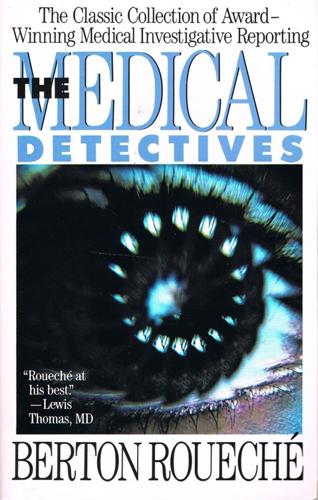
The Medical Detectives
by
Berton Roueche
Published 1 Jan 1980
It was anthrax whose elucidation by the then obscure German country doctor Robert Koch at the University of Breslau in 1876 (in a paper entitled "Die Atiologie der Milz-brandkrankheit begrundet auf die Entwicklungsgeschichte des Bacillus Anthracis") provided the first proof that a specific microorganism could cause a specific disease, a demonstration that largely completed the establishment of the germ theory of disease causation. And it was from the procedure he so successfully followed in his anthrax study that Koch conceived the celebrated postulates of experimental evidence that bear his name. This formulation, which establishes four conditions that must be met before a given microorganism can be accepted as the cause of a given disease, is the keystone of modern bacteriology.
…
The renowned eighteenth-century American clinician Benjamin Rush was responsible for one of the earliest of these. Rush treated mental patients in his Philadelphia practice with a shock therapy that involved the induction of suppuration at the back of the neck to excite a tonic discharge "from the neighborhood of the brain." The triumphant confirmation in the late nineteenth century of the germ theory of disease provided a more convenient method of producing a chemotherapeutic shock. In 1890, the Austrian neuropsychiatrist Julius Wagner von Jauregg used an extract of the tubercle bacillus to ignite what he hoped would be an explosively curative fever in an insane patient. This early effort was not a success, but many years later, in 1914, he tried again, with the malaria organism, and this time achieved a distinct improvement in the condition of a group of men suffering from general paresis.

Capitalism in America: A History
by
Adrian Wooldridge
and
Alan Greenspan
Published 15 Oct 2018
In 1900, a tenth of children died in infancy. In some parts of the country, the figure was as high as one in four. In 2000, only one of about 150 babies died in their first year. Scientific advance played a role in this. The work of Louis Pasteur and Robert Koch led to the acceptance of the germ theory of disease and life-saving innovations such as pasteurized milk. Advancing knowledge led to better behavior: cities began to remove garbage, purify water supplies, and process sewage; citizens washed their hands and otherwise improved their personal habits. The battle against ill health proved so successful by 2000 that some inhabitants of Silicon Valley began to regard death as a problem to be solved rather than a fact to be approached with dignity.
…
Confederate economy, 81, 81–82 1800–1860, 41, 59 1880–1917, 154, 155, 156 1920–1940, 187, 194 1930–1936, 251–52 1942–1945, 268 1960–1965, 298 1970–1990, 359 1998–2000, 367 Geneen, Harold, 320 General Electric (GE), 105, 140, 143, 144, 148–49, 202, 203–4, 280, 290, 312, 319, 330, 335–36, 392, 413 General Motors (GM), 209–12, 268, 288, 289, 294, 314, 318, 333, 359, 360 geographical mobility, 11–12, 389, 392–93 George, Henry, 177 George Washington Bridge, 90 germ theory of disease, 430 Giannini, Amadeo, 3 GI Bill, 273, 274, 281–82 Gilder, George, 333 Gilman, George Francis, 140 Giuliani, Rudy, 337–38 Glass-Steagall Act, 343 Glidden, Joseph, 116 globalization, 4, 278–79, 294–95, 320–21, 332, 343–47, 366, 376–77 Golden Gate Bridge, 274, 412 Gold Exchange Standard, 258–59 “Goldilocks economy,” 366–67 Goldin, Claudia, 295, 400 Goldman Sachs, 375 gold reserves, 228, 228, 229, 242, 307, 308 gold rush, 42, 101, 111 gold standard, 25, 150–53, 157, 160–63, 184–85, 226–29, 258–59, 306–7, 329 Gold Standard Act of 1900, 152 Goldwater, Barry, 277, 304 Gompers, Samuel, 193 Goodyear, Charles, 24, 47, 422 Google, 349, 354–55, 356, 390–91, 396 Gordon, Robert, 4, 199, 274–75, 366–67 Gore, Al, 230, 368 Gore, Howard Mason, 199 Gould, Jay, 124, 130, 139, 167 government-sponsored enterprises (GSEs), 379–80 Grand Central Station (New York City), 96 Granger movement, 171–72 Grant, James, 193 Grant, Ulysses S., 267 Grapes of Wrath (Steinbeck), 225, 262 Gray, Elisha, 109 Grayson, Jackson, 318–19 Great Atlantic & Pacific Tea Company (A&P), 140 “great compression,” 295 Great Crash of 1929, 27, 221–24, 222, 242 Great Depression, 4, 220–66, 373, 418 business and the, 262–66 causes of, 226–37 rising to the challenge, 237–41 Great Merger Movement, 142–45 Great Migration, 11–12, 180–81, 214–15, 392, 436 Great Northern Railway, 88 Great Recession, 386 Great Society, 25, 303–5 Great Stagnation, 4, 399–416, 438 Great Upheaval of 1886, 173 greed and selfishness, 132, 424–25 Greeley, Horace, 73, 130 Grove, Andy, 353 growth rate, 29, 92–93, 387, 387 Grund, Francis, 43 Grundy, Joseph, 232 Haas, Walter, 291 Hamilton, Alexander, 9, 32, 40, 61–67, 161, 239 Hamilton Tariff of 1789, 65 Hancock, John, 32 H&R Block, 293 Hanna, Mark, 159, 168 Hansen, Alvin, 4, 273, 276 Hanson, Gordon, 371 Harding, Warren, 188, 189, 190, 204 “hard” money, 160–61 Harlem, 215 Harlem Renaissance, 215 Harley-Davidson, 345 Harper, Michael, 324 Hartwig, Ron, 318 Hartz, Louis, 182 Harvard Business School, 363, 369 Hawaii, 95 Hawley, Willis, 230 Hawthorne, Nathaniel, 55 Hayek, Friedrich, 26, 277 Hayes, Robert, 311 Hayes, Rutherford B., 167 Hearst, William Randolph, 245 Heckman, James, 400 Hegel, Georg Wilhelm Friedrich, 182 Heinz, H.

Enlightenment Now: The Case for Reason, Science, Humanism, and Progress
by
Steven Pinker
Published 13 Feb 2018
Ever-creative Homo sapiens had long fought back against disease with quackery such as prayer, sacrifice, bloodletting, cupping, toxic metals, homeopathy, and squeezing a hen to death against an infected body part. But starting in the late 18th century with the invention of vaccination, and accelerating in the 19th with acceptance of the germ theory of disease, the tide of battle began to turn. Handwashing, midwifery, mosquito control, and especially the protection of drinking water by public sewerage and chlorinated tap water would come to save billions of lives. Before the 20th century, cities were piled high in excrement, their rivers and lakes viscous with waste, and their residents drinking and washing their clothes in putrid brown liquid.3 Epidemics were blamed on miasmas—foul-smelling air—until John Snow (1813–1858), the first epidemiologist, determined that cholera-stricken Londoners got their water from an intake pipe that was downstream from an outflow of sewage.
…
Not only did new products and techniques emerge; it became better understood why and how the old ones worked, and thus they could be refined, debugged, improved, combined with others in novel ways and adapted to new uses.”10 The invention of the barometer in 1643, which proved the existence of atmospheric pressure, eventually led to the invention of steam engines, known at the time as “atmospheric engines.” Other two-way streets between science and technology included the application of chemistry, facilitated by the invention of the battery, to synthesize fertilizer, and the application of the germ theory of disease, made possible by the microscope, to keep pathogens out of drinking water and off doctors’ hands and instruments. The applied scientists would not have been motivated to apply their ingenuity to ease the pains of everyday life, and their gadgets would have remained in their labs and garages, were it not for two other innovations.
…
Nuclear weapons: The state of play 2015. Canberra: Centre for Nuclear Non-Proliferation and Disarmament, Australian National University. Everett, D. 2008. Don’t sleep, there are snakes: Life and language in the Amazonian jungle. New York: Vintage. Ewald, P. 2000. Plague time: The new germ theory of disease. New York: Anchor. Faderman, L. 2015. The Gay Revolution: Story of a struggle. New York: Simon & Schuster. Fariss, C. J. 2014. Respect for human rights has improved over time: Modeling the changing standard of accountability. American Political Science Review, 108, 297–318. Fawcett, A.
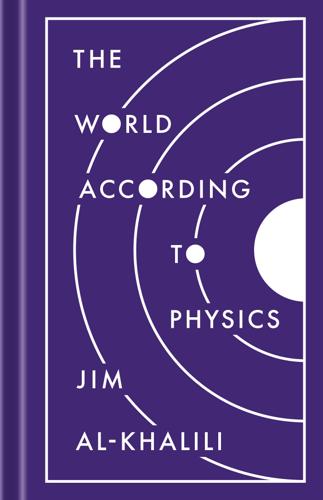
The World According to Physics
by
Jim Al-Khalili
Published 10 Mar 2020
Finally, a good scientific theory makes new predictions about aspects of the world that it explains, which can then also be tested by further observations or experiments. Our most successful scientific theories, such as relativity, quantum mechanics, the Big Bang theory, Darwinian evolution, plate tectonics, or the germ theory of disease, have all undergone rigorous scrutiny and have all emerged as the best explanations we have. None of these can be dismissed, as one often hears (particularly regarding Darwinian evolution), as ‘just a theory’. Such a statement ignores what it means for a scientific theory to be successful—that it has explanatory power, that it is backed up by evidence, and that it makes predictions that can be tested, and yet it remains falsifiable, in the sense that if observations or experimental results contradict its predictions then it cannot be a correct theory, or at best cannot be the whole story.
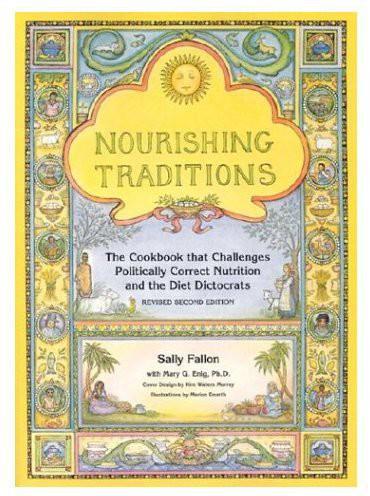
Nourishing Traditions: The Cookbook That Challenges Politically Correct Nutrition and The...
by
Sally Fallon
,
Pat Connolly
and
Mary G. Enig, Phd.
Published 14 May 1995
The scientific community adopted the ideas of Pasteur and completely rejected the ideas of Bechamp. Because of that rejection, and the growth of dogma attached to the theories of Pasteur, our modern medical science may be digging a deep hole for all of us in our desires to overcome disease. Medical and biological education today is based upon Pasteur's "germ theory of disease." Pasteur, who had immense political clout with Emperor Napoleon at the time, put forth the theory that germs, or microbial life, may be divided into "invariable" species and families. He proclaimed that each species caused a specific disease. Later, Dr. Robert Koch put forth his famous "postulates" of microbial infections which solidified Pasteur's point of view.
…
Saute carrots and leeks in butter. When they are just tender, add the pepper and cook about 1 minute. Finally, add zucchini and saute another minute. Season to taste. Every new concept developed in medical science points the way to a new area awaiting further exploration. Discarding both the use of drugs and the germ theory of disease opened the way for me to explore new methods of eliminating the stagnating waste products from the body. Briefly stated my position is: improper foods cause disease; proper foods cure disease. In upholding this theses, I have been in disagreement, at times sharp, with organized orthodox medicine.
…
Fill the hollow of each mushroom with a spoonful of stuffing and place in a buttered glass pan. They may be prepared in advance to this point. To cook, add ¼ inch water to the pan, place in a 350-degree oven and bake for about 20 minutes. This is a delicious and elegant accompaniment to beef. Despite proof to the contrary, many doctors still cling to the germ theory of disease and to the necessity of drugs to combat germs. They point out that smallpox, diphtheria, typhoid fever and pneumonia have been conquered. That is true; no one can quarrel with them on that score. But such major chronic disorders as cancer, heart disease, diabetes, arteriosclerosis, nephrosis and hepatitis have increased eightfold.

50 Future Ideas You Really Need to Know
by
Richard Watson
Published 5 Nov 2013
We should expect data crime to increase significantly, not just at an intergovernmental cybercrime level, but also at a corporate espionage or intellectual property level too. As for ordinary individuals, it’s possible that the default setting will be “public” and that individuals will have to pay to keep their own data private and confidential. the condensed idea A Department of Future Sickness timeline 1870 Germ theory of disease formulated 1921 Insulin developed 1928 Penicillin discovered 1985 Surgical robot conducts first operation 2001 Telesurgery performed 2008 Almost full-face transplant carried out 2020 Healthcare rationing linked to lifestyle choices 2030 Medical data hacking becomes an epidemic 26 Living alone Across the world, the family unit is changing.
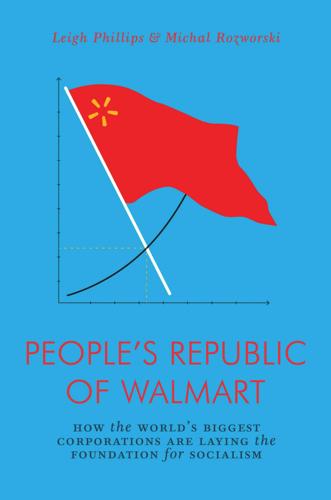
The People's Republic of Walmart: How the World's Biggest Corporations Are Laying the Foundation for Socialism
by
Leigh Phillips
and
Michal Rozworski
Published 5 Mar 2019
They have specialized skills and knowledge furnished by years of medical training. Contrary to the claims of modern-day charlatans, the advent of medical science unquestioningly represented a qualitative leap beyond the magical thinking and credulity that preceded it. The medieval notion that four humors in imbalance causes illness cannot compete with the germ theory of disease. As the lyrics of “The Internationale,” the socialist hymn, famounsly command: “For reason in revolt now thunders, / And at last ends the age of cant! / Away with all your superstitions, / Servile masses arise, arise!” Even so, doctors are not the only medical experts. Although nurses were key to the provision of care in the early-twentieth century United Kingdom, nursing was seen as less valuable because it was associated with femininity and low skill.

The Survival of the City: Human Flourishing in an Age of Isolation
by
Edward Glaeser
and
David Cutler
Published 14 Sep 2021
He removed the handle of the water pump, and the neighborhood’s cholera outbreak ended. This simple experiment led to the conclusion that cholera came through the water, and his success essentially sparked the field of epidemiology. Of course, Snow didn’t actually see the cholera bacterium, and it would take another fifty years before the germ theory of disease became universally accepted. Nonetheless, after 1854 a growing number of physicians believed in the link between water and cholera. On the other side of the Atlantic, more than 5,000 New Yorkers died from cholera in 1849, well after the Croton Aqueduct was completed, including Glaeser’s great-great-great-grandfather (Dr.
…
See also opioid epidemic Fenty, Adrian, 312 Finland, 222 Finlay, Carlos, 51 Fitzpatrick, Maria, 314–15 Fleming, Alexander, 37 Florida, 18–19, 197–98, 240, 313 Florida, Richard, 192 Floyd, George death of, 4, 275–76 and “defund the police” movement, 14 and policy reform, 281 protests following death of, 6, 245, 276, 291 video of death of, 275–76, 280 Food and Drug Administration (FDA), 122, 184, 327 food industry and food safety, 180–85, 201 Foundation trilogy (Asimov), 33, 34 France, 70–71, 103, 172, 190 Freakonomics (Dubner and Levitt), 310 freedom to flourish, importance of, 10, 15–18 free-rider problem, 266, 268, 271 Friedman, John, 276, 299–300 Friedman, Milton, 14 Fryer, Roland, 293 Fuchs, Victor, 99 Future Shock (Toffler), 219 gang crime, 295 Ganong, Peter, 272 Gary, Indiana, 102, 103 Gates, Bill, 156 Gates Foundation, 305 Geller, Amanda, 288 genetic sequencing, 327 Gentefied (series), 260 gentrification drivers of, 16–17, 258–59, 262–63, 264–65 impact on rents, 265 process of, 259–60 protests against, 260–61, 263–64, 265 and status quo vs. change, 245 Georgia, 313 Germany, 103, 131, 156, 166–67, 302, 316, 339 germ theory of disease, 80 Gibbon, Edward, 33–34 Glasgow, 1, 103 globalization, 27, 68, 320 Global Preparedness Monitoring Board, 323 Goldin, Claudia, 76 governments accountability in, 10, 14–15 administration of quarantines/isolation, 26, 155 best investments of, 75 and building codes, 240 competency of, 44, 78 and contact tracing, 155 and corporate relocations, 209 enforcement of sanitary practices, 92 failures of weak, 71 and funding public services, 77–78 pandemics as responsibility of, 131 people employed in, 12 political structure of metropolitan areas, 269–70 preemptive preparations for next pandemic, 12–13 segregation promoted by, 250 and shared strength that serves, 10–15 and testing for infectious disease, 154–55 Toffler on future of, 220 water and sewers supplied by, 62–63, 75, 96 See also specific countries Great Plague of 1665, 53 Great Recession (2007–09), 4, 195, 303 Greenwich Village, 271 growth machines, urban, 267–68, 270 H1N1 flu (2009), 3, 145, 155–56 Hamilton, Alexander, 50, 74, 137, 138 Hanushek, Eric, 311 Harrington, Emma, 207–8, 230–31, 232, 234 health care in America, 131–68 administration of, 141–42 bias toward expensive treatments, 147 costs of, 141–44 disparities present in, 132–33 dysfunction and failures in, 133–36 early health insurance plans, 135–36 evolution of Medicare and Medicaid, 136–40 forward-looking recommendations for, 328–29 high reimbursements in, 134–35 and incentive to innovate, 144–47 intensive provision of, 143, 146 lack of empowered leadership in, 132 lack of prevention in, 132 medical spending per person, 102, 134, 140 and nursing homes tragedy, 157–60 patchwork of insurance systems in, 162 and public health priorities, 11–12, 13, 132, 153 rationing of, 148–49 and single-payer system, 140–41, 142, 147, 148 weak links in, 160–62, 167 health-care workers, 29, 191, 201 health insurance administrative costs of, 141–42 difficulty of cost cutting, 147 early plans for, 135–36 high-deductible plans of, 148 and life expectancy, 103 patchwork system of, 162 rationing of health care by, 148–49 Heine, Heinrich, 70 Heinlein, Robert, 14 Helland, Eric, 282 Hendren, Nathaniel, 257, 276, 299–300, 331 hepatitis C infections, 104 herd immunity, 326 Herodotus, 27, 28 heroin, 118–20, 122.
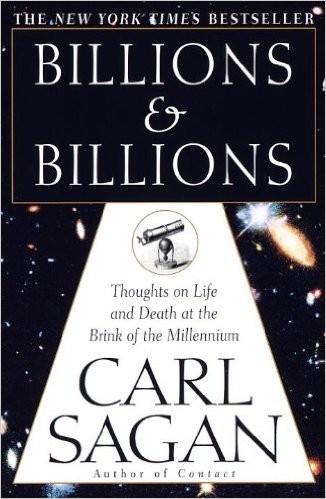
Billions & Billions: Thoughts on Life and Death at the Brink of the Millennium
by
Carl Sagan
Published 11 May 1998
That means that 99.9 percent of us owe our lives to agricultural technology and the science that underlies it—plant and animal genetics and behavior, chemical fertilizers, pesticides, preservatives, plows, combines and other agricultural implements, irrigation—and refrigeration in trucks, railway cars, stores, and homes. Many of the most striking advances in agricultural technology—including the "Green Revolution"—are products of the twentieth century. Through urban and rural sanitation, clean water, other public health measures, acceptance of the germ theory of disease, antibiotics and other pharmaceuticals, and genetics and molecular biology, medical science has enormously improved the well-being of people all over the world—but especially in the developed countries. Smallpox has been eradicated worldwide, the area of the Earth in which malaria flourishes shrinks year by The Twentieth Century • 247 year, and diseases I remember from my childhood, such as whooping cough, scarlet fever, and polio, are almost gone today.
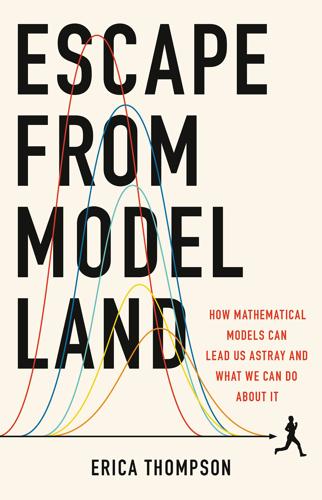
Escape From Model Land: How Mathematical Models Can Lead Us Astray and What We Can Do About It
by
Erica Thompson
Published 6 Dec 2022
Prequels: epidemic modelling before Covid-19 In March 1918, the first cases of the H1N1 influenza virus, known as ‘the Spanish flu’ even though there is no evidence it originated in Spain, were recorded in Kansas. A month later cases were reported in France, Germany and the UK, and over the next two years it spread with devastating impact through a global population that had little scientific knowledge or understanding of viruses. While the ‘germ theory’ of disease and the model of interpersonal spread through close contact allowed many people and societies to take constructive action against outbreaks by handwashing, wearing masks, etc, only rudimentary models existed. It is estimated that the 1918 flu may have killed as many people as the 1914–18 Great War itself, and possibly a great deal more – somewhere between 1% and 6% of the global population.
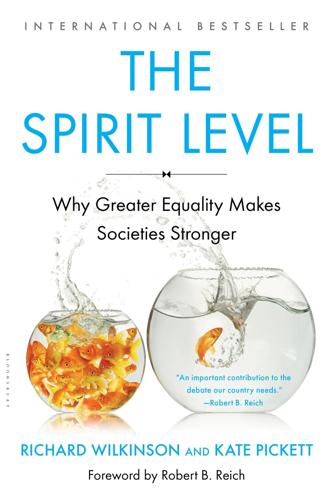
The Spirit Level: Why Greater Equality Makes Societies Stronger
by
Richard Wilkinson
and
Kate Pickett
Published 1 Jan 2009
But before his work could have much benefit he had to persuade people – principally his medical colleagues – to change their behaviour. His real battle was not his initial discovery but what followed from it. His views were ridiculed and he was driven eventually to insanity and suicide. Much of the medical profession did not take his work seriously until Louis Pasteur and Joseph Lister had developed the germ theory of disease, which explained why hygiene was important. We live in a pessimistic period. As well as being worried by the likely consequences of global warming, it is easy to feel that many societies are, despite their material success, increasingly burdened by their social failings. If correct, the theory and evidence set out in this book tells us how to make substantial improvements in the quality of life for the vast majority of the population.
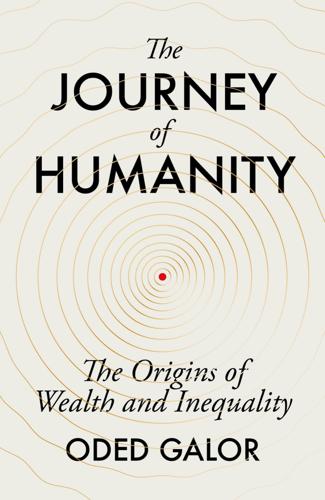
The Journey of Humanity: The Origins of Wealth and Inequality
by
Oded Galor
Published 22 Mar 2022
Health is self-evidently one of the most important factors in the quality of life, and there too the world experienced a massive leap forward. Long before the advent of modern medicine in the latter half of the twentieth century, the contribution of the French scientist Louis Pasteur to the recognition of the germ theory of disease and the subsequent installation of sewerage and water networks in major towns at the turn of the twentieth century led to a sharp decrease in deaths from infectious diseases. Moreover, the introduction and diffusion over the next few decades of vaccinations against diseases, including smallpox, diphtheria and whooping cough, generated a further drop in death rates.
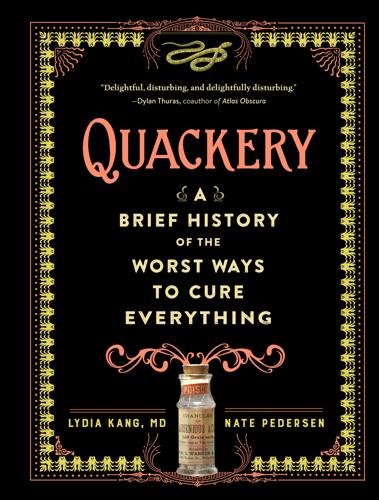
Quackery: A Brief History of the Worst Ways to Cure Everything
by
Lydia Kang
and
Nate Pedersen
Published 16 Oct 2017
The physician Ignaz Semmelweis, observing this, had the staff do something simple but miraculous: wash their hands with soap and a chlorine solution. Voilà—death rates plummeted. But tragically, no one listened. In the nineteenth century, Joseph Lister built upon microbiologist Louis Pasteur’s germ theory of disease and eventually revolutionized surgery by introducing the concept of antisepsis. Many poo-pooed the idea of bacteria. An Edinburgh professor snorted, “Where are these little beasts . . . has anyone seen them yet?” Another surgeon insisted that “there is good reason to believe that the theory of M.
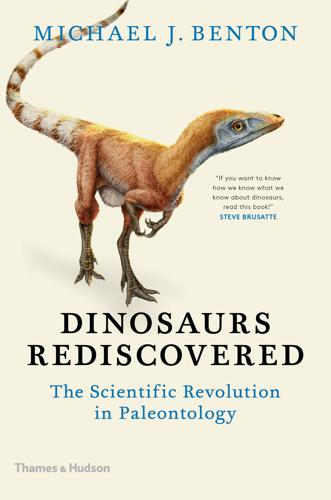
Dinosaurs Rediscovered
by
Michael J. Benton
Published 14 Sep 2019
So, climate-change deniers and creationists and, in their time, the smoking-as-killer deniers, play with the word ‘theory’. ‘Oh, it’s just a guess’, they say. Their alternative perspectives, however, do not stand up to the evidence. That dinosaurs existed is a theory. So is gravity, and so is the germ theory of disease, and we’re prepared to risk our lives by flying in an aeroplane or going under the surgeon’s knife based on those theories – because they are real theories that have been stress-tested. The transformation of dinosaur palaeobiology from speculation to science In this book, we have been on a journey from 1980 to the present day, and we have stopped off at some of the debates and controversies.
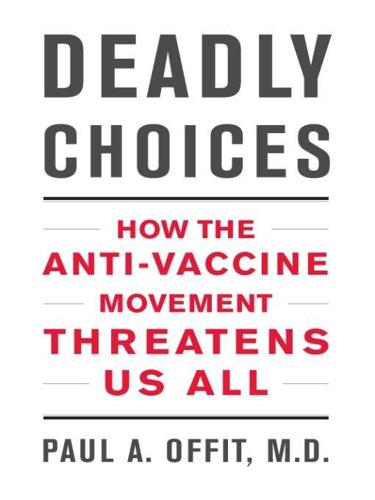
Deadly Choices: How the Anti-Vaccine Movement Threatens Us All
by
Paul A. Offit M.D.
Published 28 Dec 2010
Nevertheless, Palmer was convinced and a new method for treating disease—chiropractic—was born. Based on Palmer’s observation, chiropractors believe that diseases are caused by an imbalance of the flow of energy from the brain, which could be cured by manipulating the spine. At the time of Palmer’s observation, Robert Koch and others were well on their way to proving the germ theory of disease. Palmer didn’t believe it. Nor did his son Bartlett Joshua (B. J.), who became a dominant figure among his fellow chiropractors, all of whom had trained at Daniel Palmer’s school for chiropractors in Davenport. B. J. Palmer eschewed the germ theory, writing, “Chiropractors had found in every disease that is supposed to be contagious, a cause in the spine.

No Such Thing as a Free Gift: The Gates Foundation and the Price of Philanthropy
by
Linsey McGoey
Published 14 Apr 2015
In 1901, partly at the urging of his son, he established the Rockefeller Institute for Medical Research, housed on a vast stretch of disused farmland bordering what came to be called York Avenue, on Manhattan’s Upper East Side, bought for $700,000. The Institute soon emerged as a global centre for medical excellence.4 Rockefeller’s own three-year-old grandson had died from Scarlet fever just months earlier, compelling him to invest more heavily in biomedical research. Thanks to advances underway in Europe, the ‘germ theory’ of disease – the idea that infections were caused by tiny organisms invisible to the human eye but discoverable under the lens of a microscope – had begun to supplant miasma theories. Miasma theories, from the Greek for ‘pollution’, suggested that ‘bad air’ was often a cause of ill-health, and so contained, as scientists might later have punned, a small germ of truth.
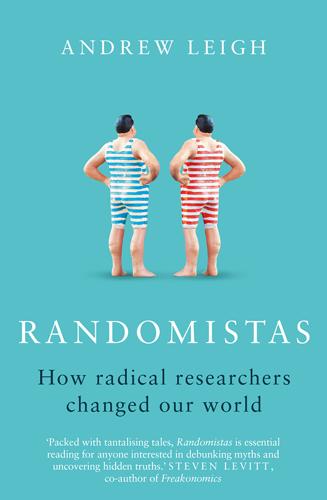
Randomistas: How Radical Researchers Changed Our World
by
Andrew Leigh
Published 14 Sep 2018
He insisted that doctors wash their hands with chlorine from then on, and the death rate plummeted. Only thanks to Semmelweis and an accidental randomised trial did it become safer to give birth attended by a Viennese doctor than on the streets. And yet, like Lind’s findings, Semmelweis’s insistence on hand-washing was rejected by many medical experts of the time.23 The germ theory of disease was yet to be developed. Many doctors were insulted by the suggestion that the hands of gentlemen like themselves were unclean, and by the implication that they were responsible for infecting their patients. After Semmelweis left the Vienna General Hospital, chlorine handwashing was discontinued.
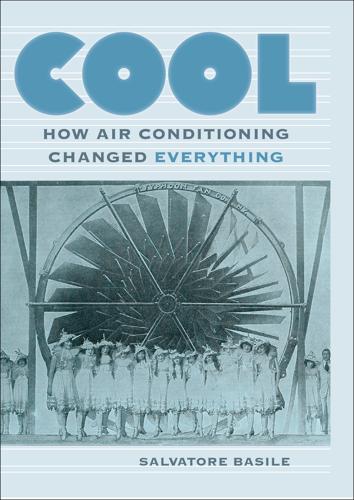
Cool: How Air Conditioning Changed Everything
by
Salvatore Basile
Published 1 Sep 2014
At the beginning of July 1881, Garfield was traveling to deliver an outof-town speech when he was shot in the back by a would-be assassin. The wound was serious but not immediately life-threatening; unfortunately, however, the President was then attended by a team of six distinguished (and ambitious, and apparently competitive) physicians. Their treatment—which, in the era before X-rays or the germ theory of disease, included two of the doctors probing the gunshot wound with unwashed fingers in a search for the bullet—guaranteed a slow and lingering demise. And making things even worse for the President was the fact that he had been brought to the White House, which was well known for trapping and holding summer heat.
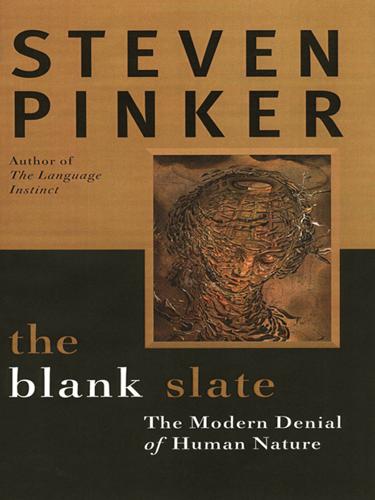
The Blank Slate: The Modern Denial of Human Nature
by
Steven Pinker
Published 1 Jan 2002
As the historian Robert Richards wrote of an alleged connection between Nazism and evolutionary biology, “If such vague similarities suffice here, we should all be hustled to the gallows.”30 Indeed, if we censored ideas that the Nazis abused, we would have to give up far more than the application of evolution and genetics to human behavior. We would have to censor the study of evolution and genetics, period. And we would have to suppress many other ideas that Hitler twisted into the foundations of Nazism: The germ theory of disease: The Nazis repeatedly cited Pasteur and Koch to argue that the Jews were like an infectious bacillus that had to be eradicated to control a contagious disease. Romanticism, environmentalism, and the love of nature: The Nazis amplified a Romantic strain in German culture that believed the Volk were a people of destiny with a mystical bond to nature and the land.
…
Foucault, Michel Fox-Genovese, Elizabeth Frank, Robert Franklin, Benjamin Frazer, James George Freedman, Jonathan Freeman, Derek free-rider problem free will French Revolution frequency-dependent selection Freud, Sigmund Friedan, Betty Friedman, Milton Furchtgott-Roth, Diana Gabriel, Peter Gage, Phineas Galbraith, John Kenneth Galileo Galilei Galton, Francis game theory Gardner, Howard Garfunkel, Art Gauguin, Paul Gazzaniga, Michael Geary, David Geertz, Clifford Gell-Mann, Murray Gelman, Susan gender, see sex differences gender feminism gender gap generative grammar genes: antisocial acts and autism and brain and crime and emergenic traits and intelligence and language and mental illness and Neel and personality and “selfish” violence and see also behavioral genetics genetically modified foods genetic variation genius genome, human in denials of human nature evolution and human complexity and number of genes in variability in germ theory of disease Gestalt Ghiglieri, Michael Ghost in the Machine determinism and genetics and neural plasticity and neuroscience and radical science defense of responsibility and right-wing support of Gibran, Kahlil Gigerenzer, Gerd Gilbert, William Gilligan, Carol Gilmore, Gary Gingrich, Newt Gintis, Herbert glass ceiling Glendon, Mary Ann Glover, Jonathan Godfather, The Godwin, William Goffman, Erving Goldberg, Tiffany F.
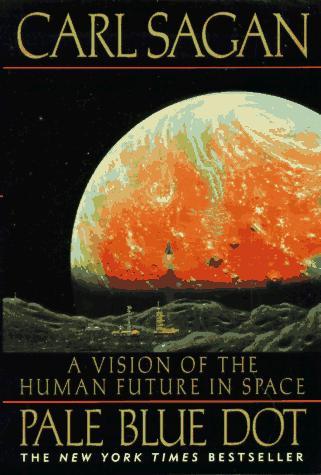
Pale Blue Dot: A Vision of the Human Future in Space
by
Carl Sagan
Published 8 Sep 1997
The universe is finished; the copestone is on, and the chips were carted off a million years ago. —HERMAN MELVILLE, MOBY DICK, CHAPTER 2 (1851) Camarina was a city in southern Sicily, founded by colonists from Syracuse in 598 B.C. A generation or two later, it was threatened by a pestilence—festering, some said, in the adjacent marsh. (While the germ theory of disease was certainly not widely accepted in the ancient world, there were hints-for example, Marcus Varro in the first century B. C. advised explicitly against building cities near swamps "because there are bred certain minute creatures which cannot be seen by the eyes, which float in the air and enter the body through the mouth and nose and there cause serious disease.")
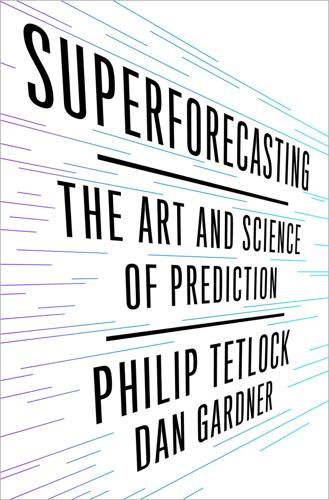
Superforecasting: The Art and Science of Prediction
by
Philip Tetlock
and
Dan Gardner
Published 14 Sep 2015
There is no perfection in our messy world. But it beats wise men stroking their chins. This seems stunningly obvious today. Randomized controlled trials are now routine. Yet it was revolutionary because medicine had never before been scientific. True, it had occasionally reaped the fruits of science like the germ theory of disease and the X-ray. And it dressed up as a science. There were educated men with impressive titles who conducted case studies and reported results in Latin-laden lectures at august universities. But it wasn’t scientific. It was cargo cult science, a term of mockery coined much later by the physicist Richard Feynman to describe what happened after American airbases from World War II were removed from remote South Pacific islands, ending the islanders’ only contact with the outside world.

The Hidden Family
by
Charles Stross
Published 2 May 2005
“Look, I’m trying to figure out what isn’t there. Like, they’ve had a couple of world wars—but fought with wooden sailing ships and airships. There’s a passage at the end of the book about the ‘miracle of corpuscular transsubstantiation’—I think they mean atomic power but I’m not sure. They’ve got the germ theory of disease and steam cars, but I didn’t see any evidence of heavier-than-air flight or antibiotics or gasoline engines. The whole industrial revolution has been delayed—they’re up to about the 1930s in electronics. And the social thing is weird. I saw an opium pipe in that pawnbroker’s, and I passed a bar selling alcohol, but they’re all wearing hats and keeping their legs covered.

Utopias: A Brief History From Ancient Writings to Virtual Communities
by
Howard P. Segal
Published 20 May 2012
Pasteur’s research “was motivated by the very practical objectives of improving industrial processes and public health. It led directly to applications that saved the French silk and wine industries, improved the preservation of wine and beer, and created effective vaccines.”46 But these applications were based on Pasteur’s breakthroughs in developing the germ theory of disease and in establishing the field of bacteriology. Hence, Stokes’ endorsement of this model of research for contemporary American scientists, engineers, and, not least, social scientists. Most importantly, Science in the National Interest ignored the point made by Billington, Vincenti, and other historians of technology that engineering has significant intellectual properties of its own separate from those of science, and that the making of things by engineers requires an intellectual discipline as taxing as the making of discoveries by scientists.

The Knowledge Machine: How Irrationality Created Modern Science
by
Michael Strevens
Published 12 Oct 2020
Louis Pasteur is perhaps the most renowned of all French scientists—and surely the most revered by the French themselves. In his lifetime, from 1822 to 1895, he pioneered vaccination against anthrax and rabies, helped to discover the nature of fermentation, developed a sterilization technique (“pasteurization”) to prevent milk and wine from spoiling, laid the foundations for the germ theory of disease, and uncovered the first evidence for the remarkable fact that the chemistry of life is overwhelmingly composed of “right-handed” molecules. A few years ago, while visiting the École normale supérieure in Paris, I was given the privilege of using Pasteur’s old office for a few weeks. (Pasteur served as the scientific director of the ENS from 1858 to 1867; at one point he banned smoking at the school, whereupon almost every student resigned.)
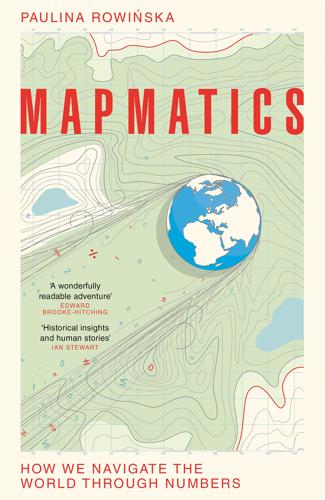
Mapmatics: How We Navigate the World Through Numbers
by
Paulina Rowinska
Published 5 Jun 2024
In 1912, a German meteorologist and geophysicist by the name of Alfred Wegener had already proposed the theory of continental drift, but nobody had taken him seriously until decades later when Tharp’s novel representations of ocean depth data revealed the rifts at the bottom of our oceans. The work of Lamont’s scientists not only proved Wegener’s theory but also helped explain that continents drift due to moving tectonic plates. Today, it’s amazing to think that continental drift and plate tectonics – theories we consider as obvious as evolution, gravitation or the germ theory of disease – entered textbooks only in the 1970s or even the 1980s in some countries. This makes my parents the first generation to study the dynamics of the Earth’s upper layer at school, and who knows if they’d have learned about it if Marie Tharp hadn’t created her revolutionary map. Mapping the ocean floor is so difficult that at the time of writing, we’re not even close to completing the process.
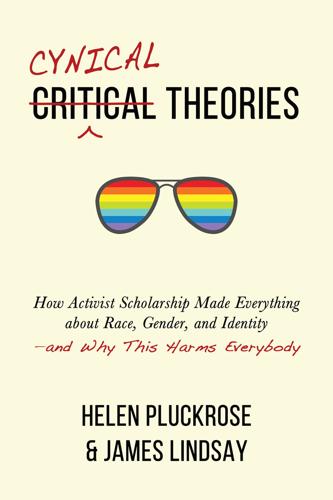
Cynical Theories: How Activist Scholarship Made Everything About Race, Gender, and Identity―and Why This Harms Everybody
by
Helen Pluckrose
and
James A. Lindsay
Published 14 Jul 2020
The result is that the belief that society is structured of specific but largely invisible identity-based systems of power and privilege that construct knowledge via ways of talking about things is now considered by social justice scholars and activists to be an objectively true statement about the organizing principle of society. Does this sound like a metanarrative? That’s because it is. Social Justice scholarship and its educators and activists see these principles and conclusions as The Truth According to Social Justice—and they treat it as though they have discovered the analogue of the germ theory of disease, but for bigotry and oppression. The reification of the two postmodern principles means that the original postmodern radical skepticism that any knowledge can be reliable has been gradually transformed into a complete conviction that knowledge is constructed in the service of power, which is rooted in identity, and that this can be uncovered through close readings of how we use language.
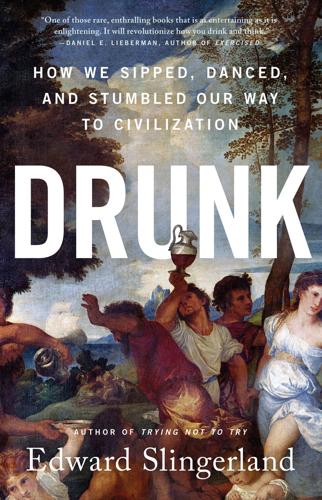
Drunk: How We Sipped, Danced, and Stumbled Our Way to Civilization
by
Edward Slingerland
Published 31 May 2021
From what we know, however, soothing breakfast porridges have historically served in Ireland as comfort the morning after, rather than a substitute for the substances that caused the discomfort in the first place. Or consider the dirty water hypothesis. If you are suffering from bacteria-laden water, just boil it. Of course, the germ theory of disease is quite recent, and there are still people around the world who haven’t gotten the news. But as human solutions to most adaptive problems have shown, we don’t need to know anything about the actual causality involved to solve a problem through trial and error. Individuals do this all the time.
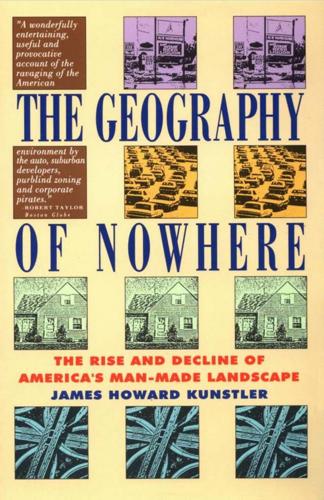
The Geography of Nowhere: The Rise and Decline of America's Man-Made Landscape
by
James Howard Kunstler
Published 31 May 1993
Because the nature of his business brought him into association with doctors, Haskell was keenly aware of the health hazards of city living, so he settled along the Passaic River in New Jersey and commuted to town by coach and ferry boat. But he began to suffer baffling health problems while still in his thirties and became suspicious that the salt marshes near his home were to blame. Pasteur had not yet publicized his germ theory of disease; it was still thought to be caused by "bad air. " In 1853, the architect Alexander J. Davis suggested Haskell have a look a few miles west at the heights of Orange, New Jersey, noted for its wild scenery, superior views, and crystalline air. This was the same Alexander J. Davis who had assisted Andrew Jackson Downing with the design of houses for 4 6 _ EDE N U P D A T ED Cottage Residences in 1842.
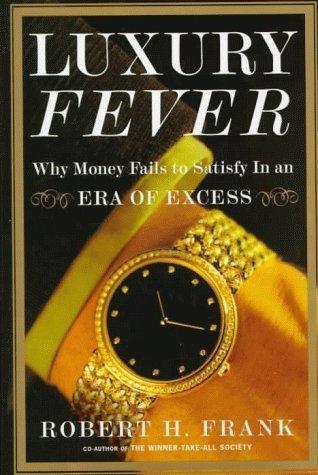
Luxury Fever: Why Money Fails to Satisfy in an Era of Excess
by
Robert H. Frank
Published 15 Jan 1999
The explosive proliferation of sport-utility vehicles in American parking lots is simply unintelligible if we adopt the orthodox view that each person’s consumption choices have no impact on the choices made by others. Economists who insist otherwise will someday be categorized with physicians who failed to acknowledge the germ theory of disease. In a world in which context is often decisive, the $1,000 bottles of wine drunk by the rich make the $100 bottles drunk by the near rich seem no longer quite good enough, and so on down the income ladder. Although the channels through which one person’s spending influences another’s are often psychological, far more tangible costs and benefits are at stake as well, as when the 6,000-pound Range Rovers of the rich lead many of the rest of us to seek shelter in sport-utility vehicles of our own.
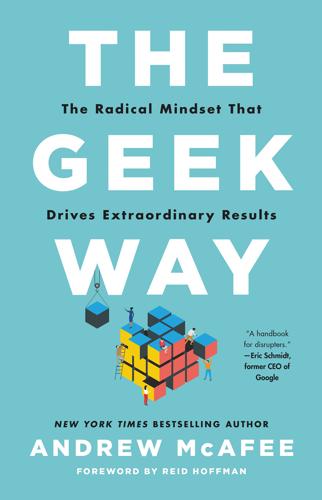
The Geek Way: The Radical Mindset That Drives Extraordinary Results
by
Andrew McAfee
Published 14 Nov 2023
But as soon as biologists and doctors saw Pasteur’s proof they became ready, willing, and able to change not only what they believed, but also how they behaved. Over the last quarter of the nineteenth century medical practitioners in Europe turned away from the idea of miasmas, took up the germ theory of disease, and worked hard to avoid accidentally exposing patients to these microorganisms. As the germ theory and its practical implications spread around the world, the spread of disease slowed. (Can you imagine what would happen today to an obstetrician who refused to wash their hands before assisting in a delivery?)

Geek Heresy: Rescuing Social Change From the Cult of Technology
by
Kentaro Toyama
Published 25 May 2015
Diarrhea is deadly for many children in India, but it can often be prevented by hand washing. So HLL sold Lifebuoy soap in small sachets that were affordably priced for “bottom of the pyramid” consumers. It’s one thing to sell soap, though, and it’s another to instill hand-washing habits in people who’ve never learned the germ theory of disease. HLL tried two approaches. It ran a marketing campaign designed by the Madison Avenue giant Ogilvy & Mather, and it established a public-private partnership with the Indian government. Together, HLL and the state ran a multimillion-dollar, multi-platform campaign to convince people to wash their hands.

Giving the Devil His Due: Reflections of a Scientific Humanist
by
Michael Shermer
Published 8 Apr 2020
After a while, your honor, it is the setting of man against man and creed against creed until with flying banners and beating drums we are marching backward to the glorious ages of the sixteenth century when bigots lighted fagots to burn the men who dared to bring any intelligence and enlightenment and culture to the human mind.25 In America, the First Amendment protects the right of citizens to express their opinions on anything they like, no matter how unconventional, crazy, conniving, or evil. You are free to doubt not just evolution, for example, but the Big Bang theory, vaccines, the germ theory of disease, and global warming. You can believe that JFK was assassinated by the KGB, Castro, the Mafia, Lyndon Johnson, and the Military Industrial Complex. You can contend that Princess Diana faked her death, along with Hitler and Elvis. You can even challenge the existence of God, Jesus, and the universe itself.

Why Things Bite Back: Technology and the Revenge of Unintended Consequences
by
Edward Tenner
Published 1 Sep 1997
His surgeon performed a repeat operation in 1991 with arthroscopy, in which a light source, a miniature camera, and a video recorder permit the whole procedure to be completed through three small holes. Maddox spent a single day in the hospital, then took a taxi to work. I5 Localizing Pharmacy Like diagnostic instruments, drugs targeted for particular ailments are a late-nineteenth-century innovation following the germ theory of disease. In the early nineteenth century, doctors classified drugs by their effect on the whole body. Terms like "cathartic," "diuretic," and "narcotic" survive from this vocabulary. Dosage depended not only on the drug's usual effects but on the patient's constitution and even the local climate.
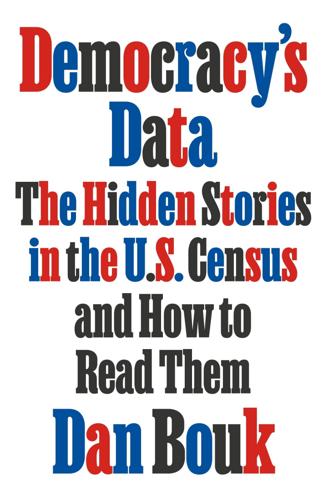
Democracy's Data: The Hidden Stories in the U.S. Census and How to Read Them
by
Dan Bouk
Published 22 Aug 2022
But Metropolitan did not merely insure a fifth of the country’s entire population against an untimely death, offering a form of savings and security to people who seldom had access to a bank. It also offered free visits to doctors and nurses, introduced and made normal (even obligatory) the yearly physical exam, campaigned for improved sanitary conditions, and distributed millions of pamphlets filled with health advice or explaining important medical concepts like the germ theory of disease. Dublin’s corporate ascent began with the job of justifying the expense of all that “socialistic” activity. It had been his job to prove that health care was a good investment.15 Dublin began building an economic case for health interventions, and yet that case was soon deemed superfluous by his superiors.
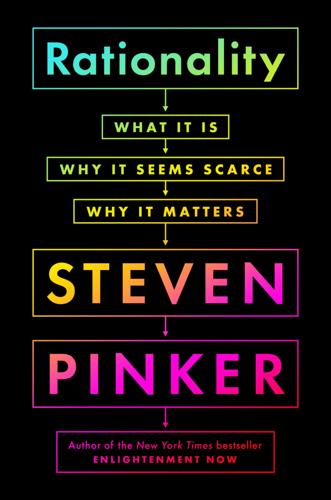
Rationality: What It Is, Why It Seems Scarce, Why It Matters
by
Steven Pinker
Published 14 Oct 2021
Beginning in the second half of the nineteenth century, life expectancy at birth rose from its historic resting place at around 30 years and is now 72.4 years worldwide, 83 years in the most fortunate countries.10 This gift of life was not dropped onto our doorsteps. It was the hard-won dividend of advances in public health (motto: “Saving lives, millions at a time”), particularly after the germ theory of disease displaced other causal theories like miasmas, spirits, conspiracies, and divine retribution. The lifesavers included chlorination and other means of safeguarding drinking water, the lowly toilet and sewer, the control of disease vectors like mosquitoes and fleas, programs for large-scale vaccination, the promotion of hand-washing, and basic prenatal and perinatal care such as nursing and body contact.
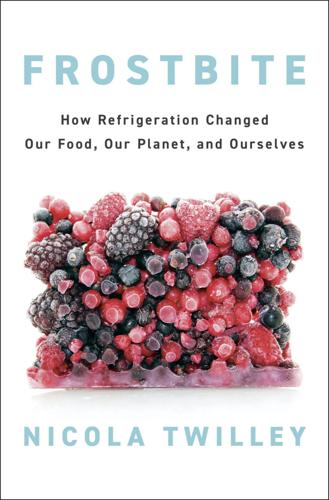
Frostbite: How Refrigeration Changed Our Food, Our Planet, and Ourselves
by
Nicola Twilley
Published 24 Jun 2024
It wasn’t until the 1930s that mechanical refrigeration conclusively triumphed over the natural-ice trade. In surprisingly large part, its eventual success was due to pollution. As American cities and factories grew, in an era that predated environmental regulation, more and more untreated waste was dumped into nearby lakes and rivers. And as the germ theory of disease became accepted medical wisdom and people realized that bacteria did not die in frozen water, drinks cooled with chunks of natural ice began to be associated with health scares, from typhoid to diarrhea. Once the natural-ice trade lost to its synthetic rival, it vanished almost without a trace, replaced by the artificial cryosphere of cold-storage warehouses and domestic refrigerators for which it had laid the foundation.

More Everything Forever: AI Overlords, Space Empires, and Silicon Valley's Crusade to Control the Fate of Humanity
by
Adam Becker
Published 14 Jun 2025
This kind of cherry-picking makes it easy to create the appearance of an exponential trend. The list of scientific and technological advances is also cherry-picked: among the many missing milestones are the invention of gunpowder in China in the ninth century, the development of Newtonian physics in the seventeenth century, the germ theory of disease, the periodic table of the elements, the railroad, and the telegraph. None of these fit the exponential pattern, and all of them were easy to find, because there are many time periods that have no representation whatsoever on Kurzweil’s list.i These omissions are unlikely to be deliberate, any more than the near total exclusion of technological or cultural developments outside of Eurasia.
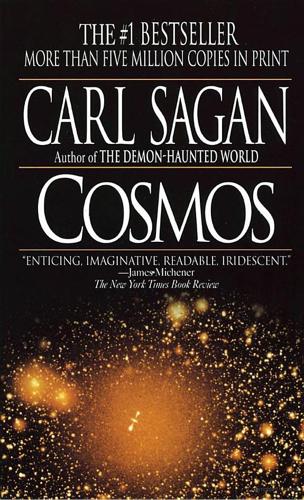
Cosmos
by
Carl Sagan
Published 1 Jan 1980
Thus he established an alternative to spontaneous generation—the notion that life could rise, in fermenting grape juice or rotting meat, entirely independent of preexisting life. It was not until the time of Louis Pasteur, two centuries later, that Huygens’ speculation was proved correct. The Viking search for life on Mars can be traced in more ways than one back to Leeuwenhoek and Huygens. They are also the grandfathers of the germ theory of disease, and therefore of much of modern medicine. But they had no practical motives in mind. They were merely tinkering in a technological society. The microscope and telescope, both developed in early seventeenth-century Holland, represent an extension of human vision to the realms of the very small and the very large.
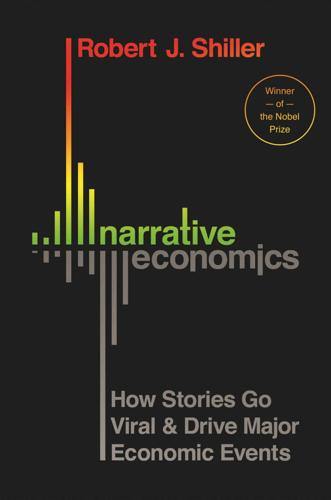
Narrative Economics: How Stories Go Viral and Drive Major Economic Events
by
Robert J. Shiller
Published 14 Oct 2019
The polymath David Hume (1711–76) wrote in 1742: When any causes beget a particular inclination or passion, at a certain time and among a certain people, though many individuals may escape the contagion, and be ruled by passions peculiar to themselves; yet the multitude will certainly be seized by the common affection, and be governed by it in all their actions.9 Hume wrote before the germ theory of disease was established, before bacteria and viruses were identified, but many of his contemporaries understood that both disease and ideas were spread by interpersonal contact. In 1765, during the economic depression in the American colonies of the United Kingdom following the French and Indian War (Seven Years’ War),10 a letter to the printer in the New-London Gazette (Connecticut) by Alexander Windmill (apparently a pseudonym) identified an epidemic of a narrative that involved the sentence “THERE IS NO MONEY”: I take it for granted, there is not one of your readers but has heard that most melancholy sentence, repeated times without number, THERE IS NO MONEY: nor scarce one who has not himself frequently joined in this epidemic complaint.

The Pursuit of Power: Europe, 1815-1914
by
Richard J. Evans
Published 31 Aug 2016
Surveying the slum quarters by the harbour where the impact of the disease was greatest, and remembering the squalid dwellings he had seen in Egypt and India, Koch turned to his team and said: ‘Gentlemen, I forget that I am in Europe.’ At the height of Europe’s age of imperialism, it was hard to think of a more damning verdict. In addition to Koch, the French chemist Louis Pasteur (1822–95) had made significant discoveries based on the germ theory of disease, developing vaccines for anthrax and rabies, and inventing the technique of ‘pasteurization’ to heat milk and kill any germs it might be carrying. But direct medical intervention did little to prevent and still less to cure infectious diseases in the nineteenth century. The sanitary revolution that took place in Europe’s cities in the second half of the century, with the provision of clean water and proper sewage disposal, certainly helped stop the spread of cholera, just as it reduced the incidence of typhus and typhoid and similar diseases.
…
He was eventually confined to a mental hospital, where an attempt to escape led to a beating by the guards, confinement in a straitjacket, and death two weeks after his incarceration from his wounds, which had become infected. It was not until much later that aseptic methods of surgery and antiseptic precautions taken before operations became widely accepted. The germ theory of disease provided at last a scientific foundation for its practice. Joseph Lister (1827–1912), who had studied Pasteur’s work, came to believe that germs could be prevented from infecting the wounds that so often caused surgical patients to die in agony after an operation. He applied a dressing of lint soaked in linseed oil and carbolic acid to an eleven-year-old patient with a compound fracture of the leg caused when he fell under a cart.
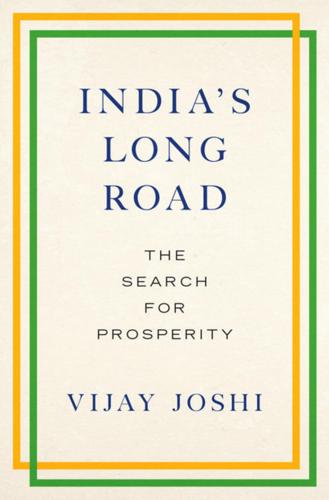
India's Long Road
by
Vijay Joshi
Published 21 Feb 2017
As Angus Deaton has noted, ‘The major credit for the decrease in child mortality and the resultant increase in life expectancy must go to the control of disease through public health measures. At first, this took the form of improvements in sanitation and water supplies. Eventually, science caught up with practice and the germ theory of disease was understood and gradually implemented … through … scientifically based measures. These included routine vaccination against a range of diseases and the adoption of good practices of personal and public health based on the germ theory. The improvement of public health required action by public authorities … (and) could not have been accomplished by the market alone …’.33 In India, TPH has been systematically neglected and takes up less than 10 per cent of government health expenditure.

More: The 10,000-Year Rise of the World Economy
by
Philip Coggan
Published 6 Feb 2020
Bismarck introduced health insurance, accident insurance and pensions to Germany in the 1880s; France brought in health insurance and childcare help in the 1890s and 1900s; and Britain offered pensions and unemployment insurance in the first decade of the 20th century. In the second half of the 19th century, life expectancy also started to make significant gains. One reason was that scientists developed the germ theory of disease, and realised the terrible effects of insanitary conditions. It took time for these theories to be accepted. In 1847, Ignaz Semmelweis, a Hungarian obstetrician, correctly identified that puerperal fever was spread by doctors, and insisted that his colleagues wash their hands. But although the death rate of new mothers fell dramatically, his theory was not widely acknowledged.
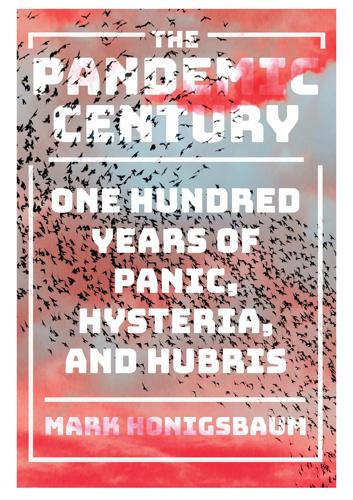
The Pandemic Century: One Hundred Years of Panic, Hysteria, and Hubris
by
Mark Honigsbaum
Published 8 Apr 2019
THIS IS A BOOK ABOUT the way that advances in the scientific knowledge of viruses and other infectious pathogens can blind medical researchers to these ecological and immunological insights and the epidemic lurking just around the corner. Ever since the German bacteriologist Robert Koch and his French counterpart, Louis Pasteur, inaugurated the “germ theory” of disease in the 1880s by showing that tuberculosis was a bacterial infection and manufacturing vaccines against anthrax, cholera, and rabies, scientists—and the public health officials who depend on their technologies—have dreamed of defeating the microbes of infectious disease. However, while medical microbiology and the allied sciences of epidemiology, parasitology, zoology, and, more recently, molecular biology, provide new ways of understanding the transmission and spread of novel pathogens and making them visible to clinicians, all too often these sciences and technologies have been found wanting.

Model Thinker: What You Need to Know to Make Data Work for You
by
Scott E. Page
Published 27 Nov 2018
One reason that we see so much complexity may well be that much of our world consists of adaptive and purposive actors maneuvering on dancing landscapes. To make sense of that complexity, we need many models. Do We Patent Knowledge? Our well-being rests atop a centuries-long accumulation of knowledge that includes the laws of physics, the combustion engine, double-entry accounting, the germ theory of disease, X-rays, and HTML. Knowledge is often a public good. Knowledge is always non-rival. It may or may not be excludable. Exclusion requires verification, which is easier when a physical artifact embeds the knowledge. Verifying that someone used an algorithm or technique for solving a problem may be impossible.

Radical Uncertainty: Decision-Making for an Unknowable Future
by
Mervyn King
and
John Kay
Published 5 Mar 2020
Fauchard’s assembly and extension of practical knowledge in dentistry began the shift in dental practice from the extraction of teeth to their repair. Most subsequent fundamental innovations in dentistry have resulted from the application to dentistry of advances in general science, such as the discovery of anaesthesia and the germ theory of disease. The modern dental implant is the product of research by a Swedish anatomist, Per-Ingvar Brånemark, who discovered the properties of titanium in bonding to bone. 9 A good dentist is someone who can improve the health of the patient while avoiding unnecessary pain, not someone who produces a new theory or model of dentistry.
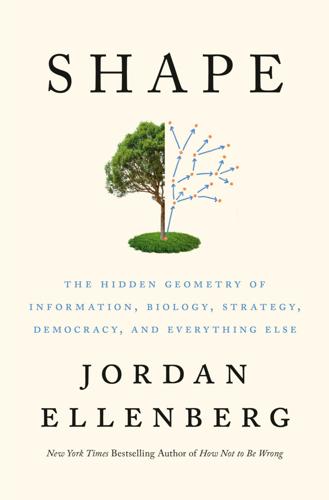
Shape: The Hidden Geometry of Information, Biology, Strategy, Democracy, and Everything Else
by
Jordan Ellenberg
Published 14 May 2021
There were only 28,000 new cases of rinderpest in March, and it continued dropping from there, though not as quickly as Farr had projected; his curve, which I graph on the following page, has the disease just about gone by the end of June, when in fact that took the rest of the year. You can see here the danger of extrapolation. Farr’s calculation did well on the near-term question (is this thing going to turn around soon?), worse on the long-term (when’s this going to be over?). Why did rinderpest die down? Farr, still not fully sold on the germ theory of disease, said it was because whatever poisonous substance was passing from cow to cow gave up some of its noxiousness with each animal it passed through. That is not, we now know, how viruses work. When the British Medical Journal scoffed at Farr’s letter, they weren’t disputing his conclusion about the outcome, but his reasoning.
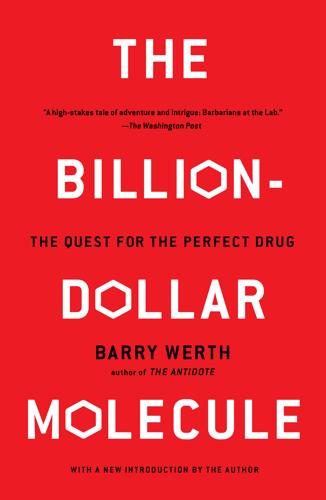
The Billion-Dollar Molecule
by
Barry Werth
Ehrlich, Pauling—both had been chemists before the lure of biology drew them to cross the double-yellow separating academic fields. Pasteur himself was a chemist and avid crystal grower when, as a consultant to the French wine industry in Strasbourg in the 1850s, his studies in fermentation led him to discover microbes: He later posed—and proved—the germ theory of disease, ushering medicine into the modern age. “Fortune,” he said famously, “favors the prepared mind.” Boger, several years older than Schreiber and recently chartered by Merck to head his own drug design group, was making a similar transition. His renin work had catapulted him upward within Merck and attracted the attention of other chemists.
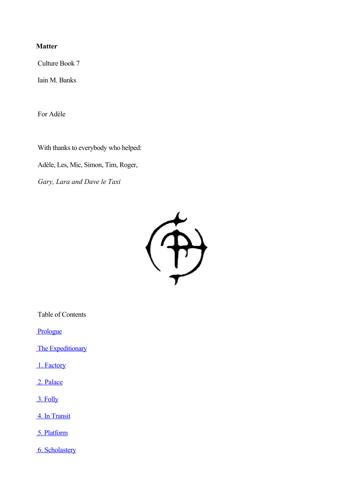
Matter
by
Iain M. Banks
Published 14 Jan 2011
“Oh, we are often profoundly affected by unseeably small things, prince.” Hyrlis smiled wistfully. “I have advised rulers for whom the greatest military service I could perform had nothing to do with strategy, tactics or weapons technology; it was simply to inform them of and persuade them to accept the germ theory of disease and infection. Believing that we are surrounded by microscopic entities that profoundly and directly affect the fates of individuals and through them nations has been the first step in the ascendancy of many a great ruler. I’ve lost count of the wars I’ve seen won more by medics and engineers than mere soldiery.
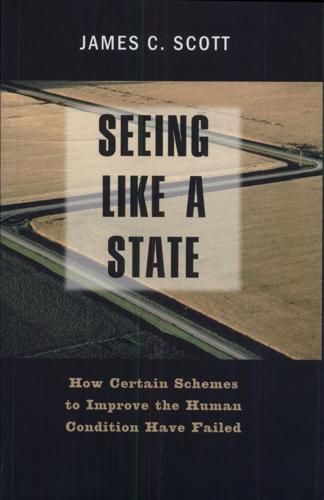
Seeing Like a State: How Certain Schemes to Improve the Human Condition Have Failed
by
James C. Scott
Published 8 Feb 1999
A newspaper, even more than "agitation" before heckling or sullen crowds, creates a decidedly one-sided relationship.20 The organ is a splendid way to diffuse instructions, explain the party line, and rally the troops. Like its successor, the radio, the newspaper is a medium better suited to sending messages than to receiving them. On many occasions, Lenin and his colleagues took the threat of contamination more literally and spoke in metaphors drawn from the science of hygiene and the germ theory of disease. Thus it became possible to talk of "petit-bourgeois bacilli" and "infection."" The shift in imagery was not far-fetched, for Lenin did want to keep the party in an environment that was as sterile and germ-free as possible lest the party contract one of the many diseases lurking outside.22 Lenin's general treatment of the working class in What Is to Be Done?
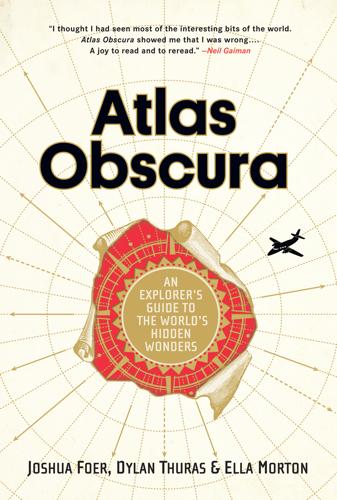
Atlas Obscura: An Explorer's Guide to the World's Hidden Wonders
by
Joshua Foer
,
Dylan Thuras
and
Ella Morton
Published 19 Sep 2016
His autopsy showed a similar pathology to the women with puerperal sepsis, leading Semmelweis to conclude that it was the doctors themselves who were causing the deaths of the mothers. Semmelweis implemented a strict hand-washing policy in his clinic, and the death rate quickly fell from 18 percent to 2.2 percent. But even Semmelweis himself couldn’t explain exactly why his method worked. It would be decades before Louis Pasteur confirmed the germ theory of disease. Without this underlying explanation, Semmelweis’s discovery was largely rejected as a “mania.” Later in life, in part due to the lack of success he had in spreading his theories, Semmelweis fell into a deep depression, writing bitter letters to prominent European obstetricians in which he accused them of being ignorant murderers.
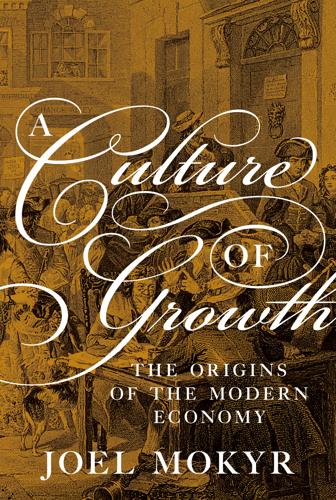
A Culture of Growth: The Origins of the Modern Economy
by
Joel Mokyr
Published 8 Jan 2016
This coevolution created a self-reinforcing virtuous cycle that created the rapidly growing gap between West and East in technology in a relatively short time in the late eighteenth and early nineteenth centuries.46 We will never know whether without the rise of the West, the Orient would have been able to replicate something similar, given enough time. It seems unlikely, but there is no way of knowing if they would have stumbled upon steam power or the germ theory of disease. It is true that the consensus of modern scholarship has remained of the opinion that by 1800 the bulk of output in Chinese industry employed a technology very little different from that under the Song (Richardson, 1999, pp. 54–55). At the level of the economy as a whole, this is an overstatement: Chinese agriculture adopted new crops such as peanuts and sweet potatoes, some of which were introduced by the intercontinental ecological arbitrage practiced by European explorers in the sixteenth century.
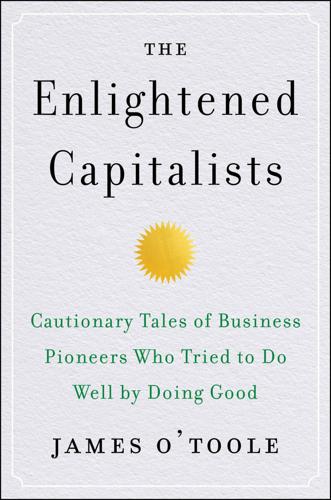
The Enlightened Capitalists
by
James O'Toole
Published 29 Dec 2018
Their brother, Robert Wood (Johnson three), joined the firm shortly after its founding, infusing it with both a dose of needed capital and medical knowledge—the latter informed by the latest thinking in the then-fast-developing field of medical science. Johnson was one of the first American disciples of Joseph Lister, the British surgeon who, in developing the art of antiseptic surgery, successfully applied Louis Pasteur’s germ theory of disease to operating room practices. Johnson had become an advocate of antiseptics after attending a lecture given by Lister in 1876, at which the great scientist described the need for sterile surgical dressings to combat infection.1 One of the first products J&J introduced under Robert Wood’s leadership was sterile medicinal plasters (forerunner of Band-Aids), followed in subsequent years by ligatures, maternity and obstetric products, and the still-marketed Johnson’s Baby Powder.

The Transhumanist Reader
by
Max More
and
Natasha Vita-More
Published 4 Mar 2013
Biological immortality certainly won’t be achieved easily or abruptly, which is one reason why we have relatively little to fear with respect to its effects on society. The effective defeat of contagious disease in the latter part of the twentieth century came a century after Pasteur properly established the germ theory of disease. The evolutionary theory of aging is now adequately established, both mathematically and experimentally. A long struggle against the recalcitrant medical establishment and the entrenched cytogerontologists lies before us. They have the money, power, and prestige. All the evolutionists have is scientific truth.
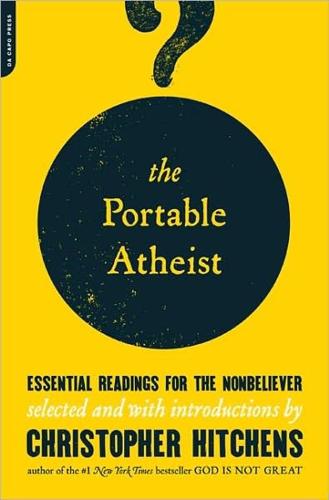
The Portable Atheist: Essential Readings for the Nonbeliever
by
Christopher Hitchens
Published 14 Jun 2007
Among the many disasters that could befall a person over the course of a short and difficult life, medieval Christians seemed especially concerned that a neighbor might cast a spell and thereby undermine their health or good fortune. Only the advent of science could successfully undercut such an idea, along with the fantastical displays of cruelty to which it gave rise. We must remember that it was not until the mid-nineteenth century that the germ theory of disease emerged, laying to rest much superstition about the causes of illness. Occult beliefs of this sort are clearly an inheritance from our primitive, magic-minded ancestors. The Fore people of New Guinea, for instance, besides being enthusiastic cannibals, exacted a gruesome revenge upon suspected sorcerers: Besides attending public meetings.
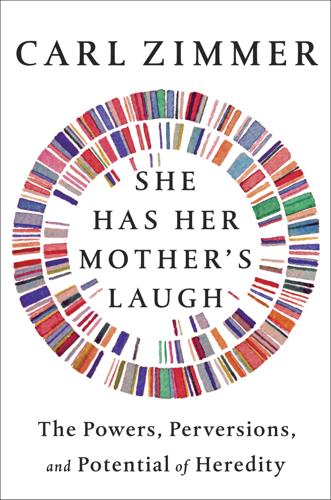
She Has Her Mother's Laugh
by
Carl Zimmer
Published 29 May 2018
As a result, the per capita consumption of meat in the United States dropped by a third in the middle and lower classes. Americans got 2 to 4 percent fewer calories, and they consumed 8 to 10 percent less protein. Making matters even worse, the Industrial Revolution took place decades before the discovery of the germ theory of disease. On the crowded streets of American and European cities, outbreaks flared up and doctors had little idea how to stop them. By the end of the nineteenth century, things had gotten much better, and people’s height reflected the improvement. Clean water and sewer systems helped children stay healthy.
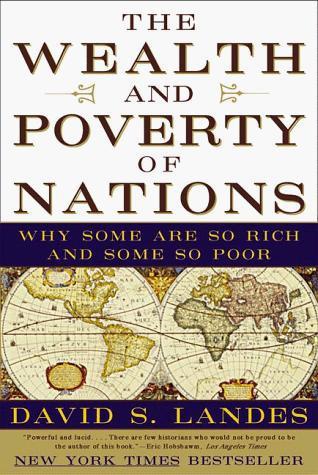
The Wealth and Poverty of Nations: Why Some Are So Rich and Some So Poor
by
David S. Landes
Published 14 Sep 1999
Its role goes back almost to the beginning of the European presence: Europeans, physically unprepared for the special rigors and dangers of warm climes, brought doctors with them. In those early days, of course, ignorant if well-intentioned physicians did more harm than good; but they did put people out of their misery. Not until the second half of the nineteenth century did the germ theory of disease lay the basis for directed research and effective prevention and treatment. Before that, one relied on guesswork empiricism and imagination. These techniques, fortunately, were not haphazard. The stress on observation and the reality principle—you can believe what you see, so long as you see what I see—paid off beyond understanding.

Bourgeois Dignity: Why Economics Can't Explain the Modern World
by
Deirdre N. McCloskey
Published 15 Nov 2011
As I have argued against my allies Mokyr and Jacob, though, ideas from high science were not casual until late in the story. None of the early medical advances that Johansson speaks of had anything to do with theoretical breakthroughs. They were empirical, yes, but not deductions from biological laws, such as the germ theory of disease (itself among the earliest practical fruits of high science, yet accepted only late in the nineteenth century.) That a material base can have an influence, in other words, does not at all require that we reduce mind to matter, or indulge our tough-guy affection for realism in international relations and declare that economic growth comes out of the barrel of a gun.
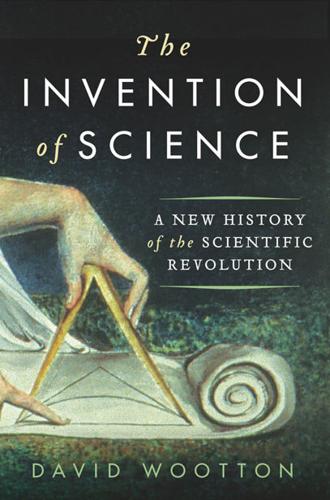
The Invention of Science: A New History of the Scientific Revolution
by
David Wootton
Published 7 Dec 2015
When Hobbes says that geometricians have their authority to teach from the king, he means the king licenses people to teach geometry, and only people with a licence can teach; he does not mean that royal decree establishes what counts as a good argument in geometry. Of course the king might make a bad decision; in modern terms, he might give practitioners of homeopathy the same legal status as practitioners of the germ theory of disease, or, in seventeenth-century terms, Catholic clergy the same legal status as Protestant clergy. But his bad decision would not make bad logic or bad geometry or bad medicine, or indeed bad theology, into good logic, geometry, medicine or theology; it would simply have the effect of giving the wrong people the right to practise.
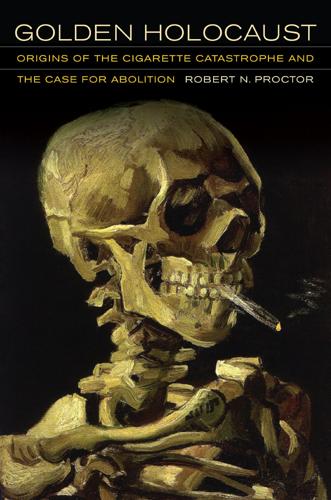
Golden Holocaust: Origins of the Cigarette Catastrophe and the Case for Abolition
by
Robert N. Proctor
Published 28 Feb 2012
Oscar Wilde in 1882 described the nation as “one long expectoration”; other visitors were astonished to find Americans spitting inside theaters, streetcars, and seemingly every other public place. Spittoons were introduced to prevent the spread of germs, and some states barred spitting anywhere but into a spittoon. In courtrooms a lawyer might have his own brass pot, as would the judge and jury. Spittoons bit the dust with the broader triumph of the germ theory of disease and fears of spreading microbes, though not without some protest. The governor of Pennsylvania in 1905 characterized spitting as “a gentleman’s constitutional right” and its banishment “an infringement of liberty.”8 Ashtrays will eventually suffer the same fate; they are already an anachronism in richer parts of the world.)

Empire of Things: How We Became a World of Consumers, From the Fifteenth Century to the Twenty-First
by
Frank Trentmann
Published 1 Dec 2015
Yet it was not only the poor who were unclean. Three decades after cholera was identified as a waterborne disease in 1854, London’s Dr John Simon was emphatic in his sanitary handbook that many among the better-off classes, too, had yet to reach a ‘high standard of sensibility to dirt’.10 Epidemiology, the germ theory of disease and sanitary reforms had social democratic implications. Infectious disease could jump classes. No one was safe unless everyone was cleaner. This concerned public authorities, water companies, builders and landlords, but also private conduct. Regular washing meant self-respect and respect for others.
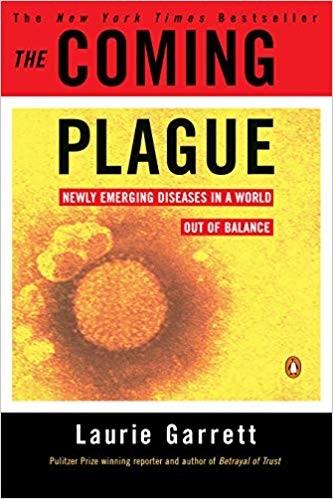
The Coming Plague: Newly Emerging Diseases in a World Out of Balance
by
Laurie Garrett
Published 31 Oct 1994
The Antibiotic Paradox (New York: Plenum Press, 1992). 14 J. Lederberg and E. M. Lederberg, “Replica Plating and Indirect Selection,” Journal of Bacteriology 63 (1952): 399–406. 15 Webster’s New Twentieth Century Dictionary Unabridged (New York: Collins World, 1975). 16 J. Farley, “Parasites and the Germ Theory of Disease,” in Framing Disease, eds. C. E. Rosenberg and J. Golden (New Brunswick, NJ: Rutgers University Press, 1992), 33–49. 17 Among the monkey species known to serve as malaria reservoirs in Africa, Asia, and South America are P. knowlesi, P. cynomolgi, P. brasilianum, P. invi, P. scwetzi, and P. simium. 18 Two well-organized, excellent texts provide a quick thumbnail description of all infectious diseases prominent on the planet at this time.